Quick filters:
Jehol china Stock Photos and Images
 Aerial view of Chengte, Jehol, China Stock Photohttps://www.alamy.com/image-license-details/?v=1https://www.alamy.com/stock-photo-aerial-view-of-chengte-jehol-china-105372689.html
Aerial view of Chengte, Jehol, China Stock Photohttps://www.alamy.com/image-license-details/?v=1https://www.alamy.com/stock-photo-aerial-view-of-chengte-jehol-china-105372689.htmlRMG3C3X9–Aerial view of Chengte, Jehol, China
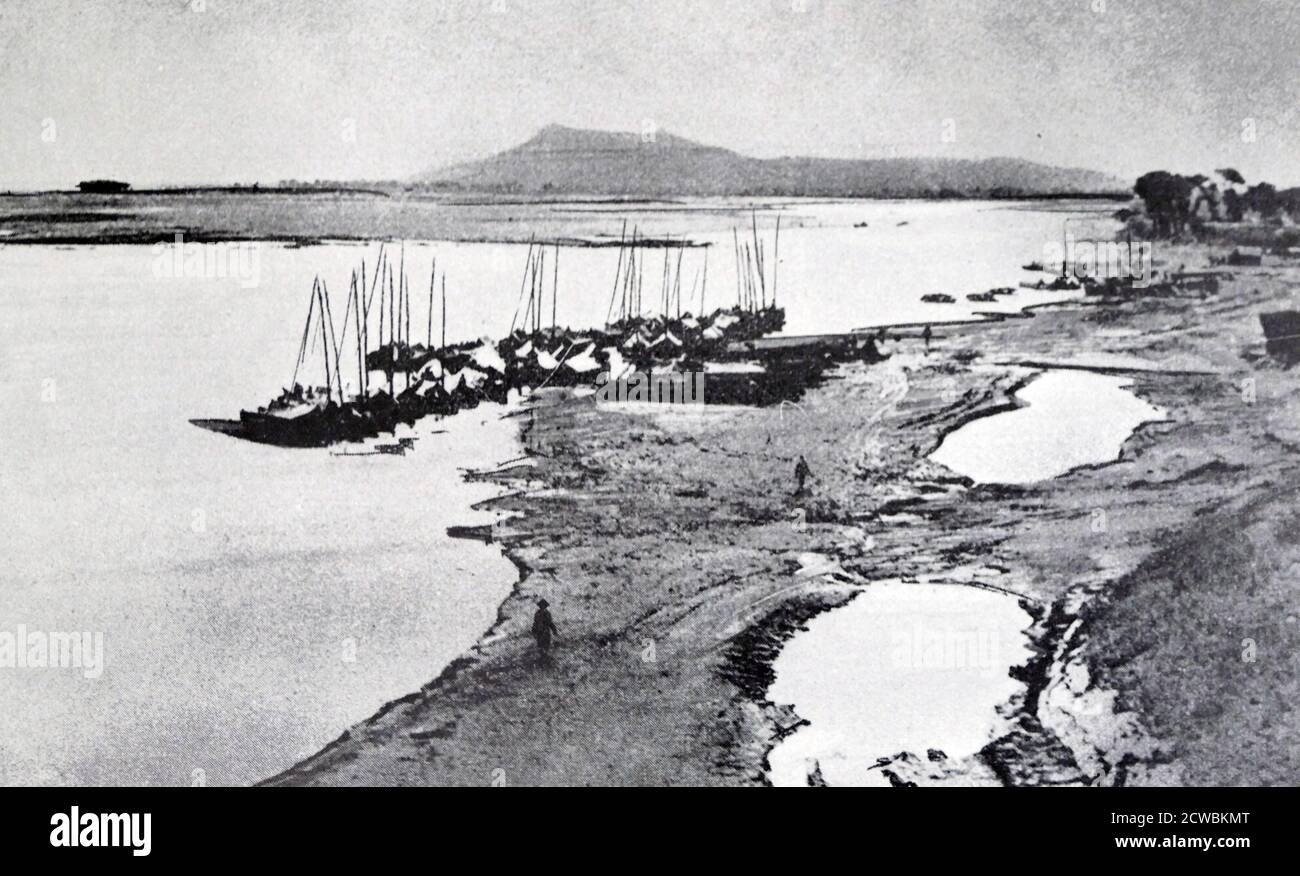 Black and white photo of the River Lou in the Jehol Province of China, scene of violent battles between the Chinese and Japanese. Stock Photohttps://www.alamy.com/image-license-details/?v=1https://www.alamy.com/black-and-white-photo-of-the-river-lou-in-the-jehol-province-of-china-scene-of-violent-battles-between-the-chinese-and-japanese-image377041080.html
Black and white photo of the River Lou in the Jehol Province of China, scene of violent battles between the Chinese and Japanese. Stock Photohttps://www.alamy.com/image-license-details/?v=1https://www.alamy.com/black-and-white-photo-of-the-river-lou-in-the-jehol-province-of-china-scene-of-violent-battles-between-the-chinese-and-japanese-image377041080.htmlRM2CWBKMT–Black and white photo of the River Lou in the Jehol Province of China, scene of violent battles between the Chinese and Japanese.
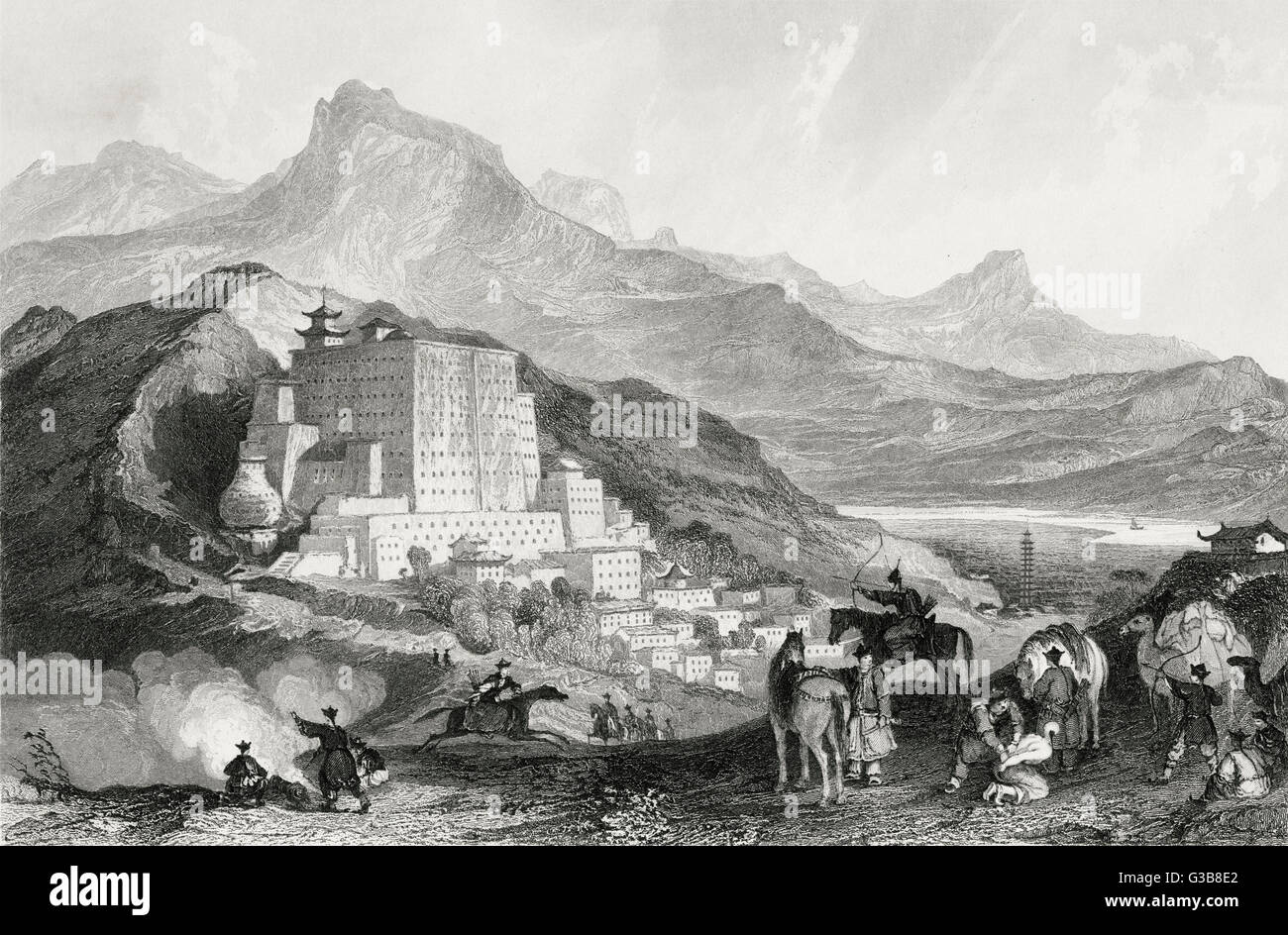 CHINA/CHENG-TE/JEHOL Stock Photohttps://www.alamy.com/image-license-details/?v=1https://www.alamy.com/stock-photo-chinacheng-tejehol-105354314.html
CHINA/CHENG-TE/JEHOL Stock Photohttps://www.alamy.com/image-license-details/?v=1https://www.alamy.com/stock-photo-chinacheng-tejehol-105354314.htmlRMG3B8E2–CHINA/CHENG-TE/JEHOL
 Jehol, China: c. 1933. Japanese troops pursue Chinese General Tang Yu Lin's troops across the frozen Chialaiho river in northern Jehol. Stock Photohttps://www.alamy.com/image-license-details/?v=1https://www.alamy.com/jehol-china-c-1933-japanese-troops-pursue-chinese-general-tang-yu-lins-troops-across-the-frozen-chialaiho-river-in-northern-jehol-image557837167.html
Jehol, China: c. 1933. Japanese troops pursue Chinese General Tang Yu Lin's troops across the frozen Chialaiho river in northern Jehol. Stock Photohttps://www.alamy.com/image-license-details/?v=1https://www.alamy.com/jehol-china-c-1933-japanese-troops-pursue-chinese-general-tang-yu-lins-troops-across-the-frozen-chialaiho-river-in-northern-jehol-image557837167.htmlRM2RBFJYY–Jehol, China: c. 1933. Japanese troops pursue Chinese General Tang Yu Lin's troops across the frozen Chialaiho river in northern Jehol.
 China: Pavilions on the lake, Imperial Summer Villa (Bishu Shanzhuang), Chengde, Hebei Province. In 1703, Chengde was chosen by the Kangxi Emperor as the location for his summer residence. Constructed throughout the eighteenth century, the Mountain Resort was used by both the Yongzheng and Qianlong emperors. The site is currently a UNESCO World Heritage Site. Since the seat of government followed the emperor, Chengde was a political centre of the Chinese empire during these times. Chengde, formerly known as Jehol, reached its height under the Qianlong Emperor (r. 1735-1796). Stock Photohttps://www.alamy.com/image-license-details/?v=1https://www.alamy.com/china-pavilions-on-the-lake-imperial-summer-villa-bishu-shanzhuang-chengde-hebei-province-in-1703-chengde-was-chosen-by-the-kangxi-emperor-as-the-location-for-his-summer-residence-constructed-throughout-the-eighteenth-century-the-mountain-resort-was-used-by-both-the-yongzheng-and-qianlong-emperors-the-site-is-currently-a-unesco-world-heritage-site-since-the-seat-of-government-followed-the-emperor-chengde-was-a-political-centre-of-the-chinese-empire-during-these-times-chengde-formerly-known-as-jehol-reached-its-height-under-the-qianlong-emperor-r-1735-1796-image344239364.html
China: Pavilions on the lake, Imperial Summer Villa (Bishu Shanzhuang), Chengde, Hebei Province. In 1703, Chengde was chosen by the Kangxi Emperor as the location for his summer residence. Constructed throughout the eighteenth century, the Mountain Resort was used by both the Yongzheng and Qianlong emperors. The site is currently a UNESCO World Heritage Site. Since the seat of government followed the emperor, Chengde was a political centre of the Chinese empire during these times. Chengde, formerly known as Jehol, reached its height under the Qianlong Emperor (r. 1735-1796). Stock Photohttps://www.alamy.com/image-license-details/?v=1https://www.alamy.com/china-pavilions-on-the-lake-imperial-summer-villa-bishu-shanzhuang-chengde-hebei-province-in-1703-chengde-was-chosen-by-the-kangxi-emperor-as-the-location-for-his-summer-residence-constructed-throughout-the-eighteenth-century-the-mountain-resort-was-used-by-both-the-yongzheng-and-qianlong-emperors-the-site-is-currently-a-unesco-world-heritage-site-since-the-seat-of-government-followed-the-emperor-chengde-was-a-political-centre-of-the-chinese-empire-during-these-times-chengde-formerly-known-as-jehol-reached-its-height-under-the-qianlong-emperor-r-1735-1796-image344239364.htmlRM2B01CR0–China: Pavilions on the lake, Imperial Summer Villa (Bishu Shanzhuang), Chengde, Hebei Province. In 1703, Chengde was chosen by the Kangxi Emperor as the location for his summer residence. Constructed throughout the eighteenth century, the Mountain Resort was used by both the Yongzheng and Qianlong emperors. The site is currently a UNESCO World Heritage Site. Since the seat of government followed the emperor, Chengde was a political centre of the Chinese empire during these times. Chengde, formerly known as Jehol, reached its height under the Qianlong Emperor (r. 1735-1796).
 The Imperial Summer Villa Park in Chengde, China Stock Photohttps://www.alamy.com/image-license-details/?v=1https://www.alamy.com/stock-photo-the-imperial-summer-villa-park-in-chengde-china-13240497.html
The Imperial Summer Villa Park in Chengde, China Stock Photohttps://www.alamy.com/image-license-details/?v=1https://www.alamy.com/stock-photo-the-imperial-summer-villa-park-in-chengde-china-13240497.htmlRMACX0WP–The Imperial Summer Villa Park in Chengde, China
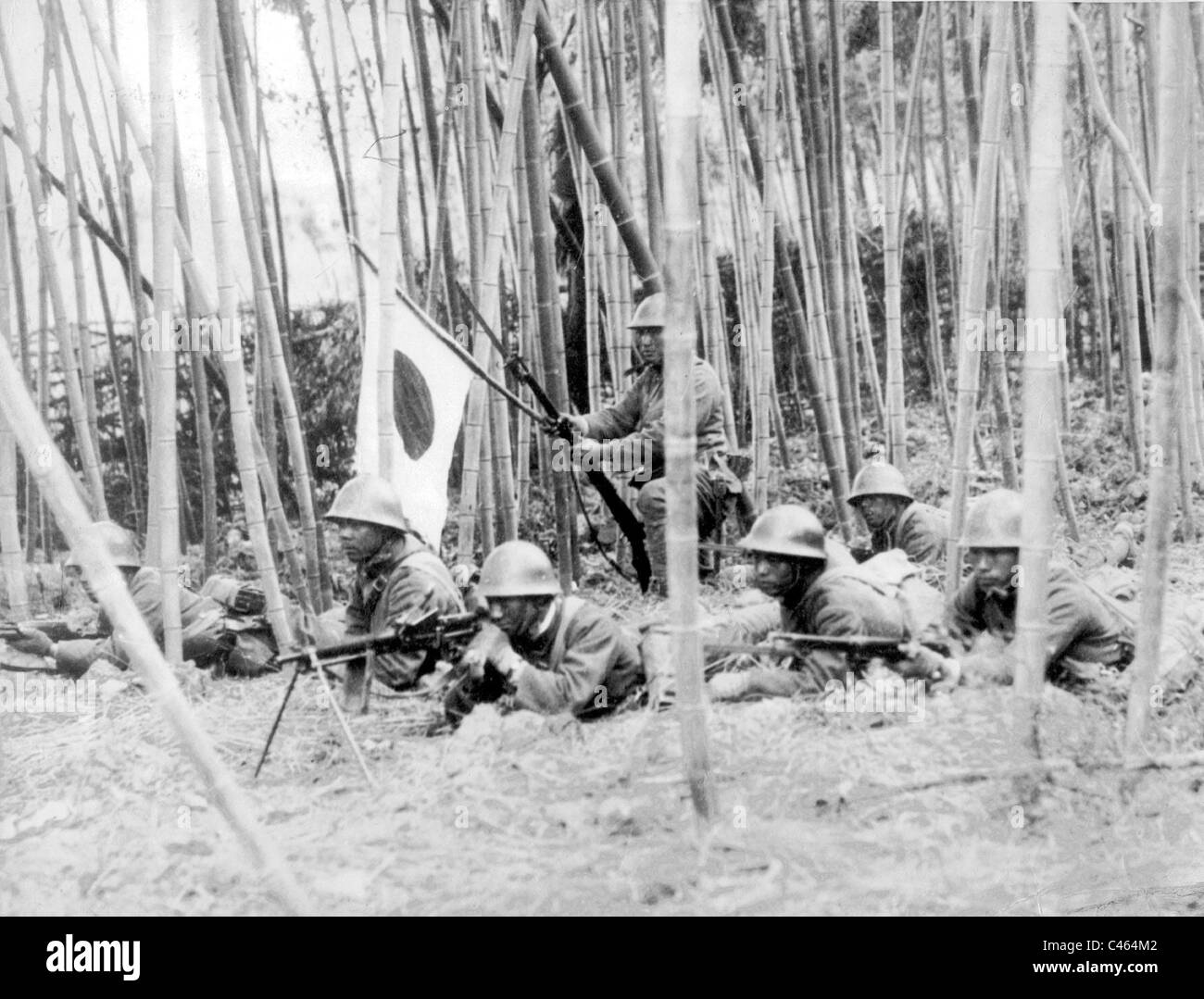 Japanese soldiers fighting in China, 1933 Stock Photohttps://www.alamy.com/image-license-details/?v=1https://www.alamy.com/stock-photo-japanese-soldiers-fighting-in-china-1933-37014770.html
Japanese soldiers fighting in China, 1933 Stock Photohttps://www.alamy.com/image-license-details/?v=1https://www.alamy.com/stock-photo-japanese-soldiers-fighting-in-china-1933-37014770.htmlRMC464M2–Japanese soldiers fighting in China, 1933
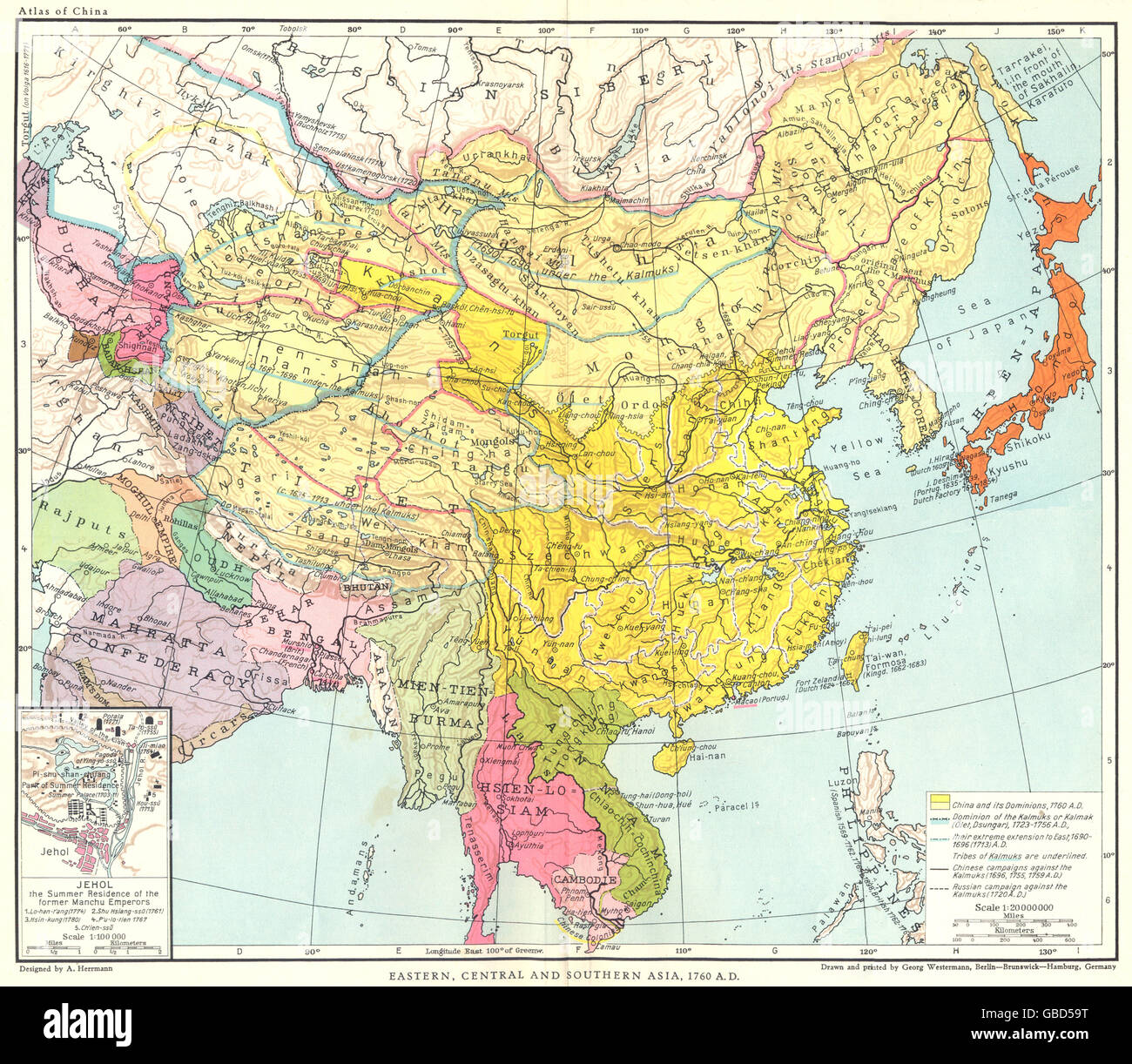 ASIA: East, Central & South Asia, 1760 AD; Inset Jehol, 1935 vintage map Stock Photohttps://www.alamy.com/image-license-details/?v=1https://www.alamy.com/stock-photo-asia-east-central-south-asia-1760-ad-inset-jehol-1935-vintage-map-110312996.html
ASIA: East, Central & South Asia, 1760 AD; Inset Jehol, 1935 vintage map Stock Photohttps://www.alamy.com/image-license-details/?v=1https://www.alamy.com/stock-photo-asia-east-central-south-asia-1760-ad-inset-jehol-1935-vintage-map-110312996.htmlRFGBD59T–ASIA: East, Central & South Asia, 1760 AD; Inset Jehol, 1935 vintage map
 Buildings and Landmarks - China - Potala Su - Jehol Stock Photohttps://www.alamy.com/image-license-details/?v=1https://www.alamy.com/stock-photo-buildings-and-landmarks-china-potala-su-jehol-106608367.html
Buildings and Landmarks - China - Potala Su - Jehol Stock Photohttps://www.alamy.com/image-license-details/?v=1https://www.alamy.com/stock-photo-buildings-and-landmarks-china-potala-su-jehol-106608367.htmlRMG5CC1K–Buildings and Landmarks - China - Potala Su - Jehol
 This is Red China. Cavalry Is Still Important. In many ways the Chinese civil war is an old-fashioned war. Cavalry riding through little mounts, play a big part. This is a People's Army cavalry unit riding over the sandhills of Jehol. 13 December 1947 Stock Photohttps://www.alamy.com/image-license-details/?v=1https://www.alamy.com/this-is-red-china-cavalry-is-still-important-in-many-ways-the-chinese-civil-war-is-an-old-fashioned-war-cavalry-riding-through-little-mounts-play-a-big-part-this-is-a-peoples-army-cavalry-unit-riding-over-the-sandhills-of-jehol-13-december-1947-image623313171.html
This is Red China. Cavalry Is Still Important. In many ways the Chinese civil war is an old-fashioned war. Cavalry riding through little mounts, play a big part. This is a People's Army cavalry unit riding over the sandhills of Jehol. 13 December 1947 Stock Photohttps://www.alamy.com/image-license-details/?v=1https://www.alamy.com/this-is-red-china-cavalry-is-still-important-in-many-ways-the-chinese-civil-war-is-an-old-fashioned-war-cavalry-riding-through-little-mounts-play-a-big-part-this-is-a-peoples-army-cavalry-unit-riding-over-the-sandhills-of-jehol-13-december-1947-image623313171.htmlRM2Y62A8K–This is Red China. Cavalry Is Still Important. In many ways the Chinese civil war is an old-fashioned war. Cavalry riding through little mounts, play a big part. This is a People's Army cavalry unit riding over the sandhills of Jehol. 13 December 1947
 . English: old photo from China 1900-1903, see the file's name for detail. between circa 1900 and circa 1903 796 Imperial Hunting Park near Jehol Stock Photohttps://www.alamy.com/image-license-details/?v=1https://www.alamy.com/english-old-photo-from-china-1900-1903-see-the-files-name-for-detail-between-circa-1900-and-circa-1903-796-imperial-hunting-park-near-jehol-image213392546.html
. English: old photo from China 1900-1903, see the file's name for detail. between circa 1900 and circa 1903 796 Imperial Hunting Park near Jehol Stock Photohttps://www.alamy.com/image-license-details/?v=1https://www.alamy.com/english-old-photo-from-china-1900-1903-see-the-files-name-for-detail-between-circa-1900-and-circa-1903-796-imperial-hunting-park-near-jehol-image213392546.htmlRMPB4TAA–. English: old photo from China 1900-1903, see the file's name for detail. between circa 1900 and circa 1903 796 Imperial Hunting Park near Jehol
 Chinese soldiers from a 'Big Sword Unit' during the Japanese invasion of Jehol Province, China, 1933 Stock Photohttps://www.alamy.com/image-license-details/?v=1https://www.alamy.com/stock-photo-chinese-soldiers-from-a-big-sword-unit-during-the-japanese-invasion-171395348.html
Chinese soldiers from a 'Big Sword Unit' during the Japanese invasion of Jehol Province, China, 1933 Stock Photohttps://www.alamy.com/image-license-details/?v=1https://www.alamy.com/stock-photo-chinese-soldiers-from-a-big-sword-unit-during-the-japanese-invasion-171395348.htmlRMKXRMEC–Chinese soldiers from a 'Big Sword Unit' during the Japanese invasion of Jehol Province, China, 1933
 (231025) -- CANBERRA, Oct. 25, 2023 (Xinhua) -- A Hyphalosaurus fossil, part of the Jehol Biota ecosystem of northeast China between 133 million and 120 million years ago, is displayed at a handover ceremony for the repatriation of Chinese cultural objects at the Chinese embassy in Australian capital Canberra, Oct. 25, 2023. The ceremony witnessed five objects back to China. Among them, three are returned by the Australian government.TO GO WITH 'Handover ceremony for repatriation of Chinese cultural objects held in Australia' (Photo by Chu Chen/Xinhua) Stock Photohttps://www.alamy.com/image-license-details/?v=1https://www.alamy.com/231025-canberra-oct-25-2023-xinhua-a-hyphalosaurus-fossil-part-of-the-jehol-biota-ecosystem-of-northeast-china-between-133-million-and-120-million-years-ago-is-displayed-at-a-handover-ceremony-for-the-repatriation-of-chinese-cultural-objects-at-the-chinese-embassy-in-australian-capital-canberra-oct-25-2023-the-ceremony-witnessed-five-objects-back-to-china-among-them-three-are-returned-by-the-australian-governmentto-go-with-handover-ceremony-for-repatriation-of-chinese-cultural-objects-held-in-australia-photo-by-chu-chenxinhua-image570150253.html
(231025) -- CANBERRA, Oct. 25, 2023 (Xinhua) -- A Hyphalosaurus fossil, part of the Jehol Biota ecosystem of northeast China between 133 million and 120 million years ago, is displayed at a handover ceremony for the repatriation of Chinese cultural objects at the Chinese embassy in Australian capital Canberra, Oct. 25, 2023. The ceremony witnessed five objects back to China. Among them, three are returned by the Australian government.TO GO WITH 'Handover ceremony for repatriation of Chinese cultural objects held in Australia' (Photo by Chu Chen/Xinhua) Stock Photohttps://www.alamy.com/image-license-details/?v=1https://www.alamy.com/231025-canberra-oct-25-2023-xinhua-a-hyphalosaurus-fossil-part-of-the-jehol-biota-ecosystem-of-northeast-china-between-133-million-and-120-million-years-ago-is-displayed-at-a-handover-ceremony-for-the-repatriation-of-chinese-cultural-objects-at-the-chinese-embassy-in-australian-capital-canberra-oct-25-2023-the-ceremony-witnessed-five-objects-back-to-china-among-them-three-are-returned-by-the-australian-governmentto-go-with-handover-ceremony-for-repatriation-of-chinese-cultural-objects-held-in-australia-photo-by-chu-chenxinhua-image570150253.htmlRM2T3GGD1–(231025) -- CANBERRA, Oct. 25, 2023 (Xinhua) -- A Hyphalosaurus fossil, part of the Jehol Biota ecosystem of northeast China between 133 million and 120 million years ago, is displayed at a handover ceremony for the repatriation of Chinese cultural objects at the Chinese embassy in Australian capital Canberra, Oct. 25, 2023. The ceremony witnessed five objects back to China. Among them, three are returned by the Australian government.TO GO WITH 'Handover ceremony for repatriation of Chinese cultural objects held in Australia' (Photo by Chu Chen/Xinhua)
 The Summer Imperial Palace in Chengde, Hebei, China. Stock Photohttps://www.alamy.com/image-license-details/?v=1https://www.alamy.com/the-summer-imperial-palace-in-chengde-hebei-china-image152087351.html
The Summer Imperial Palace in Chengde, Hebei, China. Stock Photohttps://www.alamy.com/image-license-details/?v=1https://www.alamy.com/the-summer-imperial-palace-in-chengde-hebei-china-image152087351.htmlRMJRC4Y3–The Summer Imperial Palace in Chengde, Hebei, China.
![Japanese Soldier, 1933. 'Japan's forceful infiltration into Jehol [Rehe Province, China], coming so soon after her Manchurian annexation, put before the League of Nations a test case'. From "Time To Remember - The Time Of The Monster", 1933 (Reel 3); a documentary film about events of 1933, rise of Roosevelt and Hitler. Stock Photo Japanese Soldier, 1933. 'Japan's forceful infiltration into Jehol [Rehe Province, China], coming so soon after her Manchurian annexation, put before the League of Nations a test case'. From "Time To Remember - The Time Of The Monster", 1933 (Reel 3); a documentary film about events of 1933, rise of Roosevelt and Hitler. Stock Photo](https://c8.alamy.com/comp/2XT34AA/japanese-soldier-1933-japans-forceful-infiltration-into-jehol-rehe-province-china-coming-so-soon-after-her-manchurian-annexation-put-before-the-league-of-nations-a-test-case-from-quottime-to-remember-the-time-of-the-monsterquot-1933-reel-3-a-documentary-film-about-events-of-1933-rise-of-roosevelt-and-hitler-2XT34AA.jpg) Japanese Soldier, 1933. 'Japan's forceful infiltration into Jehol [Rehe Province, China], coming so soon after her Manchurian annexation, put before the League of Nations a test case'. From "Time To Remember - The Time Of The Monster", 1933 (Reel 3); a documentary film about events of 1933, rise of Roosevelt and Hitler. Stock Photohttps://www.alamy.com/image-license-details/?v=1https://www.alamy.com/japanese-soldier-1933-japans-forceful-infiltration-into-jehol-rehe-province-china-coming-so-soon-after-her-manchurian-annexation-put-before-the-league-of-nations-a-test-case-from-quottime-to-remember-the-time-of-the-monsterquot-1933-reel-3-a-documentary-film-about-events-of-1933-rise-of-roosevelt-and-hitler-image617183906.html
Japanese Soldier, 1933. 'Japan's forceful infiltration into Jehol [Rehe Province, China], coming so soon after her Manchurian annexation, put before the League of Nations a test case'. From "Time To Remember - The Time Of The Monster", 1933 (Reel 3); a documentary film about events of 1933, rise of Roosevelt and Hitler. Stock Photohttps://www.alamy.com/image-license-details/?v=1https://www.alamy.com/japanese-soldier-1933-japans-forceful-infiltration-into-jehol-rehe-province-china-coming-so-soon-after-her-manchurian-annexation-put-before-the-league-of-nations-a-test-case-from-quottime-to-remember-the-time-of-the-monsterquot-1933-reel-3-a-documentary-film-about-events-of-1933-rise-of-roosevelt-and-hitler-image617183906.htmlRM2XT34AA–Japanese Soldier, 1933. 'Japan's forceful infiltration into Jehol [Rehe Province, China], coming so soon after her Manchurian annexation, put before the League of Nations a test case'. From "Time To Remember - The Time Of The Monster", 1933 (Reel 3); a documentary film about events of 1933, rise of Roosevelt and Hitler.
 Beijing, China. 28th Nov, 2020. The fossils of Jehol Biota are showed at the Beijing Natural History Museum in Beijing, China on 28th November, 2020.(Photo by TPG/cnsphotos) Credit: TopPhoto/Alamy Live News Stock Photohttps://www.alamy.com/image-license-details/?v=1https://www.alamy.com/beijing-china-28th-nov-2020-the-fossils-of-jehol-biota-are-showed-at-the-beijing-natural-history-museum-in-beijing-china-on-28th-november-2020photo-by-tpgcnsphotos-credit-topphotoalamy-live-news-image387506006.html
Beijing, China. 28th Nov, 2020. The fossils of Jehol Biota are showed at the Beijing Natural History Museum in Beijing, China on 28th November, 2020.(Photo by TPG/cnsphotos) Credit: TopPhoto/Alamy Live News Stock Photohttps://www.alamy.com/image-license-details/?v=1https://www.alamy.com/beijing-china-28th-nov-2020-the-fossils-of-jehol-biota-are-showed-at-the-beijing-natural-history-museum-in-beijing-china-on-28th-november-2020photo-by-tpgcnsphotos-credit-topphotoalamy-live-news-image387506006.htmlRM2DECBT6–Beijing, China. 28th Nov, 2020. The fossils of Jehol Biota are showed at the Beijing Natural History Museum in Beijing, China on 28th November, 2020.(Photo by TPG/cnsphotos) Credit: TopPhoto/Alamy Live News
 Golden Mountain, Chenghu Lake, Chengdu Mountain Resort (aka Escaping-the-heat Imperial Villa), Chengde 承德, Hebei, China Stock Photohttps://www.alamy.com/image-license-details/?v=1https://www.alamy.com/golden-mountain-chenghu-lake-chengdu-mountain-resort-aka-escaping-the-heat-imperial-villa-chengde-hebei-china-image390975340.html
Golden Mountain, Chenghu Lake, Chengdu Mountain Resort (aka Escaping-the-heat Imperial Villa), Chengde 承德, Hebei, China Stock Photohttps://www.alamy.com/image-license-details/?v=1https://www.alamy.com/golden-mountain-chenghu-lake-chengdu-mountain-resort-aka-escaping-the-heat-imperial-villa-chengde-hebei-china-image390975340.htmlRM2DM2D10–Golden Mountain, Chenghu Lake, Chengdu Mountain Resort (aka Escaping-the-heat Imperial Villa), Chengde 承德, Hebei, China
 Gezicht op een deel van het keizerlijk zomerpaleis in Chengde (Jehol) te China View of a part of the imperial summer palace in Chengde (Jehol) to China. Hill landscape with buildings right on the waterfront. In the 18th century the emperors had the early Qing Dynasty build a refuge in the mountains, surrounded by walls. It was provided with parks with lakes, pagodes and palaces. Title in Chinese links. Manufacturer : printmaker Matteo Ripaprentmaker: Zhang Kuinaar design: Shen YuPlaats manufacture: China Date: 1712 - 1714 Material: Chinese paper Technique: engra (printing process) Dimensions: Stock Photohttps://www.alamy.com/image-license-details/?v=1https://www.alamy.com/gezicht-op-een-deel-van-het-keizerlijk-zomerpaleis-in-chengde-jehol-te-china-view-of-a-part-of-the-imperial-summer-palace-in-chengde-jehol-to-china-hill-landscape-with-buildings-right-on-the-waterfront-in-the-18th-century-the-emperors-had-the-early-qing-dynasty-build-a-refuge-in-the-mountains-surrounded-by-walls-it-was-provided-with-parks-with-lakes-pagodes-and-palaces-title-in-chinese-links-manufacturer-printmaker-matteo-ripaprentmaker-zhang-kuinaar-design-shen-yuplaats-manufacture-china-date-1712-1714-material-chinese-paper-technique-engra-printing-process-dimensions-image348402761.html
Gezicht op een deel van het keizerlijk zomerpaleis in Chengde (Jehol) te China View of a part of the imperial summer palace in Chengde (Jehol) to China. Hill landscape with buildings right on the waterfront. In the 18th century the emperors had the early Qing Dynasty build a refuge in the mountains, surrounded by walls. It was provided with parks with lakes, pagodes and palaces. Title in Chinese links. Manufacturer : printmaker Matteo Ripaprentmaker: Zhang Kuinaar design: Shen YuPlaats manufacture: China Date: 1712 - 1714 Material: Chinese paper Technique: engra (printing process) Dimensions: Stock Photohttps://www.alamy.com/image-license-details/?v=1https://www.alamy.com/gezicht-op-een-deel-van-het-keizerlijk-zomerpaleis-in-chengde-jehol-te-china-view-of-a-part-of-the-imperial-summer-palace-in-chengde-jehol-to-china-hill-landscape-with-buildings-right-on-the-waterfront-in-the-18th-century-the-emperors-had-the-early-qing-dynasty-build-a-refuge-in-the-mountains-surrounded-by-walls-it-was-provided-with-parks-with-lakes-pagodes-and-palaces-title-in-chinese-links-manufacturer-printmaker-matteo-ripaprentmaker-zhang-kuinaar-design-shen-yuplaats-manufacture-china-date-1712-1714-material-chinese-paper-technique-engra-printing-process-dimensions-image348402761.htmlRM2B6R37N–Gezicht op een deel van het keizerlijk zomerpaleis in Chengde (Jehol) te China View of a part of the imperial summer palace in Chengde (Jehol) to China. Hill landscape with buildings right on the waterfront. In the 18th century the emperors had the early Qing Dynasty build a refuge in the mountains, surrounded by walls. It was provided with parks with lakes, pagodes and palaces. Title in Chinese links. Manufacturer : printmaker Matteo Ripaprentmaker: Zhang Kuinaar design: Shen YuPlaats manufacture: China Date: 1712 - 1714 Material: Chinese paper Technique: engra (printing process) Dimensions:
 View of a part of the Imperial Summer Palace in Chengde (Jehol) in China, Matteo Ripa, After Shen Yu, 1712 - 1714 print View of a part of the imperial summer palace, in a hilly landscape, in Chengde (Jehol) in China. In the 18th century, the emperors of the early Qing Dynasty had a refuge in the mountains, surrounded by walls. It was provided with parks with lakes, pagodas and palaces. China China paper engraving city-view, and landscape with man-made constructions Chengde Stock Photohttps://www.alamy.com/image-license-details/?v=1https://www.alamy.com/view-of-a-part-of-the-imperial-summer-palace-in-chengde-jehol-in-china-matteo-ripa-after-shen-yu-1712-1714-print-view-of-a-part-of-the-imperial-summer-palace-in-a-hilly-landscape-in-chengde-jehol-in-china-in-the-18th-century-the-emperors-of-the-early-qing-dynasty-had-a-refuge-in-the-mountains-surrounded-by-walls-it-was-provided-with-parks-with-lakes-pagodas-and-palaces-china-china-paper-engraving-city-view-and-landscape-with-man-made-constructions-chengde-image593848604.html
View of a part of the Imperial Summer Palace in Chengde (Jehol) in China, Matteo Ripa, After Shen Yu, 1712 - 1714 print View of a part of the imperial summer palace, in a hilly landscape, in Chengde (Jehol) in China. In the 18th century, the emperors of the early Qing Dynasty had a refuge in the mountains, surrounded by walls. It was provided with parks with lakes, pagodas and palaces. China China paper engraving city-view, and landscape with man-made constructions Chengde Stock Photohttps://www.alamy.com/image-license-details/?v=1https://www.alamy.com/view-of-a-part-of-the-imperial-summer-palace-in-chengde-jehol-in-china-matteo-ripa-after-shen-yu-1712-1714-print-view-of-a-part-of-the-imperial-summer-palace-in-a-hilly-landscape-in-chengde-jehol-in-china-in-the-18th-century-the-emperors-of-the-early-qing-dynasty-had-a-refuge-in-the-mountains-surrounded-by-walls-it-was-provided-with-parks-with-lakes-pagodas-and-palaces-china-china-paper-engraving-city-view-and-landscape-with-man-made-constructions-chengde-image593848604.htmlRM2WE43XM–View of a part of the Imperial Summer Palace in Chengde (Jehol) in China, Matteo Ripa, After Shen Yu, 1712 - 1714 print View of a part of the imperial summer palace, in a hilly landscape, in Chengde (Jehol) in China. In the 18th century, the emperors of the early Qing Dynasty had a refuge in the mountains, surrounded by walls. It was provided with parks with lakes, pagodas and palaces. China China paper engraving city-view, and landscape with man-made constructions Chengde
 Japanese Death ' s head company occupy Kupeikou . The celebrated Japanese Death's Head company , otherwise known as the Dokurotai Company , headed by Lieutenant Ikegami , carrying their famous flag with the skull and crossed bones design , routed Chinese troops in the Jehol district and captured the town of Kupeikou . Lieutenant Ikegami head of the Death ' s head company with the company flag after occupying Kupeikou . 26 April 1933 Stock Photohttps://www.alamy.com/image-license-details/?v=1https://www.alamy.com/japanese-death-s-head-company-occupy-kupeikou-the-celebrated-japanese-deaths-head-company-otherwise-known-as-the-dokurotai-company-headed-by-lieutenant-ikegami-carrying-their-famous-flag-with-the-skull-and-crossed-bones-design-routed-chinese-troops-in-the-jehol-district-and-captured-the-town-of-kupeikou-lieutenant-ikegami-head-of-the-death-s-head-company-with-the-company-flag-after-occupying-kupeikou-26-april-1933-image359644006.html
Japanese Death ' s head company occupy Kupeikou . The celebrated Japanese Death's Head company , otherwise known as the Dokurotai Company , headed by Lieutenant Ikegami , carrying their famous flag with the skull and crossed bones design , routed Chinese troops in the Jehol district and captured the town of Kupeikou . Lieutenant Ikegami head of the Death ' s head company with the company flag after occupying Kupeikou . 26 April 1933 Stock Photohttps://www.alamy.com/image-license-details/?v=1https://www.alamy.com/japanese-death-s-head-company-occupy-kupeikou-the-celebrated-japanese-deaths-head-company-otherwise-known-as-the-dokurotai-company-headed-by-lieutenant-ikegami-carrying-their-famous-flag-with-the-skull-and-crossed-bones-design-routed-chinese-troops-in-the-jehol-district-and-captured-the-town-of-kupeikou-lieutenant-ikegami-head-of-the-death-s-head-company-with-the-company-flag-after-occupying-kupeikou-26-april-1933-image359644006.htmlRM2BW35GP–Japanese Death ' s head company occupy Kupeikou . The celebrated Japanese Death's Head company , otherwise known as the Dokurotai Company , headed by Lieutenant Ikegami , carrying their famous flag with the skull and crossed bones design , routed Chinese troops in the Jehol district and captured the town of Kupeikou . Lieutenant Ikegami head of the Death ' s head company with the company flag after occupying Kupeikou . 26 April 1933
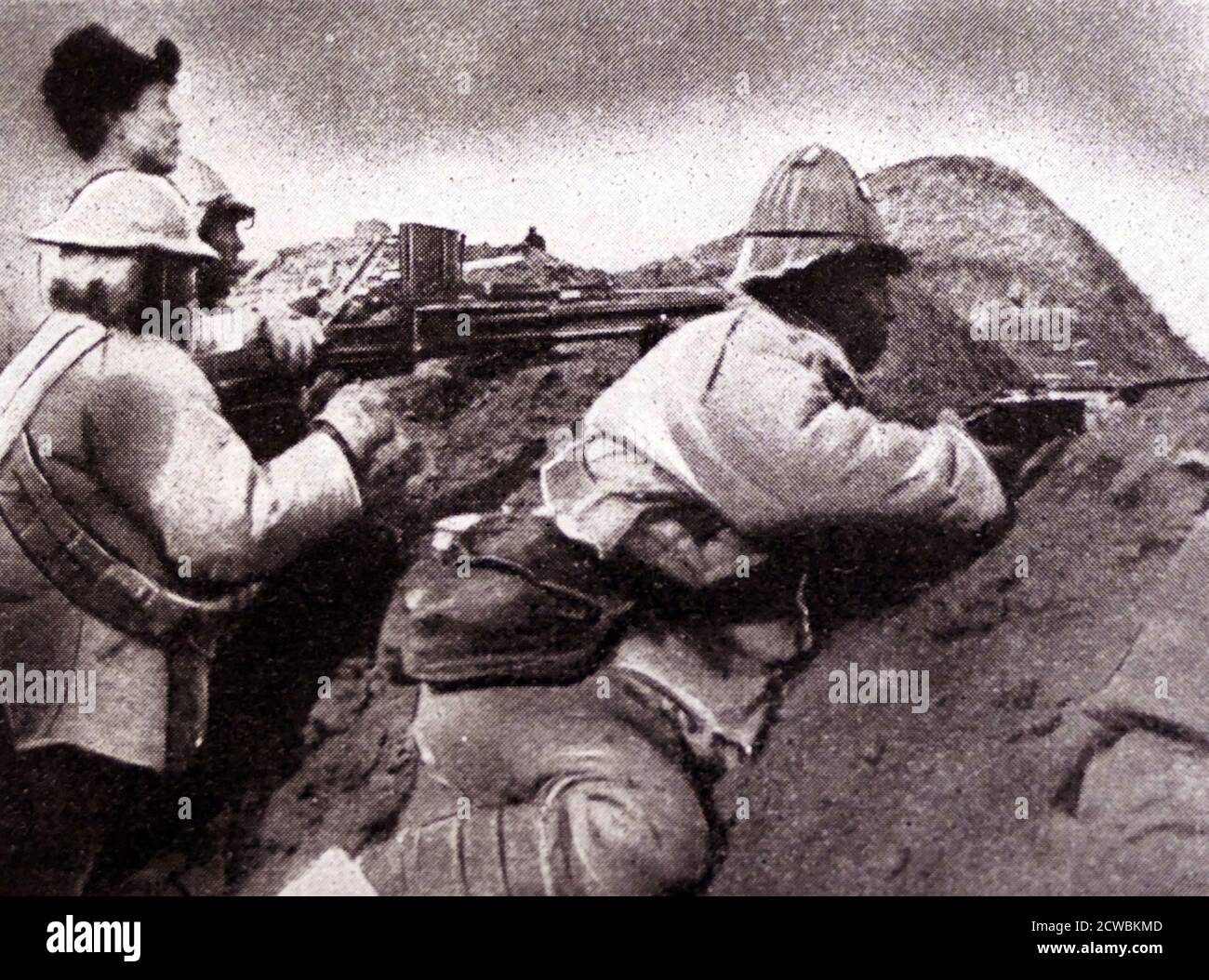 Black and white photo of Chinese soldiers in a trench on the Jehol Front during the Second Sino-Japanese War (1937-1945). Stock Photohttps://www.alamy.com/image-license-details/?v=1https://www.alamy.com/black-and-white-photo-of-chinese-soldiers-in-a-trench-on-the-jehol-front-during-the-second-sino-japanese-war-1937-1945-image377041069.html
Black and white photo of Chinese soldiers in a trench on the Jehol Front during the Second Sino-Japanese War (1937-1945). Stock Photohttps://www.alamy.com/image-license-details/?v=1https://www.alamy.com/black-and-white-photo-of-chinese-soldiers-in-a-trench-on-the-jehol-front-during-the-second-sino-japanese-war-1937-1945-image377041069.htmlRM2CWBKMD–Black and white photo of Chinese soldiers in a trench on the Jehol Front during the Second Sino-Japanese War (1937-1945).
 CHENGDE CITY - OCTOBER 20: Rehe River scenery in chengde mountain resort, on october 20, 2014, Chengde City, Hebei Province, China Stock Photohttps://www.alamy.com/image-license-details/?v=1https://www.alamy.com/chengde-city-october-20-rehe-river-scenery-in-chengde-mountain-resort-on-october-20-2014-chengde-city-hebei-province-china-image571488003.html
CHENGDE CITY - OCTOBER 20: Rehe River scenery in chengde mountain resort, on october 20, 2014, Chengde City, Hebei Province, China Stock Photohttps://www.alamy.com/image-license-details/?v=1https://www.alamy.com/chengde-city-october-20-rehe-river-scenery-in-chengde-mountain-resort-on-october-20-2014-chengde-city-hebei-province-china-image571488003.htmlRF2T5NENR–CHENGDE CITY - OCTOBER 20: Rehe River scenery in chengde mountain resort, on october 20, 2014, Chengde City, Hebei Province, China
 Replica of a Chinese temple at the World Exhibition in Chicago, 1933 Stock Photohttps://www.alamy.com/image-license-details/?v=1https://www.alamy.com/stock-photo-replica-of-a-chinese-temple-at-the-world-exhibition-in-chicago-1933-48399212.html
Replica of a Chinese temple at the World Exhibition in Chicago, 1933 Stock Photohttps://www.alamy.com/image-license-details/?v=1https://www.alamy.com/stock-photo-replica-of-a-chinese-temple-at-the-world-exhibition-in-chicago-1933-48399212.htmlRMCPMNK8–Replica of a Chinese temple at the World Exhibition in Chicago, 1933
 China: Pavilions on the lake, Imperial Summer Villa (Bishu Shanzhuang), Chengde, Hebei Province. In 1703, Chengde was chosen by the Kangxi Emperor as the location for his summer residence. Constructed throughout the eighteenth century, the Mountain Resort was used by both the Yongzheng and Qianlong emperors. The site is currently a UNESCO World Heritage Site. Since the seat of government followed the emperor, Chengde was a political centre of the Chinese empire during these times. Chengde, formerly known as Jehol, reached its height under the Qianlong Emperor (r. 1735-1796). Stock Photohttps://www.alamy.com/image-license-details/?v=1https://www.alamy.com/china-pavilions-on-the-lake-imperial-summer-villa-bishu-shanzhuang-chengde-hebei-province-in-1703-chengde-was-chosen-by-the-kangxi-emperor-as-the-location-for-his-summer-residence-constructed-throughout-the-eighteenth-century-the-mountain-resort-was-used-by-both-the-yongzheng-and-qianlong-emperors-the-site-is-currently-a-unesco-world-heritage-site-since-the-seat-of-government-followed-the-emperor-chengde-was-a-political-centre-of-the-chinese-empire-during-these-times-chengde-formerly-known-as-jehol-reached-its-height-under-the-qianlong-emperor-r-1735-1796-image344239363.html
China: Pavilions on the lake, Imperial Summer Villa (Bishu Shanzhuang), Chengde, Hebei Province. In 1703, Chengde was chosen by the Kangxi Emperor as the location for his summer residence. Constructed throughout the eighteenth century, the Mountain Resort was used by both the Yongzheng and Qianlong emperors. The site is currently a UNESCO World Heritage Site. Since the seat of government followed the emperor, Chengde was a political centre of the Chinese empire during these times. Chengde, formerly known as Jehol, reached its height under the Qianlong Emperor (r. 1735-1796). Stock Photohttps://www.alamy.com/image-license-details/?v=1https://www.alamy.com/china-pavilions-on-the-lake-imperial-summer-villa-bishu-shanzhuang-chengde-hebei-province-in-1703-chengde-was-chosen-by-the-kangxi-emperor-as-the-location-for-his-summer-residence-constructed-throughout-the-eighteenth-century-the-mountain-resort-was-used-by-both-the-yongzheng-and-qianlong-emperors-the-site-is-currently-a-unesco-world-heritage-site-since-the-seat-of-government-followed-the-emperor-chengde-was-a-political-centre-of-the-chinese-empire-during-these-times-chengde-formerly-known-as-jehol-reached-its-height-under-the-qianlong-emperor-r-1735-1796-image344239363.htmlRM2B01CPY–China: Pavilions on the lake, Imperial Summer Villa (Bishu Shanzhuang), Chengde, Hebei Province. In 1703, Chengde was chosen by the Kangxi Emperor as the location for his summer residence. Constructed throughout the eighteenth century, the Mountain Resort was used by both the Yongzheng and Qianlong emperors. The site is currently a UNESCO World Heritage Site. Since the seat of government followed the emperor, Chengde was a political centre of the Chinese empire during these times. Chengde, formerly known as Jehol, reached its height under the Qianlong Emperor (r. 1735-1796).
 The Imperial Summer Villa Park in Chengde, China Stock Photohttps://www.alamy.com/image-license-details/?v=1https://www.alamy.com/stock-photo-the-imperial-summer-villa-park-in-chengde-china-13240490.html
The Imperial Summer Villa Park in Chengde, China Stock Photohttps://www.alamy.com/image-license-details/?v=1https://www.alamy.com/stock-photo-the-imperial-summer-villa-park-in-chengde-china-13240490.htmlRMACX0TY–The Imperial Summer Villa Park in Chengde, China
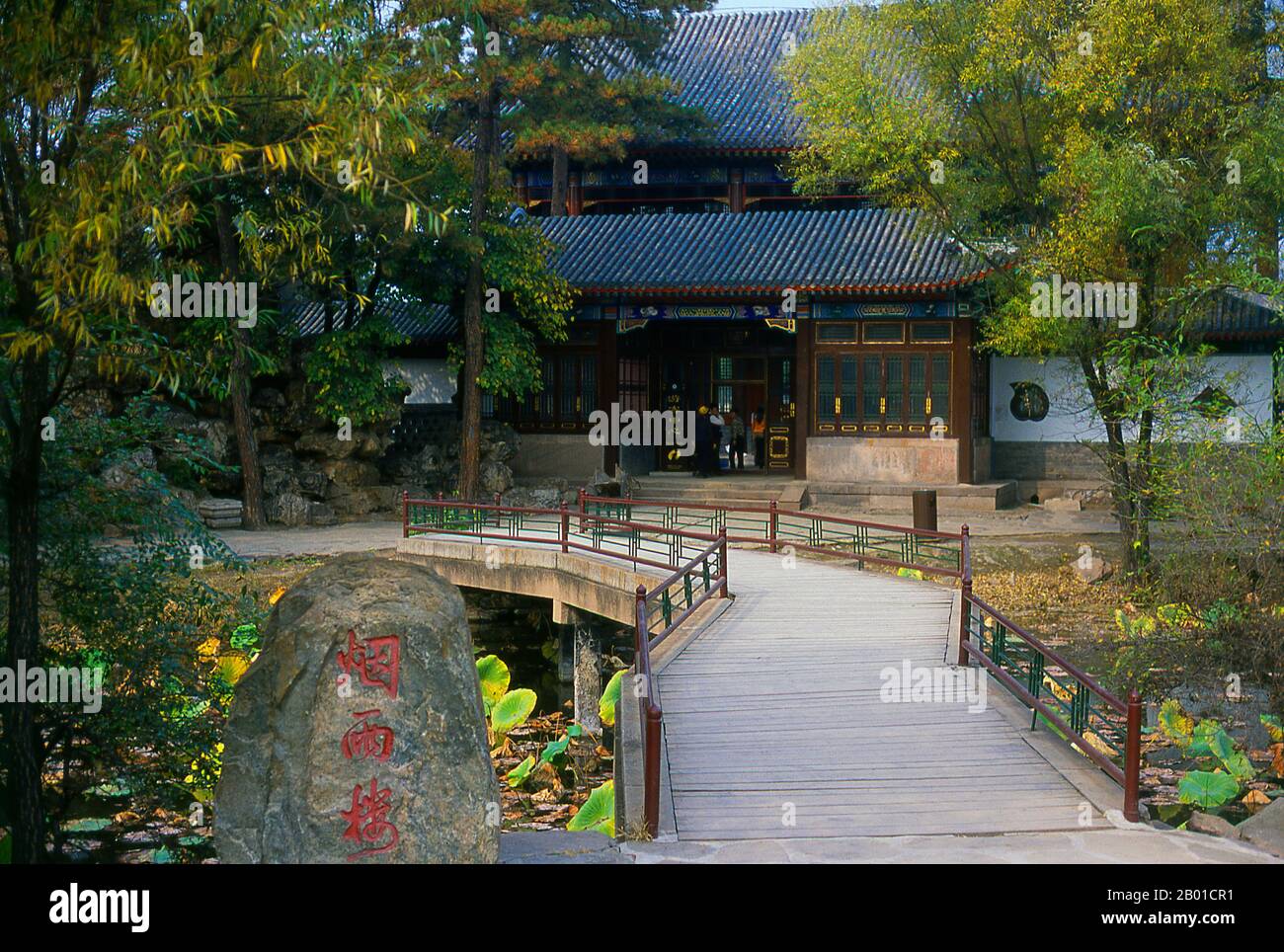 China: Pavilion on the lake, Imperial Summer Villa (Bishu Shanzhuang), Chengde, Hebei Province. In 1703, Chengde was chosen by the Kangxi Emperor as the location for his summer residence. Constructed throughout the eighteenth century, the Mountain Resort was used by both the Yongzheng and Qianlong emperors. The site is currently a UNESCO World Heritage Site. Since the seat of government followed the emperor, Chengde was a political centre of the Chinese empire during these times. Chengde, formerly known as Jehol, reached its height under the Qianlong Emperor (r. 1735-1796). Stock Photohttps://www.alamy.com/image-license-details/?v=1https://www.alamy.com/china-pavilion-on-the-lake-imperial-summer-villa-bishu-shanzhuang-chengde-hebei-province-in-1703-chengde-was-chosen-by-the-kangxi-emperor-as-the-location-for-his-summer-residence-constructed-throughout-the-eighteenth-century-the-mountain-resort-was-used-by-both-the-yongzheng-and-qianlong-emperors-the-site-is-currently-a-unesco-world-heritage-site-since-the-seat-of-government-followed-the-emperor-chengde-was-a-political-centre-of-the-chinese-empire-during-these-times-chengde-formerly-known-as-jehol-reached-its-height-under-the-qianlong-emperor-r-1735-1796-image344239365.html
China: Pavilion on the lake, Imperial Summer Villa (Bishu Shanzhuang), Chengde, Hebei Province. In 1703, Chengde was chosen by the Kangxi Emperor as the location for his summer residence. Constructed throughout the eighteenth century, the Mountain Resort was used by both the Yongzheng and Qianlong emperors. The site is currently a UNESCO World Heritage Site. Since the seat of government followed the emperor, Chengde was a political centre of the Chinese empire during these times. Chengde, formerly known as Jehol, reached its height under the Qianlong Emperor (r. 1735-1796). Stock Photohttps://www.alamy.com/image-license-details/?v=1https://www.alamy.com/china-pavilion-on-the-lake-imperial-summer-villa-bishu-shanzhuang-chengde-hebei-province-in-1703-chengde-was-chosen-by-the-kangxi-emperor-as-the-location-for-his-summer-residence-constructed-throughout-the-eighteenth-century-the-mountain-resort-was-used-by-both-the-yongzheng-and-qianlong-emperors-the-site-is-currently-a-unesco-world-heritage-site-since-the-seat-of-government-followed-the-emperor-chengde-was-a-political-centre-of-the-chinese-empire-during-these-times-chengde-formerly-known-as-jehol-reached-its-height-under-the-qianlong-emperor-r-1735-1796-image344239365.htmlRM2B01CR1–China: Pavilion on the lake, Imperial Summer Villa (Bishu Shanzhuang), Chengde, Hebei Province. In 1703, Chengde was chosen by the Kangxi Emperor as the location for his summer residence. Constructed throughout the eighteenth century, the Mountain Resort was used by both the Yongzheng and Qianlong emperors. The site is currently a UNESCO World Heritage Site. Since the seat of government followed the emperor, Chengde was a political centre of the Chinese empire during these times. Chengde, formerly known as Jehol, reached its height under the Qianlong Emperor (r. 1735-1796).
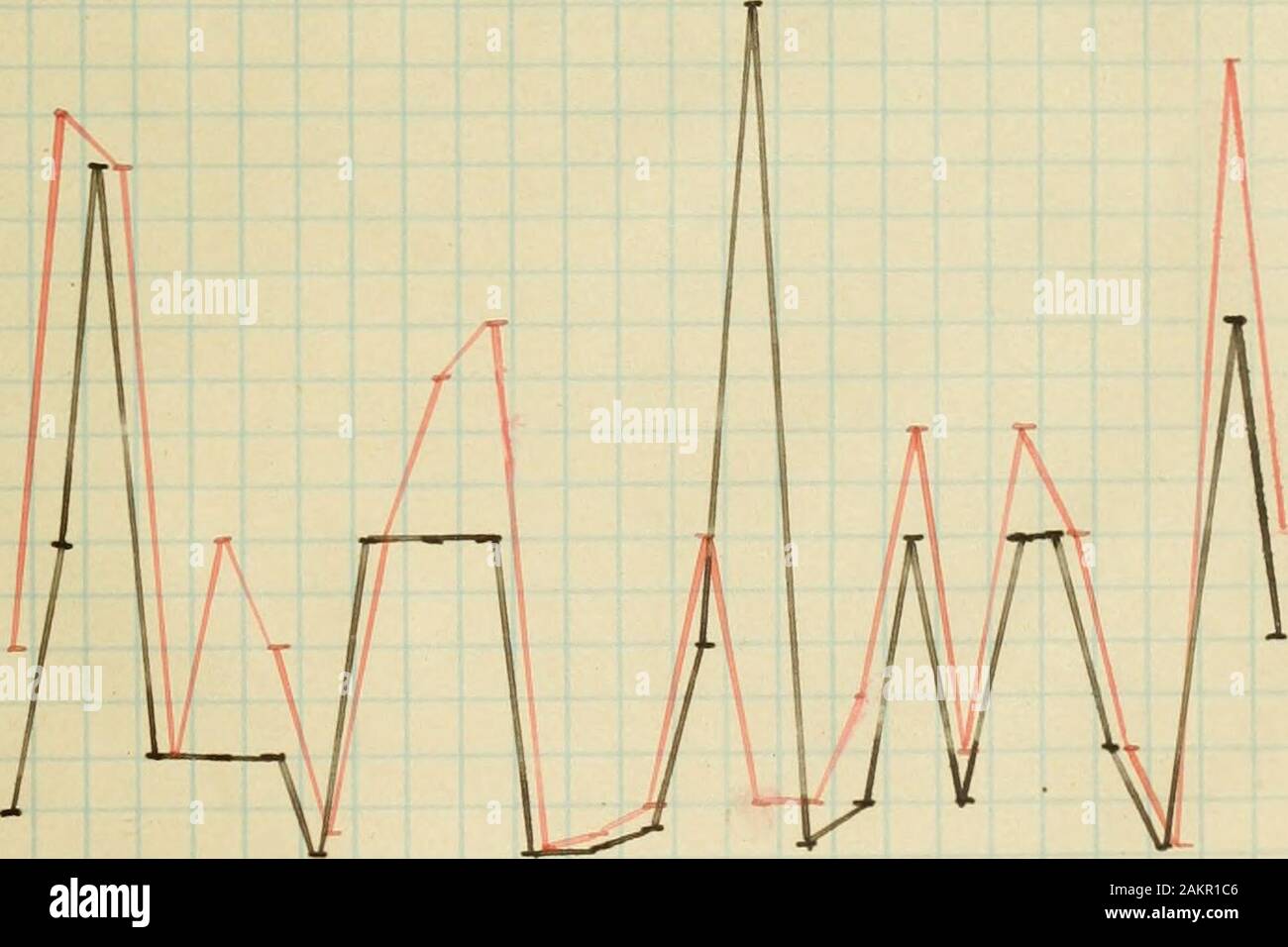 The training of teachers in China . Iui 3,035 Gho-Kiang 13,813 Ghih-Li ir?,07P ChinG-Ghao 1, ^31 Pens-Tien G, 1?4 Pu-Kien 4.17^^ Hel -Luns-KlariG 516 Mo-Nan 6, ?05 Hu-Ifan ?^,B75 Hu-Pei •, GZ-P lis in- Cianc; 107 Jehol 43 ^ Kan-r,u 1,1^3 Kl fins-Si 6, ^ ? Kuans-Tunc > Kuei-ChovV ,:..4- Shan-Si 7,576 Shon-Tun^^ ?«,o4 Shen-r>l •7,434 nuei-Yiian IBo Szu-Chuarx 15,4CC Yxm-Nan 5,7--^ Chart 8 School authorities Unit1 nr>o jers Sc she >ol mana; 1, 000 60 A Goanarison of thenumbers of teachers and administrative officers in all the modern schools in different provinces ofChina in the year Stock Photohttps://www.alamy.com/image-license-details/?v=1https://www.alamy.com/the-training-of-teachers-in-china-iui-3035-gho-kiang-13813-ghih-li-ir07p-ching-ghao-1-31-pens-tien-g-14-pu-kien-417-hel-luns-klarig-516-mo-nan-6-05-hu-ifan-b75-hu-pei-gz-p-lis-in-cianc-107-jehol-43-kan-ru-113-kl-fins-si-6-kuans-tunc-gt-kuei-chovv-4-shan-si-7576-shon-tun-o4-shen-rgtl-7434-nuei-yiian-ibo-szu-chuarx-154cc-yxm-nan-57-chart-8-school-authorities-unit1-nrgto-jers-sc-she-gtol-mana-1-000-60-a-goanarison-of-thenumbers-of-teachers-and-administrative-officers-in-all-the-modern-schools-in-different-provinces-ofchina-in-the-year-image339181478.html
The training of teachers in China . Iui 3,035 Gho-Kiang 13,813 Ghih-Li ir?,07P ChinG-Ghao 1, ^31 Pens-Tien G, 1?4 Pu-Kien 4.17^^ Hel -Luns-KlariG 516 Mo-Nan 6, ?05 Hu-Ifan ?^,B75 Hu-Pei •, GZ-P lis in- Cianc; 107 Jehol 43 ^ Kan-r,u 1,1^3 Kl fins-Si 6, ^ ? Kuans-Tunc > Kuei-ChovV ,:..4- Shan-Si 7,576 Shon-Tun^^ ?«,o4 Shen-r>l •7,434 nuei-Yiian IBo Szu-Chuarx 15,4CC Yxm-Nan 5,7--^ Chart 8 School authorities Unit1 nr>o jers Sc she >ol mana; 1, 000 60 A Goanarison of thenumbers of teachers and administrative officers in all the modern schools in different provinces ofChina in the year Stock Photohttps://www.alamy.com/image-license-details/?v=1https://www.alamy.com/the-training-of-teachers-in-china-iui-3035-gho-kiang-13813-ghih-li-ir07p-ching-ghao-1-31-pens-tien-g-14-pu-kien-417-hel-luns-klarig-516-mo-nan-6-05-hu-ifan-b75-hu-pei-gz-p-lis-in-cianc-107-jehol-43-kan-ru-113-kl-fins-si-6-kuans-tunc-gt-kuei-chovv-4-shan-si-7576-shon-tun-o4-shen-rgtl-7434-nuei-yiian-ibo-szu-chuarx-154cc-yxm-nan-57-chart-8-school-authorities-unit1-nrgto-jers-sc-she-gtol-mana-1-000-60-a-goanarison-of-thenumbers-of-teachers-and-administrative-officers-in-all-the-modern-schools-in-different-provinces-ofchina-in-the-year-image339181478.htmlRM2AKR1C6–The training of teachers in China . Iui 3,035 Gho-Kiang 13,813 Ghih-Li ir?,07P ChinG-Ghao 1, ^31 Pens-Tien G, 1?4 Pu-Kien 4.17^^ Hel -Luns-KlariG 516 Mo-Nan 6, ?05 Hu-Ifan ?^,B75 Hu-Pei •, GZ-P lis in- Cianc; 107 Jehol 43 ^ Kan-r,u 1,1^3 Kl fins-Si 6, ^ ? Kuans-Tunc > Kuei-ChovV ,:..4- Shan-Si 7,576 Shon-Tun^^ ?«,o4 Shen-r>l •7,434 nuei-Yiian IBo Szu-Chuarx 15,4CC Yxm-Nan 5,7--^ Chart 8 School authorities Unit1 nr>o jers Sc she >ol mana; 1, 000 60 A Goanarison of thenumbers of teachers and administrative officers in all the modern schools in different provinces ofChina in the year
 China: Pleasure boat on the lake, Imperial Summer Villa (Bishu Shanzhuang), Chengde, Hebei Province. In 1703, Chengde was chosen by the Kangxi Emperor as the location for his summer residence. Constructed throughout the eighteenth century, the Mountain Resort was used by both the Yongzheng and Qianlong emperors. The site is currently a UNESCO World Heritage Site. Since the seat of government followed the emperor, Chengde was a political center of the Chinese empire during these times. Chengde, formerly known as Jehol, reached its height under the Qianlong Emperor (r. 1735-1796). Stock Photohttps://www.alamy.com/image-license-details/?v=1https://www.alamy.com/china-pleasure-boat-on-the-lake-imperial-summer-villa-bishu-shanzhuang-chengde-hebei-province-in-1703-chengde-was-chosen-by-the-kangxi-emperor-as-the-location-for-his-summer-residence-constructed-throughout-the-eighteenth-century-the-mountain-resort-was-used-by-both-the-yongzheng-and-qianlong-emperors-the-site-is-currently-a-unesco-world-heritage-site-since-the-seat-of-government-followed-the-emperor-chengde-was-a-political-center-of-the-chinese-empire-during-these-times-chengde-formerly-known-as-jehol-reached-its-height-under-the-qianlong-emperor-r-1735-1796-image344239366.html
China: Pleasure boat on the lake, Imperial Summer Villa (Bishu Shanzhuang), Chengde, Hebei Province. In 1703, Chengde was chosen by the Kangxi Emperor as the location for his summer residence. Constructed throughout the eighteenth century, the Mountain Resort was used by both the Yongzheng and Qianlong emperors. The site is currently a UNESCO World Heritage Site. Since the seat of government followed the emperor, Chengde was a political center of the Chinese empire during these times. Chengde, formerly known as Jehol, reached its height under the Qianlong Emperor (r. 1735-1796). Stock Photohttps://www.alamy.com/image-license-details/?v=1https://www.alamy.com/china-pleasure-boat-on-the-lake-imperial-summer-villa-bishu-shanzhuang-chengde-hebei-province-in-1703-chengde-was-chosen-by-the-kangxi-emperor-as-the-location-for-his-summer-residence-constructed-throughout-the-eighteenth-century-the-mountain-resort-was-used-by-both-the-yongzheng-and-qianlong-emperors-the-site-is-currently-a-unesco-world-heritage-site-since-the-seat-of-government-followed-the-emperor-chengde-was-a-political-center-of-the-chinese-empire-during-these-times-chengde-formerly-known-as-jehol-reached-its-height-under-the-qianlong-emperor-r-1735-1796-image344239366.htmlRM2B01CR2–China: Pleasure boat on the lake, Imperial Summer Villa (Bishu Shanzhuang), Chengde, Hebei Province. In 1703, Chengde was chosen by the Kangxi Emperor as the location for his summer residence. Constructed throughout the eighteenth century, the Mountain Resort was used by both the Yongzheng and Qianlong emperors. The site is currently a UNESCO World Heritage Site. Since the seat of government followed the emperor, Chengde was a political center of the Chinese empire during these times. Chengde, formerly known as Jehol, reached its height under the Qianlong Emperor (r. 1735-1796).
 . HOUND REPRESENTED ON HAN BAS-RELIEF OF THE HSIAO T'ANG SHAN (from a rubbing) may be that specimens may be found with the chiefs of some of the Mongol tribes but with the gradual extinction of the big game of China it is unlikely that many of the hounds exist. Representations of these hounds are found in certain pictures of the K'ang Hsi and Ch'ien Lung period from Jehol. Laufer figures hunting-dogs of the Han period from rubbings taken from bas-reliefs at Hsiao T'ang Shan. These may be roughly dated 150 B.C. One of these bas-reliefs, of colossal size, shows eight hunters afoot, carr5dng nets Stock Photohttps://www.alamy.com/image-license-details/?v=1https://www.alamy.com/hound-represented-on-han-bas-relief-of-the-hsiao-tang-shan-from-a-rubbing-may-be-that-specimens-may-be-found-with-the-chiefs-of-some-of-the-mongol-tribes-but-with-the-gradual-extinction-of-the-big-game-of-china-it-is-unlikely-that-many-of-the-hounds-exist-representations-of-these-hounds-are-found-in-certain-pictures-of-the-kang-hsi-and-chien-lung-period-from-jehol-laufer-figures-hunting-dogs-of-the-han-period-from-rubbings-taken-from-bas-reliefs-at-hsiao-tang-shan-these-may-be-roughly-dated-150-bc-one-of-these-bas-reliefs-of-colossal-size-shows-eight-hunters-afoot-carr5dng-nets-image179905086.html
. HOUND REPRESENTED ON HAN BAS-RELIEF OF THE HSIAO T'ANG SHAN (from a rubbing) may be that specimens may be found with the chiefs of some of the Mongol tribes but with the gradual extinction of the big game of China it is unlikely that many of the hounds exist. Representations of these hounds are found in certain pictures of the K'ang Hsi and Ch'ien Lung period from Jehol. Laufer figures hunting-dogs of the Han period from rubbings taken from bas-reliefs at Hsiao T'ang Shan. These may be roughly dated 150 B.C. One of these bas-reliefs, of colossal size, shows eight hunters afoot, carr5dng nets Stock Photohttps://www.alamy.com/image-license-details/?v=1https://www.alamy.com/hound-represented-on-han-bas-relief-of-the-hsiao-tang-shan-from-a-rubbing-may-be-that-specimens-may-be-found-with-the-chiefs-of-some-of-the-mongol-tribes-but-with-the-gradual-extinction-of-the-big-game-of-china-it-is-unlikely-that-many-of-the-hounds-exist-representations-of-these-hounds-are-found-in-certain-pictures-of-the-kang-hsi-and-chien-lung-period-from-jehol-laufer-figures-hunting-dogs-of-the-han-period-from-rubbings-taken-from-bas-reliefs-at-hsiao-tang-shan-these-may-be-roughly-dated-150-bc-one-of-these-bas-reliefs-of-colossal-size-shows-eight-hunters-afoot-carr5dng-nets-image179905086.htmlRMMCKANJ–. HOUND REPRESENTED ON HAN BAS-RELIEF OF THE HSIAO T'ANG SHAN (from a rubbing) may be that specimens may be found with the chiefs of some of the Mongol tribes but with the gradual extinction of the big game of China it is unlikely that many of the hounds exist. Representations of these hounds are found in certain pictures of the K'ang Hsi and Ch'ien Lung period from Jehol. Laufer figures hunting-dogs of the Han period from rubbings taken from bas-reliefs at Hsiao T'ang Shan. These may be roughly dated 150 B.C. One of these bas-reliefs, of colossal size, shows eight hunters afoot, carr5dng nets
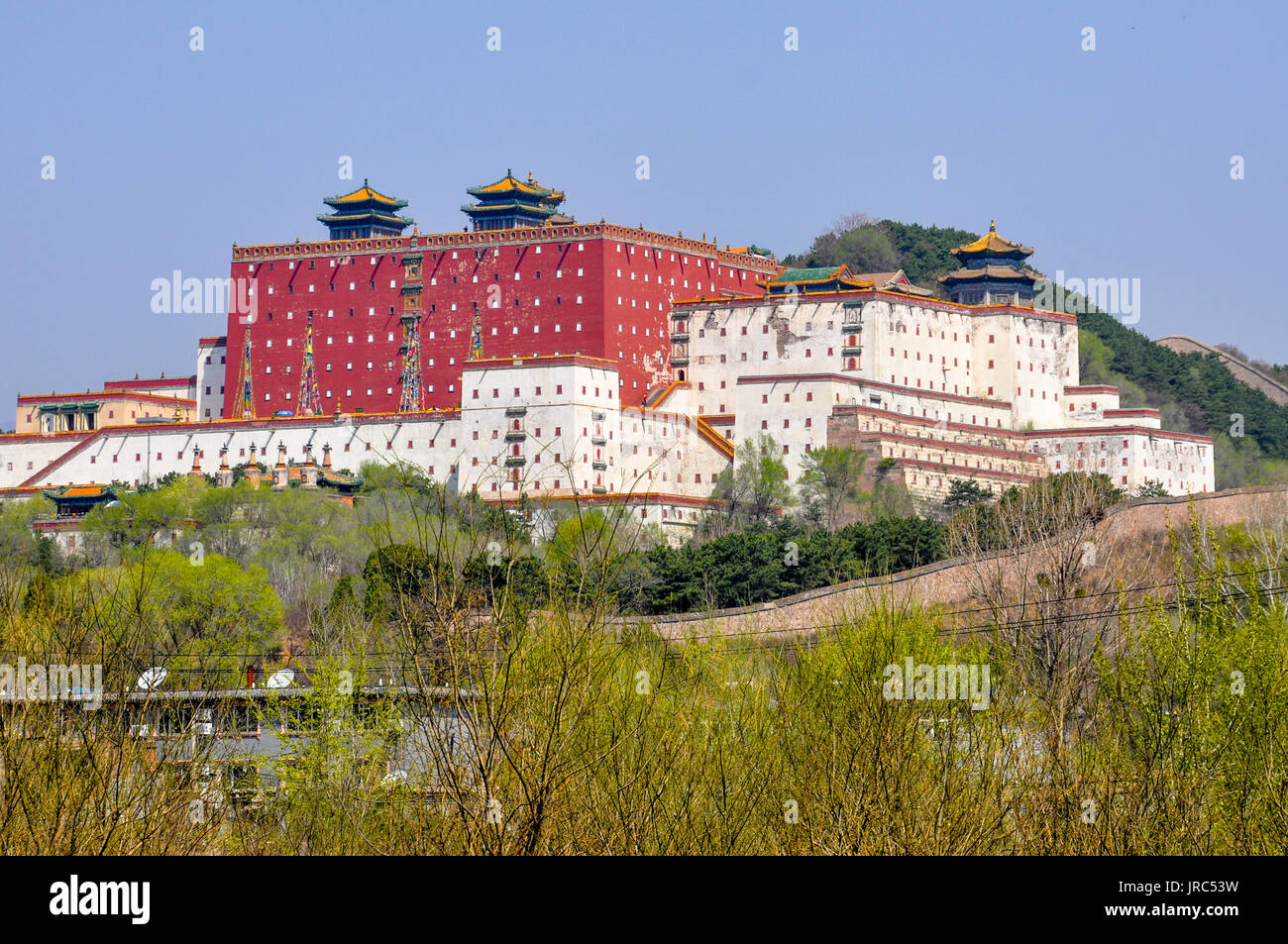 The Summer Imperial Palace in Chengde, Hebei, China. Stock Photohttps://www.alamy.com/image-license-details/?v=1https://www.alamy.com/the-summer-imperial-palace-in-chengde-hebei-china-image152087485.html
The Summer Imperial Palace in Chengde, Hebei, China. Stock Photohttps://www.alamy.com/image-license-details/?v=1https://www.alamy.com/the-summer-imperial-palace-in-chengde-hebei-china-image152087485.htmlRMJRC53W–The Summer Imperial Palace in Chengde, Hebei, China.
![Group of Japanese Soldiers with Supplies, 1933. 'Japan's forceful infiltration into Jehol [Rehe Province, China], coming so soon after her Manchurian annexation, put before the League of Nations a test case'. From "Time To Remember - The Time Of The Monster", 1933 (Reel 3); a documentary film about events of 1933, rise of Roosevelt and Hitler. Stock Photo Group of Japanese Soldiers with Supplies, 1933. 'Japan's forceful infiltration into Jehol [Rehe Province, China], coming so soon after her Manchurian annexation, put before the League of Nations a test case'. From "Time To Remember - The Time Of The Monster", 1933 (Reel 3); a documentary film about events of 1933, rise of Roosevelt and Hitler. Stock Photo](https://c8.alamy.com/comp/2XT34FJ/group-of-japanese-soldiers-with-supplies-1933-japans-forceful-infiltration-into-jehol-rehe-province-china-coming-so-soon-after-her-manchurian-annexation-put-before-the-league-of-nations-a-test-case-from-quottime-to-remember-the-time-of-the-monsterquot-1933-reel-3-a-documentary-film-about-events-of-1933-rise-of-roosevelt-and-hitler-2XT34FJ.jpg) Group of Japanese Soldiers with Supplies, 1933. 'Japan's forceful infiltration into Jehol [Rehe Province, China], coming so soon after her Manchurian annexation, put before the League of Nations a test case'. From "Time To Remember - The Time Of The Monster", 1933 (Reel 3); a documentary film about events of 1933, rise of Roosevelt and Hitler. Stock Photohttps://www.alamy.com/image-license-details/?v=1https://www.alamy.com/group-of-japanese-soldiers-with-supplies-1933-japans-forceful-infiltration-into-jehol-rehe-province-china-coming-so-soon-after-her-manchurian-annexation-put-before-the-league-of-nations-a-test-case-from-quottime-to-remember-the-time-of-the-monsterquot-1933-reel-3-a-documentary-film-about-events-of-1933-rise-of-roosevelt-and-hitler-image617184054.html
Group of Japanese Soldiers with Supplies, 1933. 'Japan's forceful infiltration into Jehol [Rehe Province, China], coming so soon after her Manchurian annexation, put before the League of Nations a test case'. From "Time To Remember - The Time Of The Monster", 1933 (Reel 3); a documentary film about events of 1933, rise of Roosevelt and Hitler. Stock Photohttps://www.alamy.com/image-license-details/?v=1https://www.alamy.com/group-of-japanese-soldiers-with-supplies-1933-japans-forceful-infiltration-into-jehol-rehe-province-china-coming-so-soon-after-her-manchurian-annexation-put-before-the-league-of-nations-a-test-case-from-quottime-to-remember-the-time-of-the-monsterquot-1933-reel-3-a-documentary-film-about-events-of-1933-rise-of-roosevelt-and-hitler-image617184054.htmlRM2XT34FJ–Group of Japanese Soldiers with Supplies, 1933. 'Japan's forceful infiltration into Jehol [Rehe Province, China], coming so soon after her Manchurian annexation, put before the League of Nations a test case'. From "Time To Remember - The Time Of The Monster", 1933 (Reel 3); a documentary film about events of 1933, rise of Roosevelt and Hitler.
 Beijing, China. 28th Nov, 2020. The fossils of Jehol Biota are showed at the Beijing Natural History Museum in Beijing, China on 28th November, 2020.(Photo by TPG/cnsphotos) Credit: TopPhoto/Alamy Live News Stock Photohttps://www.alamy.com/image-license-details/?v=1https://www.alamy.com/beijing-china-28th-nov-2020-the-fossils-of-jehol-biota-are-showed-at-the-beijing-natural-history-museum-in-beijing-china-on-28th-november-2020photo-by-tpgcnsphotos-credit-topphotoalamy-live-news-image387506003.html
Beijing, China. 28th Nov, 2020. The fossils of Jehol Biota are showed at the Beijing Natural History Museum in Beijing, China on 28th November, 2020.(Photo by TPG/cnsphotos) Credit: TopPhoto/Alamy Live News Stock Photohttps://www.alamy.com/image-license-details/?v=1https://www.alamy.com/beijing-china-28th-nov-2020-the-fossils-of-jehol-biota-are-showed-at-the-beijing-natural-history-museum-in-beijing-china-on-28th-november-2020photo-by-tpgcnsphotos-credit-topphotoalamy-live-news-image387506003.htmlRM2DECBT3–Beijing, China. 28th Nov, 2020. The fossils of Jehol Biota are showed at the Beijing Natural History Museum in Beijing, China on 28th November, 2020.(Photo by TPG/cnsphotos) Credit: TopPhoto/Alamy Live News
 Golden Mountain, Chenghu Lake, Chengdu Mountain Resort (aka Escaping-the-heat Imperial Villa), Chengde 承德, Hebei, China Stock Photohttps://www.alamy.com/image-license-details/?v=1https://www.alamy.com/golden-mountain-chenghu-lake-chengdu-mountain-resort-aka-escaping-the-heat-imperial-villa-chengde-hebei-china-image390975331.html
Golden Mountain, Chenghu Lake, Chengdu Mountain Resort (aka Escaping-the-heat Imperial Villa), Chengde 承德, Hebei, China Stock Photohttps://www.alamy.com/image-license-details/?v=1https://www.alamy.com/golden-mountain-chenghu-lake-chengdu-mountain-resort-aka-escaping-the-heat-imperial-villa-chengde-hebei-china-image390975331.htmlRM2DM2D0K–Golden Mountain, Chenghu Lake, Chengdu Mountain Resort (aka Escaping-the-heat Imperial Villa), Chengde 承德, Hebei, China
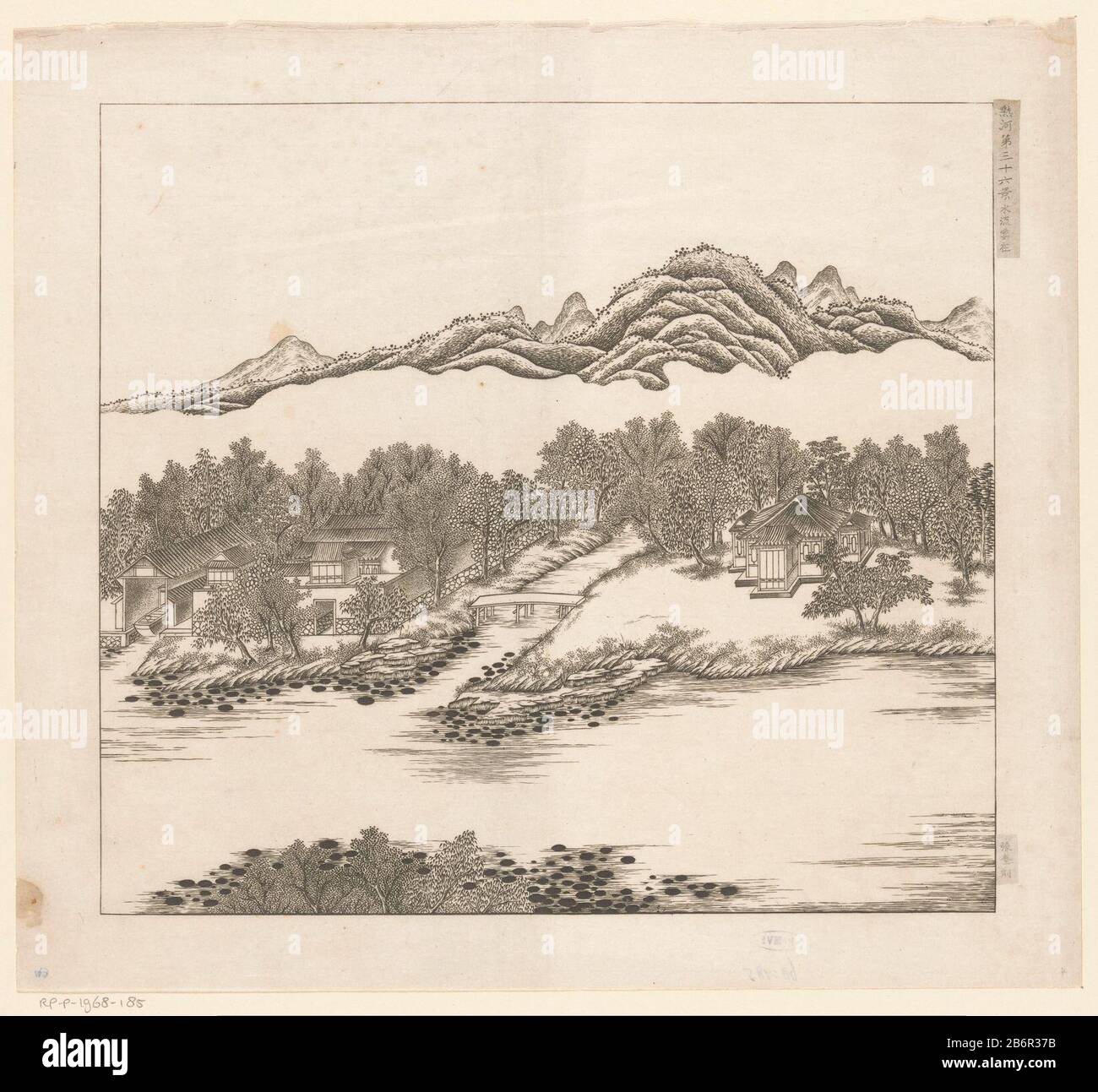 Gezicht op een deel van het keizerlijk zomerpaleis in Chengde (Jehol) te China View of a part of the imperial summer palace in Chengde (Jehol) to China. Several buildings on the waterfront. In the background hills in the mist. In the 18th century the emperors had the early Qing Dynasty build a refuge in the mountains, surrounded by walls. It was provided with parks with lakes, pagodes and palaces. Title in Chinese right and rechtsonder. Manufacturer : printmaker Matteo Ripaprentmaker: Zhang Kui (listed property) to design: Shen YuPlaats manufacture: China Date: 1712 - 1714 Physical features: c Stock Photohttps://www.alamy.com/image-license-details/?v=1https://www.alamy.com/gezicht-op-een-deel-van-het-keizerlijk-zomerpaleis-in-chengde-jehol-te-china-view-of-a-part-of-the-imperial-summer-palace-in-chengde-jehol-to-china-several-buildings-on-the-waterfront-in-the-background-hills-in-the-mist-in-the-18th-century-the-emperors-had-the-early-qing-dynasty-build-a-refuge-in-the-mountains-surrounded-by-walls-it-was-provided-with-parks-with-lakes-pagodes-and-palaces-title-in-chinese-right-and-rechtsonder-manufacturer-printmaker-matteo-ripaprentmaker-zhang-kui-listed-property-to-design-shen-yuplaats-manufacture-china-date-1712-1714-physical-features-c-image348402751.html
Gezicht op een deel van het keizerlijk zomerpaleis in Chengde (Jehol) te China View of a part of the imperial summer palace in Chengde (Jehol) to China. Several buildings on the waterfront. In the background hills in the mist. In the 18th century the emperors had the early Qing Dynasty build a refuge in the mountains, surrounded by walls. It was provided with parks with lakes, pagodes and palaces. Title in Chinese right and rechtsonder. Manufacturer : printmaker Matteo Ripaprentmaker: Zhang Kui (listed property) to design: Shen YuPlaats manufacture: China Date: 1712 - 1714 Physical features: c Stock Photohttps://www.alamy.com/image-license-details/?v=1https://www.alamy.com/gezicht-op-een-deel-van-het-keizerlijk-zomerpaleis-in-chengde-jehol-te-china-view-of-a-part-of-the-imperial-summer-palace-in-chengde-jehol-to-china-several-buildings-on-the-waterfront-in-the-background-hills-in-the-mist-in-the-18th-century-the-emperors-had-the-early-qing-dynasty-build-a-refuge-in-the-mountains-surrounded-by-walls-it-was-provided-with-parks-with-lakes-pagodes-and-palaces-title-in-chinese-right-and-rechtsonder-manufacturer-printmaker-matteo-ripaprentmaker-zhang-kui-listed-property-to-design-shen-yuplaats-manufacture-china-date-1712-1714-physical-features-c-image348402751.htmlRM2B6R37B–Gezicht op een deel van het keizerlijk zomerpaleis in Chengde (Jehol) te China View of a part of the imperial summer palace in Chengde (Jehol) to China. Several buildings on the waterfront. In the background hills in the mist. In the 18th century the emperors had the early Qing Dynasty build a refuge in the mountains, surrounded by walls. It was provided with parks with lakes, pagodes and palaces. Title in Chinese right and rechtsonder. Manufacturer : printmaker Matteo Ripaprentmaker: Zhang Kui (listed property) to design: Shen YuPlaats manufacture: China Date: 1712 - 1714 Physical features: c
 View of a part of the Imperial Summer Palace in Chengde (Jehol) in China, Matteo Ripa, After Shen Yu, 1712 - 1714 print View of a part of the imperial summer palace, between hills and on the waterfront, in Chengde (Jehol) in China. In the 18th century, the emperors of the early Qing Dynasty had a refuge in the mountains, surrounded by walls. It was provided with parks with lakes, pagodas and palaces. China China paper engraving city-view, and landscape with man-made constructions Chengde Stock Photohttps://www.alamy.com/image-license-details/?v=1https://www.alamy.com/view-of-a-part-of-the-imperial-summer-palace-in-chengde-jehol-in-china-matteo-ripa-after-shen-yu-1712-1714-print-view-of-a-part-of-the-imperial-summer-palace-between-hills-and-on-the-waterfront-in-chengde-jehol-in-china-in-the-18th-century-the-emperors-of-the-early-qing-dynasty-had-a-refuge-in-the-mountains-surrounded-by-walls-it-was-provided-with-parks-with-lakes-pagodas-and-palaces-china-china-paper-engraving-city-view-and-landscape-with-man-made-constructions-chengde-image593838139.html
View of a part of the Imperial Summer Palace in Chengde (Jehol) in China, Matteo Ripa, After Shen Yu, 1712 - 1714 print View of a part of the imperial summer palace, between hills and on the waterfront, in Chengde (Jehol) in China. In the 18th century, the emperors of the early Qing Dynasty had a refuge in the mountains, surrounded by walls. It was provided with parks with lakes, pagodas and palaces. China China paper engraving city-view, and landscape with man-made constructions Chengde Stock Photohttps://www.alamy.com/image-license-details/?v=1https://www.alamy.com/view-of-a-part-of-the-imperial-summer-palace-in-chengde-jehol-in-china-matteo-ripa-after-shen-yu-1712-1714-print-view-of-a-part-of-the-imperial-summer-palace-between-hills-and-on-the-waterfront-in-chengde-jehol-in-china-in-the-18th-century-the-emperors-of-the-early-qing-dynasty-had-a-refuge-in-the-mountains-surrounded-by-walls-it-was-provided-with-parks-with-lakes-pagodas-and-palaces-china-china-paper-engraving-city-view-and-landscape-with-man-made-constructions-chengde-image593838139.htmlRM2WE3JGY–View of a part of the Imperial Summer Palace in Chengde (Jehol) in China, Matteo Ripa, After Shen Yu, 1712 - 1714 print View of a part of the imperial summer palace, between hills and on the waterfront, in Chengde (Jehol) in China. In the 18th century, the emperors of the early Qing Dynasty had a refuge in the mountains, surrounded by walls. It was provided with parks with lakes, pagodas and palaces. China China paper engraving city-view, and landscape with man-made constructions Chengde
 Japanese Death ' s head company occupy Kupeikou . The celebrated Japanese Death's Head company , otherwise known as the Dokurotai Company , headed by Lieutenant Ikegami , carrying their famous flag with the skull and crossed bones design , routed Chinese troops in the Jehol district and captured the town of Kupeikou . Lieutenant Ikegami head of the Death ' s head company with the company flag after occupying Kupeikou . 26 April 1933 Stock Photohttps://www.alamy.com/image-license-details/?v=1https://www.alamy.com/japanese-death-s-head-company-occupy-kupeikou-the-celebrated-japanese-deaths-head-company-otherwise-known-as-the-dokurotai-company-headed-by-lieutenant-ikegami-carrying-their-famous-flag-with-the-skull-and-crossed-bones-design-routed-chinese-troops-in-the-jehol-district-and-captured-the-town-of-kupeikou-lieutenant-ikegami-head-of-the-death-s-head-company-with-the-company-flag-after-occupying-kupeikou-26-april-1933-image359644001.html
Japanese Death ' s head company occupy Kupeikou . The celebrated Japanese Death's Head company , otherwise known as the Dokurotai Company , headed by Lieutenant Ikegami , carrying their famous flag with the skull and crossed bones design , routed Chinese troops in the Jehol district and captured the town of Kupeikou . Lieutenant Ikegami head of the Death ' s head company with the company flag after occupying Kupeikou . 26 April 1933 Stock Photohttps://www.alamy.com/image-license-details/?v=1https://www.alamy.com/japanese-death-s-head-company-occupy-kupeikou-the-celebrated-japanese-deaths-head-company-otherwise-known-as-the-dokurotai-company-headed-by-lieutenant-ikegami-carrying-their-famous-flag-with-the-skull-and-crossed-bones-design-routed-chinese-troops-in-the-jehol-district-and-captured-the-town-of-kupeikou-lieutenant-ikegami-head-of-the-death-s-head-company-with-the-company-flag-after-occupying-kupeikou-26-april-1933-image359644001.htmlRM2BW35GH–Japanese Death ' s head company occupy Kupeikou . The celebrated Japanese Death's Head company , otherwise known as the Dokurotai Company , headed by Lieutenant Ikegami , carrying their famous flag with the skull and crossed bones design , routed Chinese troops in the Jehol district and captured the town of Kupeikou . Lieutenant Ikegami head of the Death ' s head company with the company flag after occupying Kupeikou . 26 April 1933
 Black and white photo of a contingent of Japanese soldiers during the Second Sino-Japanese War (1937-1945). Stock Photohttps://www.alamy.com/image-license-details/?v=1https://www.alamy.com/black-and-white-photo-of-a-contingent-of-japanese-soldiers-during-the-second-sino-japanese-war-1937-1945-image377041066.html
Black and white photo of a contingent of Japanese soldiers during the Second Sino-Japanese War (1937-1945). Stock Photohttps://www.alamy.com/image-license-details/?v=1https://www.alamy.com/black-and-white-photo-of-a-contingent-of-japanese-soldiers-during-the-second-sino-japanese-war-1937-1945-image377041066.htmlRM2CWBKMA–Black and white photo of a contingent of Japanese soldiers during the Second Sino-Japanese War (1937-1945).
 CHENGDE CITY - OCTOBER 20: Rehe River stone tablets in chengde mountain resort, on october 20, 2014, Chengde City, Hebei Province, China Stock Photohttps://www.alamy.com/image-license-details/?v=1https://www.alamy.com/chengde-city-october-20-rehe-river-stone-tablets-in-chengde-mountain-resort-on-october-20-2014-chengde-city-hebei-province-china-image571488010.html
CHENGDE CITY - OCTOBER 20: Rehe River stone tablets in chengde mountain resort, on october 20, 2014, Chengde City, Hebei Province, China Stock Photohttps://www.alamy.com/image-license-details/?v=1https://www.alamy.com/chengde-city-october-20-rehe-river-stone-tablets-in-chengde-mountain-resort-on-october-20-2014-chengde-city-hebei-province-china-image571488010.htmlRF2T5NEP2–CHENGDE CITY - OCTOBER 20: Rehe River stone tablets in chengde mountain resort, on october 20, 2014, Chengde City, Hebei Province, China
 The Imperial Summer Villa Park in Chengde, China Stock Photohttps://www.alamy.com/image-license-details/?v=1https://www.alamy.com/stock-photo-the-imperial-summer-villa-park-in-chengde-china-13240493.html
The Imperial Summer Villa Park in Chengde, China Stock Photohttps://www.alamy.com/image-license-details/?v=1https://www.alamy.com/stock-photo-the-imperial-summer-villa-park-in-chengde-china-13240493.htmlRMACX0WJ–The Imperial Summer Villa Park in Chengde, China
 The training of teachers in China . 9,697,07G 2,844,579 11,261,412 Ghing-Chao 1,188,583 1,188,495 2,639,965 Feng-Tien 3,516,937 3,055,761 3,130,386 Pu-Kien 839,589 033,343 1,496,707 Hei-Lung-Kiang 341,370 340,005 684,930 Ho-NrJi 1,033,407 1,060,042 2,988,095 Hu-Nan 2,051,160 2,172,009 7,606,052 Hu-Pei 1,004,405 1,074,130 1,665,192 Hsin-Kigmg 51,811 51,811 114,931 Jehol 02,778 05,105 • 177,100 Kan-Su 115,877 112,874 576,718 Klang-Si 1,040,206 1,100,212 3,492,064 Kiang-Su 3,135,-370 3,148,288 7,798,039 Kirln 781,53n !?61,700 1,081,474 Kuang-Si 542,577 560,504 1,391,856 Kuang-Tung 3,156,148 2,050 Stock Photohttps://www.alamy.com/image-license-details/?v=1https://www.alamy.com/the-training-of-teachers-in-china-969707g-2844579-11261412-ghing-chao-1188583-1188495-2639965-feng-tien-3516937-3055761-3130386-pu-kien-839589-033343-1496707-hei-lung-kiang-341370-340005-684930-ho-nrji-1033407-1060042-2988095-hu-nan-2051160-2172009-7606052-hu-pei-1004405-1074130-1665192-hsin-kigmg-51811-51811-114931-jehol-02778-05105-177100-kan-su-115877-112874-576718-klang-si-1040206-1100212-3492064-kiang-su-3135-370-3148288-7798039-kirln-78153n-!61700-1081474-kuang-si-542577-560504-1391856-kuang-tung-3156148-2050-image339182062.html
The training of teachers in China . 9,697,07G 2,844,579 11,261,412 Ghing-Chao 1,188,583 1,188,495 2,639,965 Feng-Tien 3,516,937 3,055,761 3,130,386 Pu-Kien 839,589 033,343 1,496,707 Hei-Lung-Kiang 341,370 340,005 684,930 Ho-NrJi 1,033,407 1,060,042 2,988,095 Hu-Nan 2,051,160 2,172,009 7,606,052 Hu-Pei 1,004,405 1,074,130 1,665,192 Hsin-Kigmg 51,811 51,811 114,931 Jehol 02,778 05,105 • 177,100 Kan-Su 115,877 112,874 576,718 Klang-Si 1,040,206 1,100,212 3,492,064 Kiang-Su 3,135,-370 3,148,288 7,798,039 Kirln 781,53n !?61,700 1,081,474 Kuang-Si 542,577 560,504 1,391,856 Kuang-Tung 3,156,148 2,050 Stock Photohttps://www.alamy.com/image-license-details/?v=1https://www.alamy.com/the-training-of-teachers-in-china-969707g-2844579-11261412-ghing-chao-1188583-1188495-2639965-feng-tien-3516937-3055761-3130386-pu-kien-839589-033343-1496707-hei-lung-kiang-341370-340005-684930-ho-nrji-1033407-1060042-2988095-hu-nan-2051160-2172009-7606052-hu-pei-1004405-1074130-1665192-hsin-kigmg-51811-51811-114931-jehol-02778-05105-177100-kan-su-115877-112874-576718-klang-si-1040206-1100212-3492064-kiang-su-3135-370-3148288-7798039-kirln-78153n-!61700-1081474-kuang-si-542577-560504-1391856-kuang-tung-3156148-2050-image339182062.htmlRM2AKR252–The training of teachers in China . 9,697,07G 2,844,579 11,261,412 Ghing-Chao 1,188,583 1,188,495 2,639,965 Feng-Tien 3,516,937 3,055,761 3,130,386 Pu-Kien 839,589 033,343 1,496,707 Hei-Lung-Kiang 341,370 340,005 684,930 Ho-NrJi 1,033,407 1,060,042 2,988,095 Hu-Nan 2,051,160 2,172,009 7,606,052 Hu-Pei 1,004,405 1,074,130 1,665,192 Hsin-Kigmg 51,811 51,811 114,931 Jehol 02,778 05,105 • 177,100 Kan-Su 115,877 112,874 576,718 Klang-Si 1,040,206 1,100,212 3,492,064 Kiang-Su 3,135,-370 3,148,288 7,798,039 Kirln 781,53n !?61,700 1,081,474 Kuang-Si 542,577 560,504 1,391,856 Kuang-Tung 3,156,148 2,050
 China: Pedalos on the lake, Imperial Summer Villa (Bishu Shanzhuang), Chengde, Hebei Province. In 1703, Chengde was chosen by the Kangxi Emperor as the location for his summer residence. Constructed throughout the eighteenth century, the Mountain Resort was used by both the Yongzheng and Qianlong emperors. The site is currently a UNESCO World Heritage Site. Since the seat of government followed the emperor, Chengde was a political center of the Chinese empire during these times. Chengde, formerly known as Jehol, reached its height under the Qianlong Emperor (r. 1735-1796). Stock Photohttps://www.alamy.com/image-license-details/?v=1https://www.alamy.com/china-pedalos-on-the-lake-imperial-summer-villa-bishu-shanzhuang-chengde-hebei-province-in-1703-chengde-was-chosen-by-the-kangxi-emperor-as-the-location-for-his-summer-residence-constructed-throughout-the-eighteenth-century-the-mountain-resort-was-used-by-both-the-yongzheng-and-qianlong-emperors-the-site-is-currently-a-unesco-world-heritage-site-since-the-seat-of-government-followed-the-emperor-chengde-was-a-political-center-of-the-chinese-empire-during-these-times-chengde-formerly-known-as-jehol-reached-its-height-under-the-qianlong-emperor-r-1735-1796-image344239362.html
China: Pedalos on the lake, Imperial Summer Villa (Bishu Shanzhuang), Chengde, Hebei Province. In 1703, Chengde was chosen by the Kangxi Emperor as the location for his summer residence. Constructed throughout the eighteenth century, the Mountain Resort was used by both the Yongzheng and Qianlong emperors. The site is currently a UNESCO World Heritage Site. Since the seat of government followed the emperor, Chengde was a political center of the Chinese empire during these times. Chengde, formerly known as Jehol, reached its height under the Qianlong Emperor (r. 1735-1796). Stock Photohttps://www.alamy.com/image-license-details/?v=1https://www.alamy.com/china-pedalos-on-the-lake-imperial-summer-villa-bishu-shanzhuang-chengde-hebei-province-in-1703-chengde-was-chosen-by-the-kangxi-emperor-as-the-location-for-his-summer-residence-constructed-throughout-the-eighteenth-century-the-mountain-resort-was-used-by-both-the-yongzheng-and-qianlong-emperors-the-site-is-currently-a-unesco-world-heritage-site-since-the-seat-of-government-followed-the-emperor-chengde-was-a-political-center-of-the-chinese-empire-during-these-times-chengde-formerly-known-as-jehol-reached-its-height-under-the-qianlong-emperor-r-1735-1796-image344239362.htmlRM2B01CPX–China: Pedalos on the lake, Imperial Summer Villa (Bishu Shanzhuang), Chengde, Hebei Province. In 1703, Chengde was chosen by the Kangxi Emperor as the location for his summer residence. Constructed throughout the eighteenth century, the Mountain Resort was used by both the Yongzheng and Qianlong emperors. The site is currently a UNESCO World Heritage Site. Since the seat of government followed the emperor, Chengde was a political center of the Chinese empire during these times. Chengde, formerly known as Jehol, reached its height under the Qianlong Emperor (r. 1735-1796).
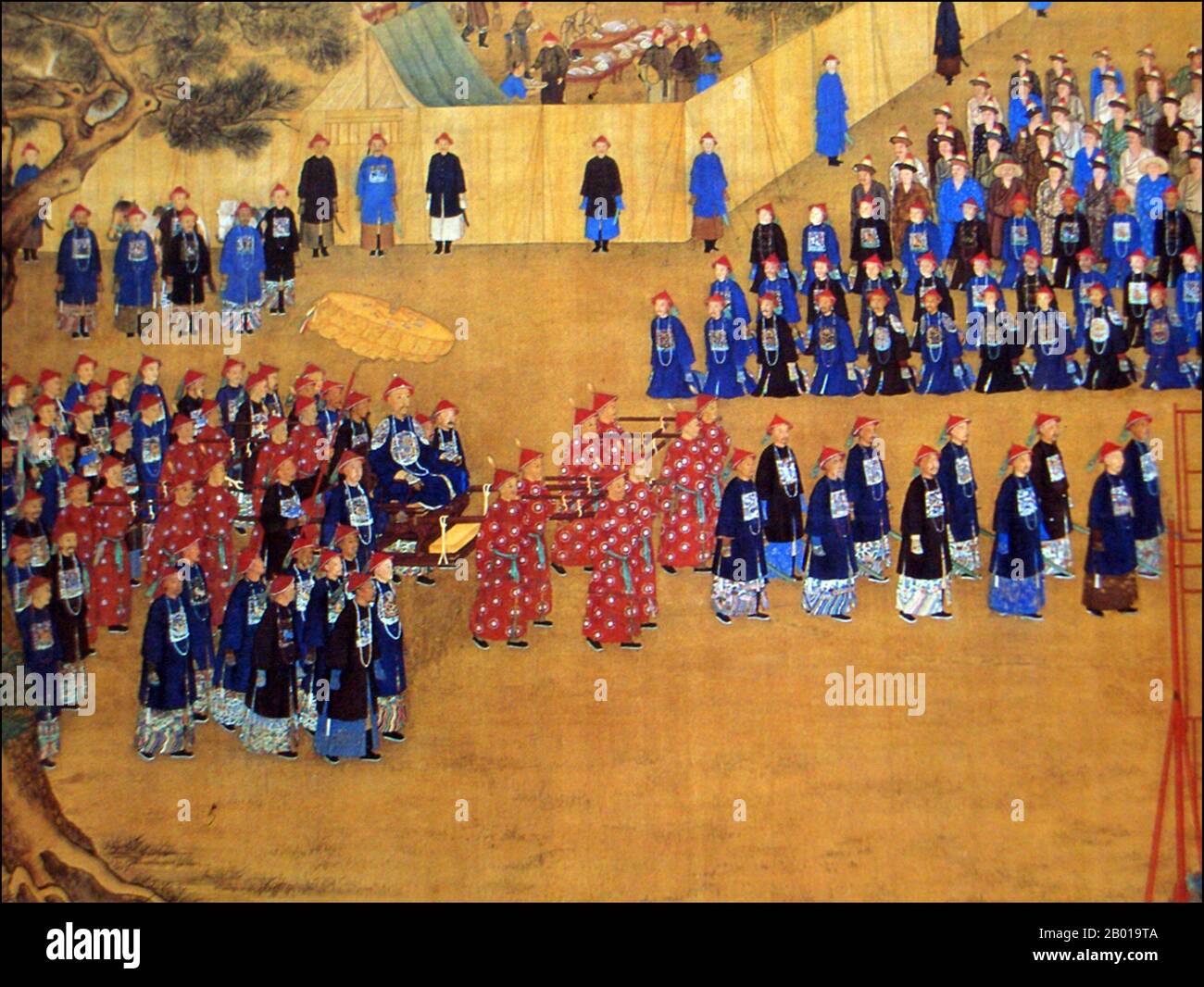 China: The Qianlong Emperor (25 September 1711 - 7 February 1799) and his court in Chengde, the Qing Dynasty Sumer Residence. Handscroll painting by Giuseppe Castiglione (1688-1766), 18th century. In 1703, Chengde was chosen by the Kangxi Emperor as the location for his summer residence. Constructed throughout the eighteenth century, the Mountain Resort was used by both the Yongzheng and Qianlong emperors. The site is currently an UNESCO World Heritage Site. Since the seat of government followed the emperor, Chengde was a political centre of the Chinese empire during these times. Stock Photohttps://www.alamy.com/image-license-details/?v=1https://www.alamy.com/china-the-qianlong-emperor-25-september-1711-7-february-1799-and-his-court-in-chengde-the-qing-dynasty-sumer-residence-handscroll-painting-by-giuseppe-castiglione-1688-1766-18th-century-in-1703-chengde-was-chosen-by-the-kangxi-emperor-as-the-location-for-his-summer-residence-constructed-throughout-the-eighteenth-century-the-mountain-resort-was-used-by-both-the-yongzheng-and-qianlong-emperors-the-site-is-currently-an-unesco-world-heritage-site-since-the-seat-of-government-followed-the-emperor-chengde-was-a-political-centre-of-the-chinese-empire-during-these-times-image344237050.html
China: The Qianlong Emperor (25 September 1711 - 7 February 1799) and his court in Chengde, the Qing Dynasty Sumer Residence. Handscroll painting by Giuseppe Castiglione (1688-1766), 18th century. In 1703, Chengde was chosen by the Kangxi Emperor as the location for his summer residence. Constructed throughout the eighteenth century, the Mountain Resort was used by both the Yongzheng and Qianlong emperors. The site is currently an UNESCO World Heritage Site. Since the seat of government followed the emperor, Chengde was a political centre of the Chinese empire during these times. Stock Photohttps://www.alamy.com/image-license-details/?v=1https://www.alamy.com/china-the-qianlong-emperor-25-september-1711-7-february-1799-and-his-court-in-chengde-the-qing-dynasty-sumer-residence-handscroll-painting-by-giuseppe-castiglione-1688-1766-18th-century-in-1703-chengde-was-chosen-by-the-kangxi-emperor-as-the-location-for-his-summer-residence-constructed-throughout-the-eighteenth-century-the-mountain-resort-was-used-by-both-the-yongzheng-and-qianlong-emperors-the-site-is-currently-an-unesco-world-heritage-site-since-the-seat-of-government-followed-the-emperor-chengde-was-a-political-centre-of-the-chinese-empire-during-these-times-image344237050.htmlRM2B019TA–China: The Qianlong Emperor (25 September 1711 - 7 February 1799) and his court in Chengde, the Qing Dynasty Sumer Residence. Handscroll painting by Giuseppe Castiglione (1688-1766), 18th century. In 1703, Chengde was chosen by the Kangxi Emperor as the location for his summer residence. Constructed throughout the eighteenth century, the Mountain Resort was used by both the Yongzheng and Qianlong emperors. The site is currently an UNESCO World Heritage Site. Since the seat of government followed the emperor, Chengde was a political centre of the Chinese empire during these times.
 China: The Yongyousi Pagoda within the Imperial Summer Villa (Bishu Shanzhuang), Chengde, Hebei Province. The Yongyousi Pagoda was built by the Qianlong Emperor (the sixth emperor of the Manchu-led Qing Dynasty) in honour of his mother. In 1703, Chengde was chosen by the Kangxi Emperor as the location for his summer residence. Constructed throughout the eighteenth century, the Mountain Resort was used by both the Yongzheng and Qianlong emperors. The site is currently a UNESCO World Heritage Site. Since the seat of government followed the emperor, Chengde was a political centre of the Chinese Stock Photohttps://www.alamy.com/image-license-details/?v=1https://www.alamy.com/china-the-yongyousi-pagoda-within-the-imperial-summer-villa-bishu-shanzhuang-chengde-hebei-province-the-yongyousi-pagoda-was-built-by-the-qianlong-emperor-the-sixth-emperor-of-the-manchu-led-qing-dynasty-in-honour-of-his-mother-in-1703-chengde-was-chosen-by-the-kangxi-emperor-as-the-location-for-his-summer-residence-constructed-throughout-the-eighteenth-century-the-mountain-resort-was-used-by-both-the-yongzheng-and-qianlong-emperors-the-site-is-currently-a-unesco-world-heritage-site-since-the-seat-of-government-followed-the-emperor-chengde-was-a-political-centre-of-the-chinese-image344239361.html
China: The Yongyousi Pagoda within the Imperial Summer Villa (Bishu Shanzhuang), Chengde, Hebei Province. The Yongyousi Pagoda was built by the Qianlong Emperor (the sixth emperor of the Manchu-led Qing Dynasty) in honour of his mother. In 1703, Chengde was chosen by the Kangxi Emperor as the location for his summer residence. Constructed throughout the eighteenth century, the Mountain Resort was used by both the Yongzheng and Qianlong emperors. The site is currently a UNESCO World Heritage Site. Since the seat of government followed the emperor, Chengde was a political centre of the Chinese Stock Photohttps://www.alamy.com/image-license-details/?v=1https://www.alamy.com/china-the-yongyousi-pagoda-within-the-imperial-summer-villa-bishu-shanzhuang-chengde-hebei-province-the-yongyousi-pagoda-was-built-by-the-qianlong-emperor-the-sixth-emperor-of-the-manchu-led-qing-dynasty-in-honour-of-his-mother-in-1703-chengde-was-chosen-by-the-kangxi-emperor-as-the-location-for-his-summer-residence-constructed-throughout-the-eighteenth-century-the-mountain-resort-was-used-by-both-the-yongzheng-and-qianlong-emperors-the-site-is-currently-a-unesco-world-heritage-site-since-the-seat-of-government-followed-the-emperor-chengde-was-a-political-centre-of-the-chinese-image344239361.htmlRM2B01CPW–China: The Yongyousi Pagoda within the Imperial Summer Villa (Bishu Shanzhuang), Chengde, Hebei Province. The Yongyousi Pagoda was built by the Qianlong Emperor (the sixth emperor of the Manchu-led Qing Dynasty) in honour of his mother. In 1703, Chengde was chosen by the Kangxi Emperor as the location for his summer residence. Constructed throughout the eighteenth century, the Mountain Resort was used by both the Yongzheng and Qianlong emperors. The site is currently a UNESCO World Heritage Site. Since the seat of government followed the emperor, Chengde was a political centre of the Chinese
 The Summer Imperial Palace in Chengde, Hebei, China. Stock Photohttps://www.alamy.com/image-license-details/?v=1https://www.alamy.com/the-summer-imperial-palace-in-chengde-hebei-china-image152087651.html
The Summer Imperial Palace in Chengde, Hebei, China. Stock Photohttps://www.alamy.com/image-license-details/?v=1https://www.alamy.com/the-summer-imperial-palace-in-chengde-hebei-china-image152087651.htmlRMJRC59R–The Summer Imperial Palace in Chengde, Hebei, China.
 China: The Yongyousi Pagoda within the Imperial Summer Villa (Bishu Shanzhuang), Chengde, Hebei Province. The Yongyousi Pagoda was built by the Qianlong Emperor (the sixth emperor of the Manchu-led Qing Dynasty) in honour of his mother. In 1703, Chengde was chosen by the Kangxi Emperor as the location for his summer residence. Constructed throughout the eighteenth century, the Mountain Resort was used by both the Yongzheng and Qianlong emperors. The site is currently a UNESCO World Heritage Site. Since the seat of government followed the emperor, Chengde was a political centre of the Chinese Stock Photohttps://www.alamy.com/image-license-details/?v=1https://www.alamy.com/china-the-yongyousi-pagoda-within-the-imperial-summer-villa-bishu-shanzhuang-chengde-hebei-province-the-yongyousi-pagoda-was-built-by-the-qianlong-emperor-the-sixth-emperor-of-the-manchu-led-qing-dynasty-in-honour-of-his-mother-in-1703-chengde-was-chosen-by-the-kangxi-emperor-as-the-location-for-his-summer-residence-constructed-throughout-the-eighteenth-century-the-mountain-resort-was-used-by-both-the-yongzheng-and-qianlong-emperors-the-site-is-currently-a-unesco-world-heritage-site-since-the-seat-of-government-followed-the-emperor-chengde-was-a-political-centre-of-the-chinese-image344239360.html
China: The Yongyousi Pagoda within the Imperial Summer Villa (Bishu Shanzhuang), Chengde, Hebei Province. The Yongyousi Pagoda was built by the Qianlong Emperor (the sixth emperor of the Manchu-led Qing Dynasty) in honour of his mother. In 1703, Chengde was chosen by the Kangxi Emperor as the location for his summer residence. Constructed throughout the eighteenth century, the Mountain Resort was used by both the Yongzheng and Qianlong emperors. The site is currently a UNESCO World Heritage Site. Since the seat of government followed the emperor, Chengde was a political centre of the Chinese Stock Photohttps://www.alamy.com/image-license-details/?v=1https://www.alamy.com/china-the-yongyousi-pagoda-within-the-imperial-summer-villa-bishu-shanzhuang-chengde-hebei-province-the-yongyousi-pagoda-was-built-by-the-qianlong-emperor-the-sixth-emperor-of-the-manchu-led-qing-dynasty-in-honour-of-his-mother-in-1703-chengde-was-chosen-by-the-kangxi-emperor-as-the-location-for-his-summer-residence-constructed-throughout-the-eighteenth-century-the-mountain-resort-was-used-by-both-the-yongzheng-and-qianlong-emperors-the-site-is-currently-a-unesco-world-heritage-site-since-the-seat-of-government-followed-the-emperor-chengde-was-a-political-centre-of-the-chinese-image344239360.htmlRM2B01CPT–China: The Yongyousi Pagoda within the Imperial Summer Villa (Bishu Shanzhuang), Chengde, Hebei Province. The Yongyousi Pagoda was built by the Qianlong Emperor (the sixth emperor of the Manchu-led Qing Dynasty) in honour of his mother. In 1703, Chengde was chosen by the Kangxi Emperor as the location for his summer residence. Constructed throughout the eighteenth century, the Mountain Resort was used by both the Yongzheng and Qianlong emperors. The site is currently a UNESCO World Heritage Site. Since the seat of government followed the emperor, Chengde was a political centre of the Chinese
![Japanese Soldiers Running Through a Field, 1933. 'Japan's forceful infiltration into Jehol [Rehe Province, China], coming so soon after her Manchurian annexation, put before the League of Nations a test case'. From "Time To Remember - The Time Of The Monster", 1933 (Reel 3); a documentary film about events of 1933, rise of Roosevelt and Hitler. Stock Photo Japanese Soldiers Running Through a Field, 1933. 'Japan's forceful infiltration into Jehol [Rehe Province, China], coming so soon after her Manchurian annexation, put before the League of Nations a test case'. From "Time To Remember - The Time Of The Monster", 1933 (Reel 3); a documentary film about events of 1933, rise of Roosevelt and Hitler. Stock Photo](https://c8.alamy.com/comp/2XT34FR/japanese-soldiers-running-through-a-field-1933-japans-forceful-infiltration-into-jehol-rehe-province-china-coming-so-soon-after-her-manchurian-annexation-put-before-the-league-of-nations-a-test-case-from-quottime-to-remember-the-time-of-the-monsterquot-1933-reel-3-a-documentary-film-about-events-of-1933-rise-of-roosevelt-and-hitler-2XT34FR.jpg) Japanese Soldiers Running Through a Field, 1933. 'Japan's forceful infiltration into Jehol [Rehe Province, China], coming so soon after her Manchurian annexation, put before the League of Nations a test case'. From "Time To Remember - The Time Of The Monster", 1933 (Reel 3); a documentary film about events of 1933, rise of Roosevelt and Hitler. Stock Photohttps://www.alamy.com/image-license-details/?v=1https://www.alamy.com/japanese-soldiers-running-through-a-field-1933-japans-forceful-infiltration-into-jehol-rehe-province-china-coming-so-soon-after-her-manchurian-annexation-put-before-the-league-of-nations-a-test-case-from-quottime-to-remember-the-time-of-the-monsterquot-1933-reel-3-a-documentary-film-about-events-of-1933-rise-of-roosevelt-and-hitler-image617184059.html
Japanese Soldiers Running Through a Field, 1933. 'Japan's forceful infiltration into Jehol [Rehe Province, China], coming so soon after her Manchurian annexation, put before the League of Nations a test case'. From "Time To Remember - The Time Of The Monster", 1933 (Reel 3); a documentary film about events of 1933, rise of Roosevelt and Hitler. Stock Photohttps://www.alamy.com/image-license-details/?v=1https://www.alamy.com/japanese-soldiers-running-through-a-field-1933-japans-forceful-infiltration-into-jehol-rehe-province-china-coming-so-soon-after-her-manchurian-annexation-put-before-the-league-of-nations-a-test-case-from-quottime-to-remember-the-time-of-the-monsterquot-1933-reel-3-a-documentary-film-about-events-of-1933-rise-of-roosevelt-and-hitler-image617184059.htmlRM2XT34FR–Japanese Soldiers Running Through a Field, 1933. 'Japan's forceful infiltration into Jehol [Rehe Province, China], coming so soon after her Manchurian annexation, put before the League of Nations a test case'. From "Time To Remember - The Time Of The Monster", 1933 (Reel 3); a documentary film about events of 1933, rise of Roosevelt and Hitler.
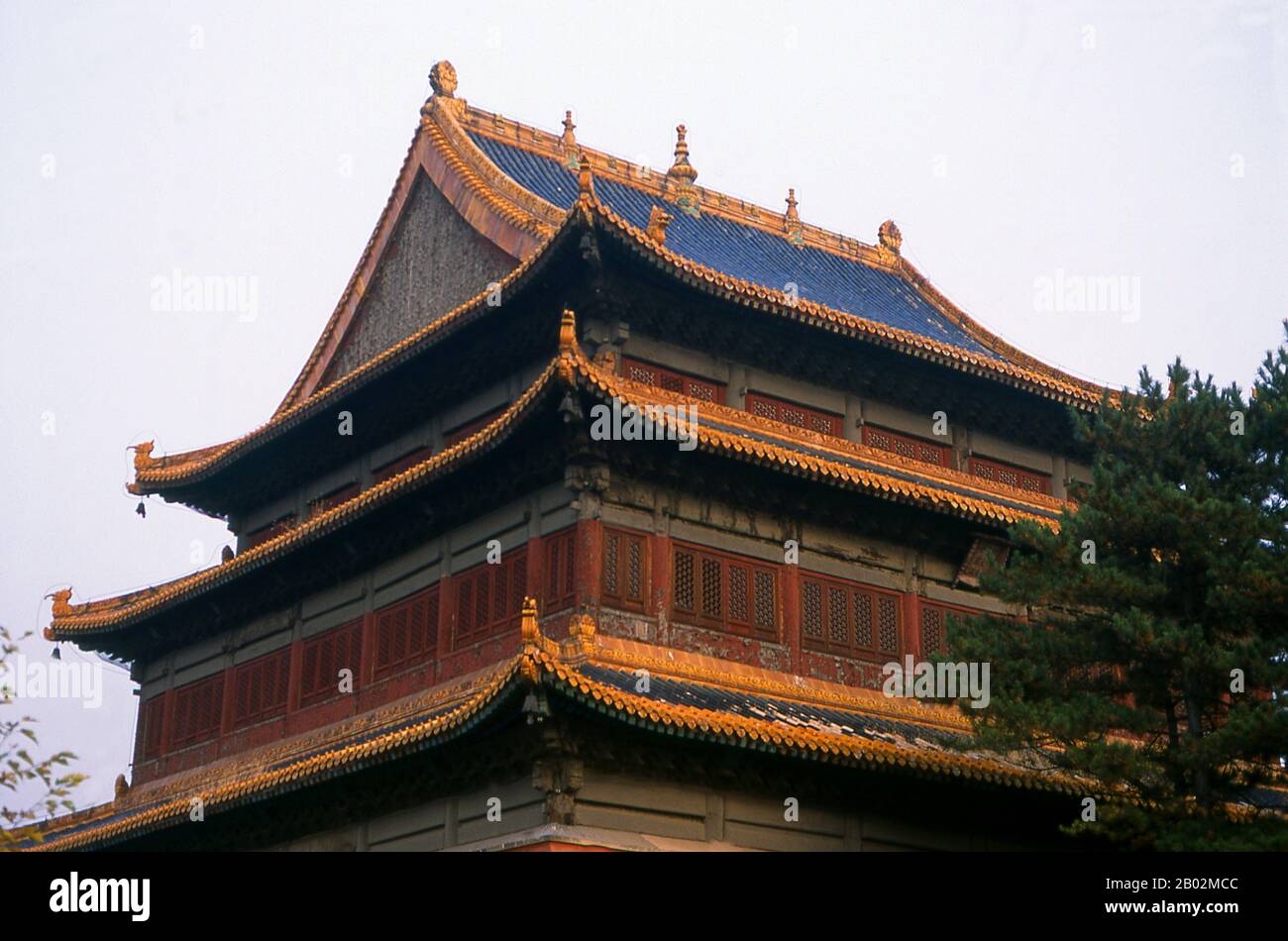 Anyuan Miao (Temple of Distant Peace) was built in 1764 and is a copy of the now destroyed Ili Temple in Xinjiang. In 1703, Chengde was chosen by the Kangxi Emperor as the location for his summer residence. Constructed throughout the eighteenth century, the Mountain Resort was used by both the Yongzheng and Qianlong emperors. The site is currently an UNESCO World Heritage Site. Since the seat of government followed the emperor, Chengde was a political center of the Chinese empire during these times. Chengde, formerly known as Jehol, reached its height under the Qianlong Emperor 1735-1796 (di Stock Photohttps://www.alamy.com/image-license-details/?v=1https://www.alamy.com/anyuan-miao-temple-of-distant-peace-was-built-in-1764-and-is-a-copy-of-the-now-destroyed-ili-temple-in-xinjiang-in-1703-chengde-was-chosen-by-the-kangxi-emperor-as-the-location-for-his-summer-residence-constructed-throughout-the-eighteenth-century-the-mountain-resort-was-used-by-both-the-yongzheng-and-qianlong-emperors-the-site-is-currently-an-unesco-world-heritage-site-since-the-seat-of-government-followed-the-emperor-chengde-was-a-political-center-of-the-chinese-empire-during-these-times-chengde-formerly-known-as-jehol-reached-its-height-under-the-qianlong-emperor-1735-1796-di-image344267292.html
Anyuan Miao (Temple of Distant Peace) was built in 1764 and is a copy of the now destroyed Ili Temple in Xinjiang. In 1703, Chengde was chosen by the Kangxi Emperor as the location for his summer residence. Constructed throughout the eighteenth century, the Mountain Resort was used by both the Yongzheng and Qianlong emperors. The site is currently an UNESCO World Heritage Site. Since the seat of government followed the emperor, Chengde was a political center of the Chinese empire during these times. Chengde, formerly known as Jehol, reached its height under the Qianlong Emperor 1735-1796 (di Stock Photohttps://www.alamy.com/image-license-details/?v=1https://www.alamy.com/anyuan-miao-temple-of-distant-peace-was-built-in-1764-and-is-a-copy-of-the-now-destroyed-ili-temple-in-xinjiang-in-1703-chengde-was-chosen-by-the-kangxi-emperor-as-the-location-for-his-summer-residence-constructed-throughout-the-eighteenth-century-the-mountain-resort-was-used-by-both-the-yongzheng-and-qianlong-emperors-the-site-is-currently-an-unesco-world-heritage-site-since-the-seat-of-government-followed-the-emperor-chengde-was-a-political-center-of-the-chinese-empire-during-these-times-chengde-formerly-known-as-jehol-reached-its-height-under-the-qianlong-emperor-1735-1796-di-image344267292.htmlRM2B02MCC–Anyuan Miao (Temple of Distant Peace) was built in 1764 and is a copy of the now destroyed Ili Temple in Xinjiang. In 1703, Chengde was chosen by the Kangxi Emperor as the location for his summer residence. Constructed throughout the eighteenth century, the Mountain Resort was used by both the Yongzheng and Qianlong emperors. The site is currently an UNESCO World Heritage Site. Since the seat of government followed the emperor, Chengde was a political center of the Chinese empire during these times. Chengde, formerly known as Jehol, reached its height under the Qianlong Emperor 1735-1796 (di
 Beijing, China. 28th Nov, 2020. The fossils of Jehol Biota are showed at the Beijing Natural History Museum in Beijing, China on 28th November, 2020.(Photo by TPG/cnsphotos) Credit: TopPhoto/Alamy Live News Stock Photohttps://www.alamy.com/image-license-details/?v=1https://www.alamy.com/beijing-china-28th-nov-2020-the-fossils-of-jehol-biota-are-showed-at-the-beijing-natural-history-museum-in-beijing-china-on-28th-november-2020photo-by-tpgcnsphotos-credit-topphotoalamy-live-news-image387506017.html
Beijing, China. 28th Nov, 2020. The fossils of Jehol Biota are showed at the Beijing Natural History Museum in Beijing, China on 28th November, 2020.(Photo by TPG/cnsphotos) Credit: TopPhoto/Alamy Live News Stock Photohttps://www.alamy.com/image-license-details/?v=1https://www.alamy.com/beijing-china-28th-nov-2020-the-fossils-of-jehol-biota-are-showed-at-the-beijing-natural-history-museum-in-beijing-china-on-28th-november-2020photo-by-tpgcnsphotos-credit-topphotoalamy-live-news-image387506017.htmlRM2DECBTH–Beijing, China. 28th Nov, 2020. The fossils of Jehol Biota are showed at the Beijing Natural History Museum in Beijing, China on 28th November, 2020.(Photo by TPG/cnsphotos) Credit: TopPhoto/Alamy Live News
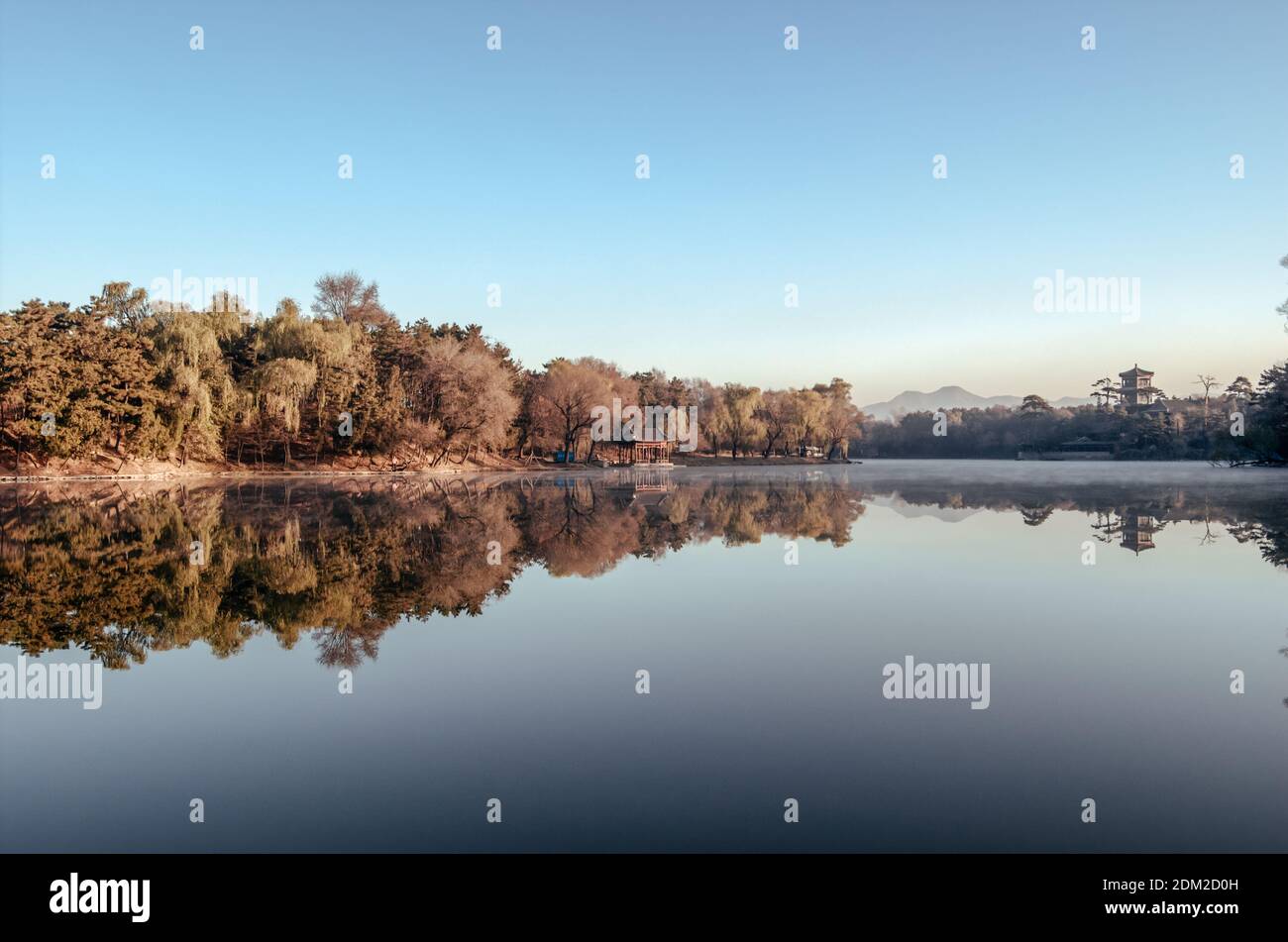 Golden Mountain, Chenghu Lake, Chengdu Mountain Resort (aka Escaping-the-heat Imperial Villa), Chengde 承德, Hebei, China Stock Photohttps://www.alamy.com/image-license-details/?v=1https://www.alamy.com/golden-mountain-chenghu-lake-chengdu-mountain-resort-aka-escaping-the-heat-imperial-villa-chengde-hebei-china-image390975329.html
Golden Mountain, Chenghu Lake, Chengdu Mountain Resort (aka Escaping-the-heat Imperial Villa), Chengde 承德, Hebei, China Stock Photohttps://www.alamy.com/image-license-details/?v=1https://www.alamy.com/golden-mountain-chenghu-lake-chengdu-mountain-resort-aka-escaping-the-heat-imperial-villa-chengde-hebei-china-image390975329.htmlRM2DM2D0H–Golden Mountain, Chenghu Lake, Chengdu Mountain Resort (aka Escaping-the-heat Imperial Villa), Chengde 承德, Hebei, China
 Gezicht op een deel van het keizerlijk zomerpaleis in Chengde (Jehol) te China View of a part of the imperial summer palace in Chengde (Jehol) to China. Landscape with a lake Where: lying small islands with buildings. The islands are connected to each other by bridges. In the 18th century the emperors had the early Qing Dynasty build a refuge in the mountains, surrounded by walls. It was provided with parks with lakes, pagodes and palaces. Title in Chinese rechtsboven. Manufacturer : printmaker Matteo Ripanaar design: Shen YuPlaats manufacture: China Date: 1712 - 1714 Material: Chinese paper T Stock Photohttps://www.alamy.com/image-license-details/?v=1https://www.alamy.com/gezicht-op-een-deel-van-het-keizerlijk-zomerpaleis-in-chengde-jehol-te-china-view-of-a-part-of-the-imperial-summer-palace-in-chengde-jehol-to-china-landscape-with-a-lake-where-lying-small-islands-with-buildings-the-islands-are-connected-to-each-other-by-bridges-in-the-18th-century-the-emperors-had-the-early-qing-dynasty-build-a-refuge-in-the-mountains-surrounded-by-walls-it-was-provided-with-parks-with-lakes-pagodes-and-palaces-title-in-chinese-rechtsboven-manufacturer-printmaker-matteo-ripanaar-design-shen-yuplaats-manufacture-china-date-1712-1714-material-chinese-paper-t-image348402770.html
Gezicht op een deel van het keizerlijk zomerpaleis in Chengde (Jehol) te China View of a part of the imperial summer palace in Chengde (Jehol) to China. Landscape with a lake Where: lying small islands with buildings. The islands are connected to each other by bridges. In the 18th century the emperors had the early Qing Dynasty build a refuge in the mountains, surrounded by walls. It was provided with parks with lakes, pagodes and palaces. Title in Chinese rechtsboven. Manufacturer : printmaker Matteo Ripanaar design: Shen YuPlaats manufacture: China Date: 1712 - 1714 Material: Chinese paper T Stock Photohttps://www.alamy.com/image-license-details/?v=1https://www.alamy.com/gezicht-op-een-deel-van-het-keizerlijk-zomerpaleis-in-chengde-jehol-te-china-view-of-a-part-of-the-imperial-summer-palace-in-chengde-jehol-to-china-landscape-with-a-lake-where-lying-small-islands-with-buildings-the-islands-are-connected-to-each-other-by-bridges-in-the-18th-century-the-emperors-had-the-early-qing-dynasty-build-a-refuge-in-the-mountains-surrounded-by-walls-it-was-provided-with-parks-with-lakes-pagodes-and-palaces-title-in-chinese-rechtsboven-manufacturer-printmaker-matteo-ripanaar-design-shen-yuplaats-manufacture-china-date-1712-1714-material-chinese-paper-t-image348402770.htmlRM2B6R382–Gezicht op een deel van het keizerlijk zomerpaleis in Chengde (Jehol) te China View of a part of the imperial summer palace in Chengde (Jehol) to China. Landscape with a lake Where: lying small islands with buildings. The islands are connected to each other by bridges. In the 18th century the emperors had the early Qing Dynasty build a refuge in the mountains, surrounded by walls. It was provided with parks with lakes, pagodes and palaces. Title in Chinese rechtsboven. Manufacturer : printmaker Matteo Ripanaar design: Shen YuPlaats manufacture: China Date: 1712 - 1714 Material: Chinese paper T
 View of a part of the Imperial Summer Palace in Chengde (Jehol) in China, Matteo Ripa, After Shen Yu, 1712 - 1714 print View of a part of the imperial summer palace, in a landscape with more or river, in Chengde (Jehol) in China. In the 18th century, the emperors of the early Qing Dynasty had a refuge in the mountains, surrounded by walls. It was provided with parks with lakes, pagodas and palaces. China China paper engraving city-view, and landscape with man-made constructions Chengde Stock Photohttps://www.alamy.com/image-license-details/?v=1https://www.alamy.com/view-of-a-part-of-the-imperial-summer-palace-in-chengde-jehol-in-china-matteo-ripa-after-shen-yu-1712-1714-print-view-of-a-part-of-the-imperial-summer-palace-in-a-landscape-with-more-or-river-in-chengde-jehol-in-china-in-the-18th-century-the-emperors-of-the-early-qing-dynasty-had-a-refuge-in-the-mountains-surrounded-by-walls-it-was-provided-with-parks-with-lakes-pagodas-and-palaces-china-china-paper-engraving-city-view-and-landscape-with-man-made-constructions-chengde-image593809969.html
View of a part of the Imperial Summer Palace in Chengde (Jehol) in China, Matteo Ripa, After Shen Yu, 1712 - 1714 print View of a part of the imperial summer palace, in a landscape with more or river, in Chengde (Jehol) in China. In the 18th century, the emperors of the early Qing Dynasty had a refuge in the mountains, surrounded by walls. It was provided with parks with lakes, pagodas and palaces. China China paper engraving city-view, and landscape with man-made constructions Chengde Stock Photohttps://www.alamy.com/image-license-details/?v=1https://www.alamy.com/view-of-a-part-of-the-imperial-summer-palace-in-chengde-jehol-in-china-matteo-ripa-after-shen-yu-1712-1714-print-view-of-a-part-of-the-imperial-summer-palace-in-a-landscape-with-more-or-river-in-chengde-jehol-in-china-in-the-18th-century-the-emperors-of-the-early-qing-dynasty-had-a-refuge-in-the-mountains-surrounded-by-walls-it-was-provided-with-parks-with-lakes-pagodas-and-palaces-china-china-paper-engraving-city-view-and-landscape-with-man-made-constructions-chengde-image593809969.htmlRM2WE2AJW–View of a part of the Imperial Summer Palace in Chengde (Jehol) in China, Matteo Ripa, After Shen Yu, 1712 - 1714 print View of a part of the imperial summer palace, in a landscape with more or river, in Chengde (Jehol) in China. In the 18th century, the emperors of the early Qing Dynasty had a refuge in the mountains, surrounded by walls. It was provided with parks with lakes, pagodas and palaces. China China paper engraving city-view, and landscape with man-made constructions Chengde
 Japanese Death ' s head company occupy Kupeikou . The celebrated Japanese Death's Head company , otherwise known as the Dokurotai Company , headed by Lieutenant Ikegami , carrying their famous flag with the skull and crossed bones design , routed Chinese troops in the Jehol district and captured the town of Kupeikou . Lieutenant Ikegami head of the Death ' s head company with the company flag after occupying Kupeikou . 26 April 1933 Stock Photohttps://www.alamy.com/image-license-details/?v=1https://www.alamy.com/japanese-death-s-head-company-occupy-kupeikou-the-celebrated-japanese-deaths-head-company-otherwise-known-as-the-dokurotai-company-headed-by-lieutenant-ikegami-carrying-their-famous-flag-with-the-skull-and-crossed-bones-design-routed-chinese-troops-in-the-jehol-district-and-captured-the-town-of-kupeikou-lieutenant-ikegami-head-of-the-death-s-head-company-with-the-company-flag-after-occupying-kupeikou-26-april-1933-image359643991.html
Japanese Death ' s head company occupy Kupeikou . The celebrated Japanese Death's Head company , otherwise known as the Dokurotai Company , headed by Lieutenant Ikegami , carrying their famous flag with the skull and crossed bones design , routed Chinese troops in the Jehol district and captured the town of Kupeikou . Lieutenant Ikegami head of the Death ' s head company with the company flag after occupying Kupeikou . 26 April 1933 Stock Photohttps://www.alamy.com/image-license-details/?v=1https://www.alamy.com/japanese-death-s-head-company-occupy-kupeikou-the-celebrated-japanese-deaths-head-company-otherwise-known-as-the-dokurotai-company-headed-by-lieutenant-ikegami-carrying-their-famous-flag-with-the-skull-and-crossed-bones-design-routed-chinese-troops-in-the-jehol-district-and-captured-the-town-of-kupeikou-lieutenant-ikegami-head-of-the-death-s-head-company-with-the-company-flag-after-occupying-kupeikou-26-april-1933-image359643991.htmlRM2BW35G7–Japanese Death ' s head company occupy Kupeikou . The celebrated Japanese Death's Head company , otherwise known as the Dokurotai Company , headed by Lieutenant Ikegami , carrying their famous flag with the skull and crossed bones design , routed Chinese troops in the Jehol district and captured the town of Kupeikou . Lieutenant Ikegami head of the Death ' s head company with the company flag after occupying Kupeikou . 26 April 1933
 CHENGDE CITY - OCTOBER 20: Chinese traditional style water wheel in chengde mountain resort, on october 20, 2014, Chengde City, Hebei Province, China Stock Photohttps://www.alamy.com/image-license-details/?v=1https://www.alamy.com/chengde-city-october-20-chinese-traditional-style-water-wheel-in-chengde-mountain-resort-on-october-20-2014-chengde-city-hebei-province-china-image571487997.html
CHENGDE CITY - OCTOBER 20: Chinese traditional style water wheel in chengde mountain resort, on october 20, 2014, Chengde City, Hebei Province, China Stock Photohttps://www.alamy.com/image-license-details/?v=1https://www.alamy.com/chengde-city-october-20-chinese-traditional-style-water-wheel-in-chengde-mountain-resort-on-october-20-2014-chengde-city-hebei-province-china-image571487997.htmlRF2T5NENH–CHENGDE CITY - OCTOBER 20: Chinese traditional style water wheel in chengde mountain resort, on october 20, 2014, Chengde City, Hebei Province, China
 The Imperial Summer Villa Park at Chengde in the Hebei Province of China Stock Photohttps://www.alamy.com/image-license-details/?v=1https://www.alamy.com/stock-photo-the-imperial-summer-villa-park-at-chengde-in-the-hebei-province-of-73331366.html
The Imperial Summer Villa Park at Chengde in the Hebei Province of China Stock Photohttps://www.alamy.com/image-license-details/?v=1https://www.alamy.com/stock-photo-the-imperial-summer-villa-park-at-chengde-in-the-hebei-province-of-73331366.htmlRME78EWA–The Imperial Summer Villa Park at Chengde in the Hebei Province of China
 The Imperial Summer Villa in Chengde Stock Photohttps://www.alamy.com/image-license-details/?v=1https://www.alamy.com/stock-photo-the-imperial-summer-villa-in-chengde-13240429.html
The Imperial Summer Villa in Chengde Stock Photohttps://www.alamy.com/image-license-details/?v=1https://www.alamy.com/stock-photo-the-imperial-summer-villa-in-chengde-13240429.htmlRMACX0KX–The Imperial Summer Villa in Chengde
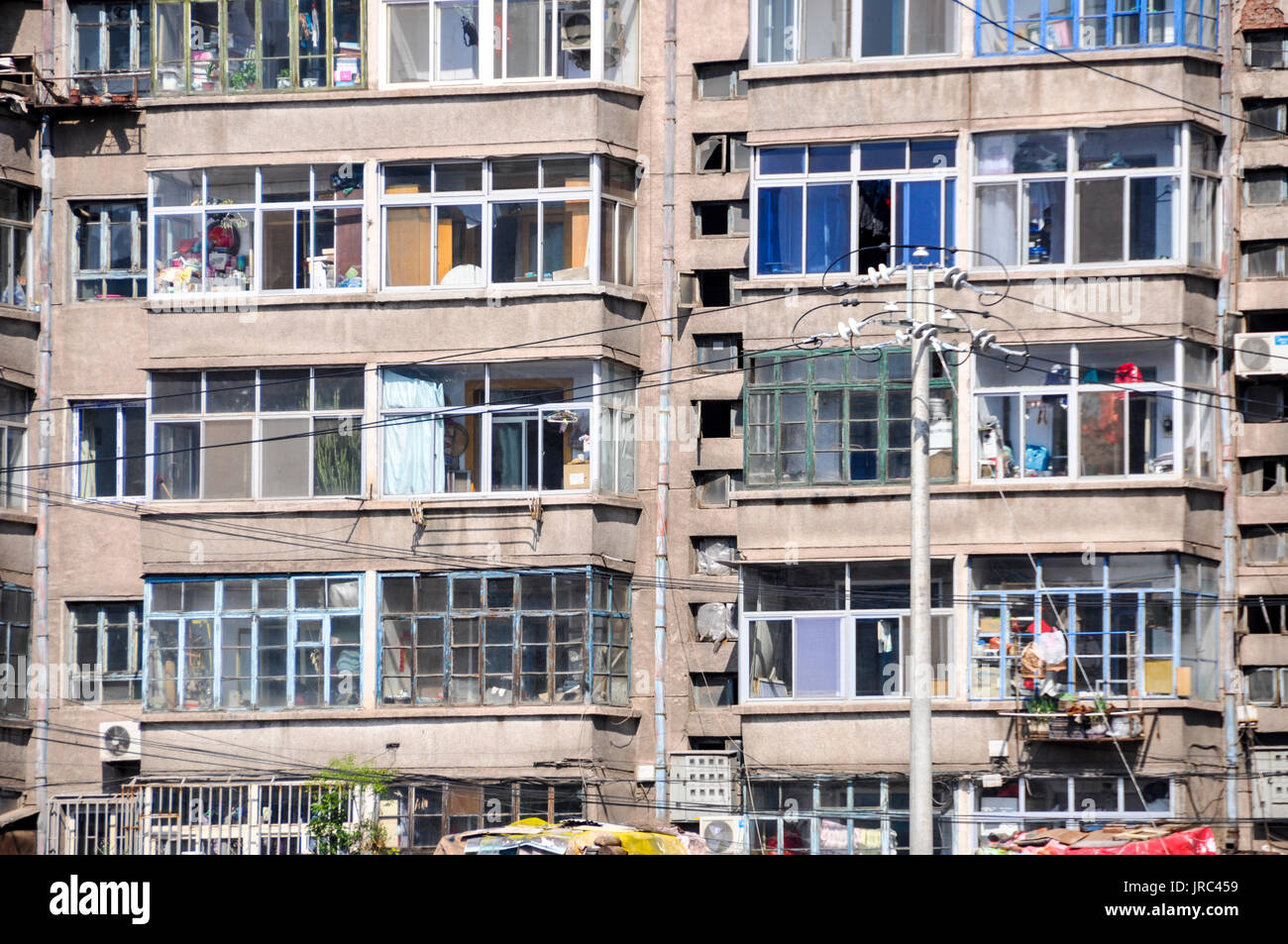 Facade of a block of residential units in Chengde China. Stock Photohttps://www.alamy.com/image-license-details/?v=1https://www.alamy.com/facade-of-a-block-of-residential-units-in-chengde-china-image152086741.html
Facade of a block of residential units in Chengde China. Stock Photohttps://www.alamy.com/image-license-details/?v=1https://www.alamy.com/facade-of-a-block-of-residential-units-in-chengde-china-image152086741.htmlRMJRC459–Facade of a block of residential units in Chengde China.
![Japanese Soldiers Gathering Around the Japanese Flag, 1933. 'Japan's forceful infiltration into Jehol [Rehe Province, China], coming so soon after her Manchurian annexation, put before the League of Nations a test case'. From "Time To Remember - The Time Of The Monster", 1933 (Reel 3); a documentary film about events of 1933, rise of Roosevelt and Hitler. Stock Photo Japanese Soldiers Gathering Around the Japanese Flag, 1933. 'Japan's forceful infiltration into Jehol [Rehe Province, China], coming so soon after her Manchurian annexation, put before the League of Nations a test case'. From "Time To Remember - The Time Of The Monster", 1933 (Reel 3); a documentary film about events of 1933, rise of Roosevelt and Hitler. Stock Photo](https://c8.alamy.com/comp/2XT34G2/japanese-soldiers-gathering-around-the-japanese-flag-1933-japans-forceful-infiltration-into-jehol-rehe-province-china-coming-so-soon-after-her-manchurian-annexation-put-before-the-league-of-nations-a-test-case-from-quottime-to-remember-the-time-of-the-monsterquot-1933-reel-3-a-documentary-film-about-events-of-1933-rise-of-roosevelt-and-hitler-2XT34G2.jpg) Japanese Soldiers Gathering Around the Japanese Flag, 1933. 'Japan's forceful infiltration into Jehol [Rehe Province, China], coming so soon after her Manchurian annexation, put before the League of Nations a test case'. From "Time To Remember - The Time Of The Monster", 1933 (Reel 3); a documentary film about events of 1933, rise of Roosevelt and Hitler. Stock Photohttps://www.alamy.com/image-license-details/?v=1https://www.alamy.com/japanese-soldiers-gathering-around-the-japanese-flag-1933-japans-forceful-infiltration-into-jehol-rehe-province-china-coming-so-soon-after-her-manchurian-annexation-put-before-the-league-of-nations-a-test-case-from-quottime-to-remember-the-time-of-the-monsterquot-1933-reel-3-a-documentary-film-about-events-of-1933-rise-of-roosevelt-and-hitler-image617184066.html
Japanese Soldiers Gathering Around the Japanese Flag, 1933. 'Japan's forceful infiltration into Jehol [Rehe Province, China], coming so soon after her Manchurian annexation, put before the League of Nations a test case'. From "Time To Remember - The Time Of The Monster", 1933 (Reel 3); a documentary film about events of 1933, rise of Roosevelt and Hitler. Stock Photohttps://www.alamy.com/image-license-details/?v=1https://www.alamy.com/japanese-soldiers-gathering-around-the-japanese-flag-1933-japans-forceful-infiltration-into-jehol-rehe-province-china-coming-so-soon-after-her-manchurian-annexation-put-before-the-league-of-nations-a-test-case-from-quottime-to-remember-the-time-of-the-monsterquot-1933-reel-3-a-documentary-film-about-events-of-1933-rise-of-roosevelt-and-hitler-image617184066.htmlRM2XT34G2–Japanese Soldiers Gathering Around the Japanese Flag, 1933. 'Japan's forceful infiltration into Jehol [Rehe Province, China], coming so soon after her Manchurian annexation, put before the League of Nations a test case'. From "Time To Remember - The Time Of The Monster", 1933 (Reel 3); a documentary film about events of 1933, rise of Roosevelt and Hitler.
 Anyuan Miao (Temple of Distant Peace) was built in 1764 and is a copy of the now destroyed Ili Temple in Xinjiang. In 1703, Chengde was chosen by the Kangxi Emperor as the location for his summer residence. Constructed throughout the eighteenth century, the Mountain Resort was used by both the Yongzheng and Qianlong emperors. The site is currently an UNESCO World Heritage Site. Since the seat of government followed the emperor, Chengde was a political center of the Chinese empire during these times. Chengde, formerly known as Jehol, reached its height under the Qianlong Emperor 1735-1796 (di Stock Photohttps://www.alamy.com/image-license-details/?v=1https://www.alamy.com/anyuan-miao-temple-of-distant-peace-was-built-in-1764-and-is-a-copy-of-the-now-destroyed-ili-temple-in-xinjiang-in-1703-chengde-was-chosen-by-the-kangxi-emperor-as-the-location-for-his-summer-residence-constructed-throughout-the-eighteenth-century-the-mountain-resort-was-used-by-both-the-yongzheng-and-qianlong-emperors-the-site-is-currently-an-unesco-world-heritage-site-since-the-seat-of-government-followed-the-emperor-chengde-was-a-political-center-of-the-chinese-empire-during-these-times-chengde-formerly-known-as-jehol-reached-its-height-under-the-qianlong-emperor-1735-1796-di-image344267291.html
Anyuan Miao (Temple of Distant Peace) was built in 1764 and is a copy of the now destroyed Ili Temple in Xinjiang. In 1703, Chengde was chosen by the Kangxi Emperor as the location for his summer residence. Constructed throughout the eighteenth century, the Mountain Resort was used by both the Yongzheng and Qianlong emperors. The site is currently an UNESCO World Heritage Site. Since the seat of government followed the emperor, Chengde was a political center of the Chinese empire during these times. Chengde, formerly known as Jehol, reached its height under the Qianlong Emperor 1735-1796 (di Stock Photohttps://www.alamy.com/image-license-details/?v=1https://www.alamy.com/anyuan-miao-temple-of-distant-peace-was-built-in-1764-and-is-a-copy-of-the-now-destroyed-ili-temple-in-xinjiang-in-1703-chengde-was-chosen-by-the-kangxi-emperor-as-the-location-for-his-summer-residence-constructed-throughout-the-eighteenth-century-the-mountain-resort-was-used-by-both-the-yongzheng-and-qianlong-emperors-the-site-is-currently-an-unesco-world-heritage-site-since-the-seat-of-government-followed-the-emperor-chengde-was-a-political-center-of-the-chinese-empire-during-these-times-chengde-formerly-known-as-jehol-reached-its-height-under-the-qianlong-emperor-1735-1796-di-image344267291.htmlRM2B02MCB–Anyuan Miao (Temple of Distant Peace) was built in 1764 and is a copy of the now destroyed Ili Temple in Xinjiang. In 1703, Chengde was chosen by the Kangxi Emperor as the location for his summer residence. Constructed throughout the eighteenth century, the Mountain Resort was used by both the Yongzheng and Qianlong emperors. The site is currently an UNESCO World Heritage Site. Since the seat of government followed the emperor, Chengde was a political center of the Chinese empire during these times. Chengde, formerly known as Jehol, reached its height under the Qianlong Emperor 1735-1796 (di
 Shuixin Pavilion on Lower Lake, Chengdu Mountain Resort (aka Escaping-the-heat Imperial Villa, aka Summer Resort), Chengde 承德, Hebei, China Stock Photohttps://www.alamy.com/image-license-details/?v=1https://www.alamy.com/shuixin-pavilion-on-lower-lake-chengdu-mountain-resort-aka-escaping-the-heat-imperial-villa-aka-summer-resort-chengde-hebei-china-image390975317.html
Shuixin Pavilion on Lower Lake, Chengdu Mountain Resort (aka Escaping-the-heat Imperial Villa, aka Summer Resort), Chengde 承德, Hebei, China Stock Photohttps://www.alamy.com/image-license-details/?v=1https://www.alamy.com/shuixin-pavilion-on-lower-lake-chengdu-mountain-resort-aka-escaping-the-heat-imperial-villa-aka-summer-resort-chengde-hebei-china-image390975317.htmlRM2DM2D05–Shuixin Pavilion on Lower Lake, Chengdu Mountain Resort (aka Escaping-the-heat Imperial Villa, aka Summer Resort), Chengde 承德, Hebei, China
 Gezicht op een deel van het keizerlijk zomerpaleis in Chengde (Jehol) te China View of a part of the imperial summer palace in Chengde (Jehol) to China. Landscape with river or lake. In the background hills. In the foreground a pavilion on the waterfront. In the 18th century the emperors had the early Qing Dynasty build a refuge in the mountains, surrounded by walls. It was equipped parks with lakes, pagodas and paleizen. Manufacturer : printmaker Matteo Ripanaar design: Shen YuPlaats manufacture: China Date: 1711 - 1723 Material: Chinese paper Technique: engra (printing process) Dimensions: s Stock Photohttps://www.alamy.com/image-license-details/?v=1https://www.alamy.com/gezicht-op-een-deel-van-het-keizerlijk-zomerpaleis-in-chengde-jehol-te-china-view-of-a-part-of-the-imperial-summer-palace-in-chengde-jehol-to-china-landscape-with-river-or-lake-in-the-background-hills-in-the-foreground-a-pavilion-on-the-waterfront-in-the-18th-century-the-emperors-had-the-early-qing-dynasty-build-a-refuge-in-the-mountains-surrounded-by-walls-it-was-equipped-parks-with-lakes-pagodas-and-paleizen-manufacturer-printmaker-matteo-ripanaar-design-shen-yuplaats-manufacture-china-date-1711-1723-material-chinese-paper-technique-engra-printing-process-dimensions-s-image348402749.html
Gezicht op een deel van het keizerlijk zomerpaleis in Chengde (Jehol) te China View of a part of the imperial summer palace in Chengde (Jehol) to China. Landscape with river or lake. In the background hills. In the foreground a pavilion on the waterfront. In the 18th century the emperors had the early Qing Dynasty build a refuge in the mountains, surrounded by walls. It was equipped parks with lakes, pagodas and paleizen. Manufacturer : printmaker Matteo Ripanaar design: Shen YuPlaats manufacture: China Date: 1711 - 1723 Material: Chinese paper Technique: engra (printing process) Dimensions: s Stock Photohttps://www.alamy.com/image-license-details/?v=1https://www.alamy.com/gezicht-op-een-deel-van-het-keizerlijk-zomerpaleis-in-chengde-jehol-te-china-view-of-a-part-of-the-imperial-summer-palace-in-chengde-jehol-to-china-landscape-with-river-or-lake-in-the-background-hills-in-the-foreground-a-pavilion-on-the-waterfront-in-the-18th-century-the-emperors-had-the-early-qing-dynasty-build-a-refuge-in-the-mountains-surrounded-by-walls-it-was-equipped-parks-with-lakes-pagodas-and-paleizen-manufacturer-printmaker-matteo-ripanaar-design-shen-yuplaats-manufacture-china-date-1711-1723-material-chinese-paper-technique-engra-printing-process-dimensions-s-image348402749.htmlRM2B6R379–Gezicht op een deel van het keizerlijk zomerpaleis in Chengde (Jehol) te China View of a part of the imperial summer palace in Chengde (Jehol) to China. Landscape with river or lake. In the background hills. In the foreground a pavilion on the waterfront. In the 18th century the emperors had the early Qing Dynasty build a refuge in the mountains, surrounded by walls. It was equipped parks with lakes, pagodas and paleizen. Manufacturer : printmaker Matteo Ripanaar design: Shen YuPlaats manufacture: China Date: 1711 - 1723 Material: Chinese paper Technique: engra (printing process) Dimensions: s
 View of a part of the Imperial Summer Palace in Chengde (Jehol) in China, Matteo Ripa, After Shen Yu, 1712 - 1714 print View of a part of the imperial summer palace, in a landscape with river or more, in Chengde (Jehol) in China. In the 18th century, the emperors of the early Qing Dynasty had a refuge in the mountains, surrounded by walls. It was provided with parks with lakes, pagodas and palaces. China China paper engraving city-view, and landscape with man-made constructions Chengde Stock Photohttps://www.alamy.com/image-license-details/?v=1https://www.alamy.com/view-of-a-part-of-the-imperial-summer-palace-in-chengde-jehol-in-china-matteo-ripa-after-shen-yu-1712-1714-print-view-of-a-part-of-the-imperial-summer-palace-in-a-landscape-with-river-or-more-in-chengde-jehol-in-china-in-the-18th-century-the-emperors-of-the-early-qing-dynasty-had-a-refuge-in-the-mountains-surrounded-by-walls-it-was-provided-with-parks-with-lakes-pagodas-and-palaces-china-china-paper-engraving-city-view-and-landscape-with-man-made-constructions-chengde-image593860444.html
View of a part of the Imperial Summer Palace in Chengde (Jehol) in China, Matteo Ripa, After Shen Yu, 1712 - 1714 print View of a part of the imperial summer palace, in a landscape with river or more, in Chengde (Jehol) in China. In the 18th century, the emperors of the early Qing Dynasty had a refuge in the mountains, surrounded by walls. It was provided with parks with lakes, pagodas and palaces. China China paper engraving city-view, and landscape with man-made constructions Chengde Stock Photohttps://www.alamy.com/image-license-details/?v=1https://www.alamy.com/view-of-a-part-of-the-imperial-summer-palace-in-chengde-jehol-in-china-matteo-ripa-after-shen-yu-1712-1714-print-view-of-a-part-of-the-imperial-summer-palace-in-a-landscape-with-river-or-more-in-chengde-jehol-in-china-in-the-18th-century-the-emperors-of-the-early-qing-dynasty-had-a-refuge-in-the-mountains-surrounded-by-walls-it-was-provided-with-parks-with-lakes-pagodas-and-palaces-china-china-paper-engraving-city-view-and-landscape-with-man-made-constructions-chengde-image593860444.htmlRM2WE4K1G–View of a part of the Imperial Summer Palace in Chengde (Jehol) in China, Matteo Ripa, After Shen Yu, 1712 - 1714 print View of a part of the imperial summer palace, in a landscape with river or more, in Chengde (Jehol) in China. In the 18th century, the emperors of the early Qing Dynasty had a refuge in the mountains, surrounded by walls. It was provided with parks with lakes, pagodas and palaces. China China paper engraving city-view, and landscape with man-made constructions Chengde
 Priests meet in conference in Manchkuo . The hundred high Chinese officials and educators from all parts of Jehol Province met to discuss promotion of the Moral Advancement Association in the new State of Manchukuo . The religion of the new Empire is ' Wantaw ' , or the ' Kindly War ' , based on the teachings of Confucius . Photo shows , some of the delegates to the conference at Jehol . This is one of the few pictures ever made of these priests . Third from left is Shinamure , one of the greatest authorities among the Japanese on Chinese life and customs . The two men at the left in front ow Stock Photohttps://www.alamy.com/image-license-details/?v=1https://www.alamy.com/priests-meet-in-conference-in-manchkuo-the-hundred-high-chinese-officials-and-educators-from-all-parts-of-jehol-province-met-to-discuss-promotion-of-the-moral-advancement-association-in-the-new-state-of-manchukuo-the-religion-of-the-new-empire-is-wantaw-or-the-kindly-war-based-on-the-teachings-of-confucius-photo-shows-some-of-the-delegates-to-the-conference-at-jehol-this-is-one-of-the-few-pictures-ever-made-of-these-priests-third-from-left-is-shinamure-one-of-the-greatest-authorities-among-the-japanese-on-chinese-life-and-customs-the-two-men-at-the-left-in-front-ow-image359658378.html
Priests meet in conference in Manchkuo . The hundred high Chinese officials and educators from all parts of Jehol Province met to discuss promotion of the Moral Advancement Association in the new State of Manchukuo . The religion of the new Empire is ' Wantaw ' , or the ' Kindly War ' , based on the teachings of Confucius . Photo shows , some of the delegates to the conference at Jehol . This is one of the few pictures ever made of these priests . Third from left is Shinamure , one of the greatest authorities among the Japanese on Chinese life and customs . The two men at the left in front ow Stock Photohttps://www.alamy.com/image-license-details/?v=1https://www.alamy.com/priests-meet-in-conference-in-manchkuo-the-hundred-high-chinese-officials-and-educators-from-all-parts-of-jehol-province-met-to-discuss-promotion-of-the-moral-advancement-association-in-the-new-state-of-manchukuo-the-religion-of-the-new-empire-is-wantaw-or-the-kindly-war-based-on-the-teachings-of-confucius-photo-shows-some-of-the-delegates-to-the-conference-at-jehol-this-is-one-of-the-few-pictures-ever-made-of-these-priests-third-from-left-is-shinamure-one-of-the-greatest-authorities-among-the-japanese-on-chinese-life-and-customs-the-two-men-at-the-left-in-front-ow-image359658378.htmlRM2BW3RX2–Priests meet in conference in Manchkuo . The hundred high Chinese officials and educators from all parts of Jehol Province met to discuss promotion of the Moral Advancement Association in the new State of Manchukuo . The religion of the new Empire is ' Wantaw ' , or the ' Kindly War ' , based on the teachings of Confucius . Photo shows , some of the delegates to the conference at Jehol . This is one of the few pictures ever made of these priests . Third from left is Shinamure , one of the greatest authorities among the Japanese on Chinese life and customs . The two men at the left in front ow
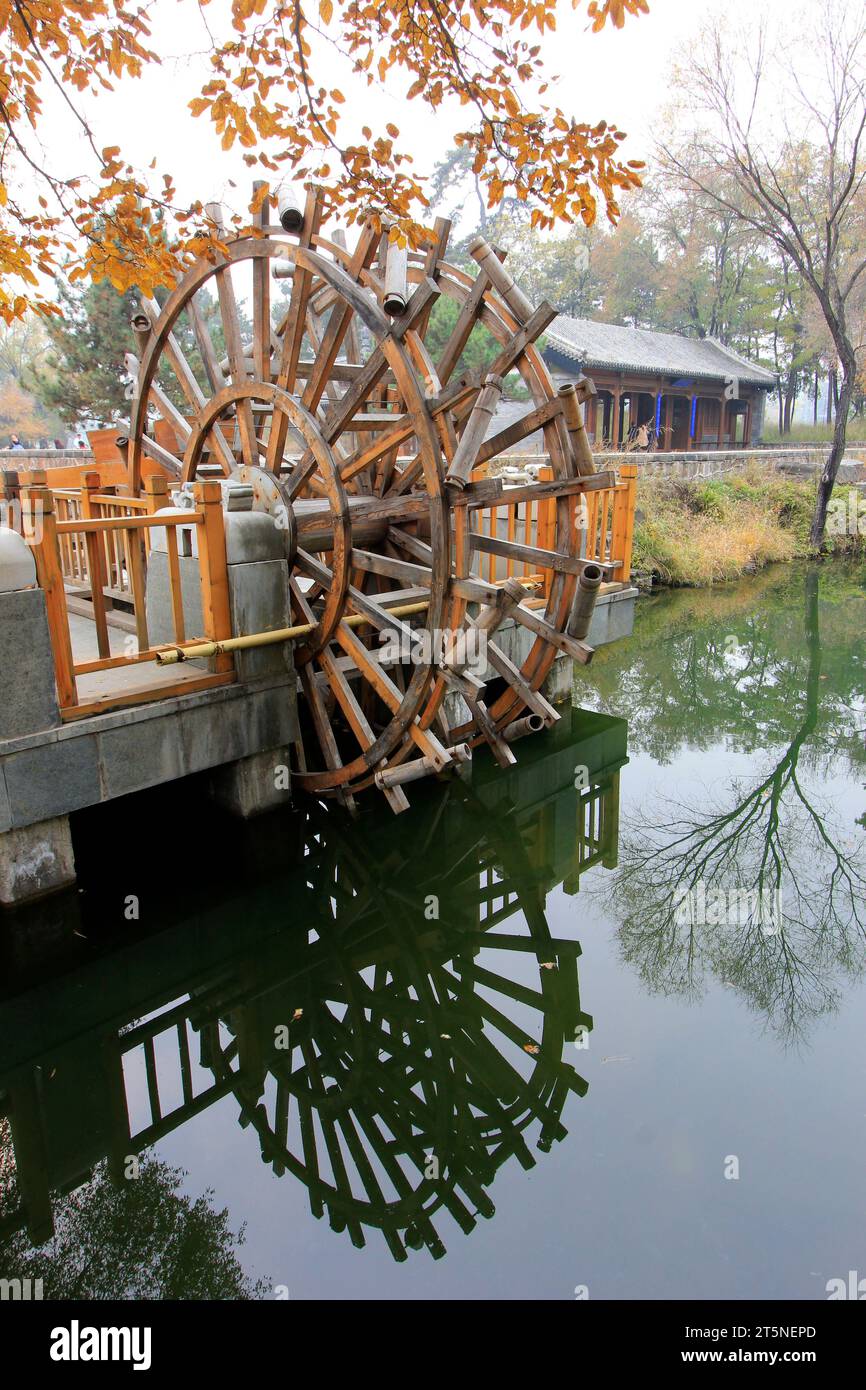 CHENGDE CITY - OCTOBER 20: Chinese traditional style water wheel in chengde mountain resort, on october 20, 2014, Chengde City, Hebei Province, China Stock Photohttps://www.alamy.com/image-license-details/?v=1https://www.alamy.com/chengde-city-october-20-chinese-traditional-style-water-wheel-in-chengde-mountain-resort-on-october-20-2014-chengde-city-hebei-province-china-image571488021.html
CHENGDE CITY - OCTOBER 20: Chinese traditional style water wheel in chengde mountain resort, on october 20, 2014, Chengde City, Hebei Province, China Stock Photohttps://www.alamy.com/image-license-details/?v=1https://www.alamy.com/chengde-city-october-20-chinese-traditional-style-water-wheel-in-chengde-mountain-resort-on-october-20-2014-chengde-city-hebei-province-china-image571488021.htmlRF2T5NEPD–CHENGDE CITY - OCTOBER 20: Chinese traditional style water wheel in chengde mountain resort, on october 20, 2014, Chengde City, Hebei Province, China
 A tea garden in the Imperial Summer Villa of Chengde Stock Photohttps://www.alamy.com/image-license-details/?v=1https://www.alamy.com/stock-photo-a-tea-garden-in-the-imperial-summer-villa-of-chengde-13240461.html
A tea garden in the Imperial Summer Villa of Chengde Stock Photohttps://www.alamy.com/image-license-details/?v=1https://www.alamy.com/stock-photo-a-tea-garden-in-the-imperial-summer-villa-of-chengde-13240461.htmlRMACX0PP–A tea garden in the Imperial Summer Villa of Chengde
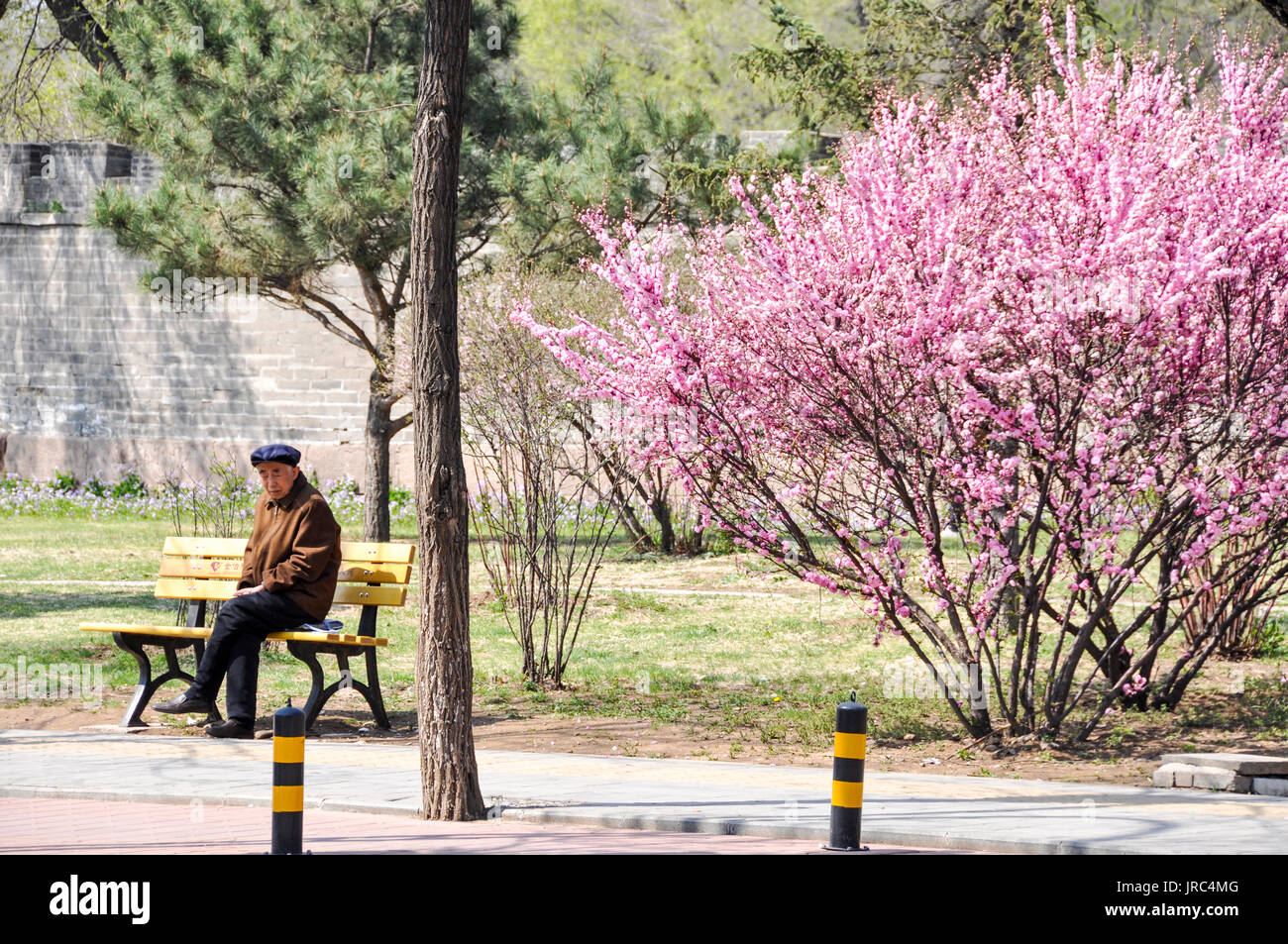 A elderly Chinese gentleman sitting on a bench in Chengde, Hebei, China. Stock Photohttps://www.alamy.com/image-license-details/?v=1https://www.alamy.com/a-elderly-chinese-gentleman-sitting-on-a-bench-in-chengde-hebei-china-image152087168.html
A elderly Chinese gentleman sitting on a bench in Chengde, Hebei, China. Stock Photohttps://www.alamy.com/image-license-details/?v=1https://www.alamy.com/a-elderly-chinese-gentleman-sitting-on-a-bench-in-chengde-hebei-china-image152087168.htmlRMJRC4MG–A elderly Chinese gentleman sitting on a bench in Chengde, Hebei, China.
![Chinese League of Nations Delegate Giving a Speech, 1933. 'Japan's forceful infiltration into Jehol [Rehe Province, China], coming so soon after her Manchurian annexation, put before the League of Nations a test case. And who knew? Maybe if Japan was intimidated she might even walk out of the League for good...At Geneva, Japan was duly censured for her actions...The Chinese delegate [talked of Japan's] 'usurpation of power by her military chieftains who are bent on defying the international instruments of peace and the force of world opinion - Japan finds herself all alone'. From "Time To Stock Photo Chinese League of Nations Delegate Giving a Speech, 1933. 'Japan's forceful infiltration into Jehol [Rehe Province, China], coming so soon after her Manchurian annexation, put before the League of Nations a test case. And who knew? Maybe if Japan was intimidated she might even walk out of the League for good...At Geneva, Japan was duly censured for her actions...The Chinese delegate [talked of Japan's] 'usurpation of power by her military chieftains who are bent on defying the international instruments of peace and the force of world opinion - Japan finds herself all alone'. From "Time To Stock Photo](https://c8.alamy.com/comp/2XT35NB/chinese-league-of-nations-delegate-giving-a-speech-1933-japans-forceful-infiltration-into-jehol-rehe-province-china-coming-so-soon-after-her-manchurian-annexation-put-before-the-league-of-nations-a-test-case-and-who-knew-maybe-if-japan-was-intimidated-she-might-even-walk-out-of-the-league-for-goodat-geneva-japan-was-duly-censured-for-her-actionsthe-chinese-delegate-talked-of-japans-usurpation-of-power-by-her-military-chieftains-who-are-bent-on-defying-the-international-instruments-of-peace-and-the-force-of-world-opinion-japan-finds-herself-all-alone-from-quottime-to-2XT35NB.jpg) Chinese League of Nations Delegate Giving a Speech, 1933. 'Japan's forceful infiltration into Jehol [Rehe Province, China], coming so soon after her Manchurian annexation, put before the League of Nations a test case. And who knew? Maybe if Japan was intimidated she might even walk out of the League for good...At Geneva, Japan was duly censured for her actions...The Chinese delegate [talked of Japan's] 'usurpation of power by her military chieftains who are bent on defying the international instruments of peace and the force of world opinion - Japan finds herself all alone'. From "Time To Stock Photohttps://www.alamy.com/image-license-details/?v=1https://www.alamy.com/chinese-league-of-nations-delegate-giving-a-speech-1933-japans-forceful-infiltration-into-jehol-rehe-province-china-coming-so-soon-after-her-manchurian-annexation-put-before-the-league-of-nations-a-test-case-and-who-knew-maybe-if-japan-was-intimidated-she-might-even-walk-out-of-the-league-for-goodat-geneva-japan-was-duly-censured-for-her-actionsthe-chinese-delegate-talked-of-japans-usurpation-of-power-by-her-military-chieftains-who-are-bent-on-defying-the-international-instruments-of-peace-and-the-force-of-world-opinion-japan-finds-herself-all-alone-from-quottime-to-image617184999.html
Chinese League of Nations Delegate Giving a Speech, 1933. 'Japan's forceful infiltration into Jehol [Rehe Province, China], coming so soon after her Manchurian annexation, put before the League of Nations a test case. And who knew? Maybe if Japan was intimidated she might even walk out of the League for good...At Geneva, Japan was duly censured for her actions...The Chinese delegate [talked of Japan's] 'usurpation of power by her military chieftains who are bent on defying the international instruments of peace and the force of world opinion - Japan finds herself all alone'. From "Time To Stock Photohttps://www.alamy.com/image-license-details/?v=1https://www.alamy.com/chinese-league-of-nations-delegate-giving-a-speech-1933-japans-forceful-infiltration-into-jehol-rehe-province-china-coming-so-soon-after-her-manchurian-annexation-put-before-the-league-of-nations-a-test-case-and-who-knew-maybe-if-japan-was-intimidated-she-might-even-walk-out-of-the-league-for-goodat-geneva-japan-was-duly-censured-for-her-actionsthe-chinese-delegate-talked-of-japans-usurpation-of-power-by-her-military-chieftains-who-are-bent-on-defying-the-international-instruments-of-peace-and-the-force-of-world-opinion-japan-finds-herself-all-alone-from-quottime-to-image617184999.htmlRM2XT35NB–Chinese League of Nations Delegate Giving a Speech, 1933. 'Japan's forceful infiltration into Jehol [Rehe Province, China], coming so soon after her Manchurian annexation, put before the League of Nations a test case. And who knew? Maybe if Japan was intimidated she might even walk out of the League for good...At Geneva, Japan was duly censured for her actions...The Chinese delegate [talked of Japan's] 'usurpation of power by her military chieftains who are bent on defying the international instruments of peace and the force of world opinion - Japan finds herself all alone'. From "Time To
 Anyuan Miao (Temple of Distant Peace) was built in 1764 and is a copy of the now destroyed Ili Temple in Xinjiang. In 1703, Chengde was chosen by the Kangxi Emperor as the location for his summer residence. Constructed throughout the eighteenth century, the Mountain Resort was used by both the Yongzheng and Qianlong emperors. The site is currently an UNESCO World Heritage Site. Since the seat of government followed the emperor, Chengde was a political center of the Chinese empire during these times. Chengde, formerly known as Jehol, reached its height under the Qianlong Emperor 1735-1796 (di Stock Photohttps://www.alamy.com/image-license-details/?v=1https://www.alamy.com/anyuan-miao-temple-of-distant-peace-was-built-in-1764-and-is-a-copy-of-the-now-destroyed-ili-temple-in-xinjiang-in-1703-chengde-was-chosen-by-the-kangxi-emperor-as-the-location-for-his-summer-residence-constructed-throughout-the-eighteenth-century-the-mountain-resort-was-used-by-both-the-yongzheng-and-qianlong-emperors-the-site-is-currently-an-unesco-world-heritage-site-since-the-seat-of-government-followed-the-emperor-chengde-was-a-political-center-of-the-chinese-empire-during-these-times-chengde-formerly-known-as-jehol-reached-its-height-under-the-qianlong-emperor-1735-1796-di-image344267290.html
Anyuan Miao (Temple of Distant Peace) was built in 1764 and is a copy of the now destroyed Ili Temple in Xinjiang. In 1703, Chengde was chosen by the Kangxi Emperor as the location for his summer residence. Constructed throughout the eighteenth century, the Mountain Resort was used by both the Yongzheng and Qianlong emperors. The site is currently an UNESCO World Heritage Site. Since the seat of government followed the emperor, Chengde was a political center of the Chinese empire during these times. Chengde, formerly known as Jehol, reached its height under the Qianlong Emperor 1735-1796 (di Stock Photohttps://www.alamy.com/image-license-details/?v=1https://www.alamy.com/anyuan-miao-temple-of-distant-peace-was-built-in-1764-and-is-a-copy-of-the-now-destroyed-ili-temple-in-xinjiang-in-1703-chengde-was-chosen-by-the-kangxi-emperor-as-the-location-for-his-summer-residence-constructed-throughout-the-eighteenth-century-the-mountain-resort-was-used-by-both-the-yongzheng-and-qianlong-emperors-the-site-is-currently-an-unesco-world-heritage-site-since-the-seat-of-government-followed-the-emperor-chengde-was-a-political-center-of-the-chinese-empire-during-these-times-chengde-formerly-known-as-jehol-reached-its-height-under-the-qianlong-emperor-1735-1796-di-image344267290.htmlRM2B02MCA–Anyuan Miao (Temple of Distant Peace) was built in 1764 and is a copy of the now destroyed Ili Temple in Xinjiang. In 1703, Chengde was chosen by the Kangxi Emperor as the location for his summer residence. Constructed throughout the eighteenth century, the Mountain Resort was used by both the Yongzheng and Qianlong emperors. The site is currently an UNESCO World Heritage Site. Since the seat of government followed the emperor, Chengde was a political center of the Chinese empire during these times. Chengde, formerly known as Jehol, reached its height under the Qianlong Emperor 1735-1796 (di
 Shuixin Pavilion on Lower Lake, Chengdu Mountain Resort (aka Escaping-the-heat Imperial Villa, aka Summer Resort), Chengde 承德, Hebei, China Stock Photohttps://www.alamy.com/image-license-details/?v=1https://www.alamy.com/shuixin-pavilion-on-lower-lake-chengdu-mountain-resort-aka-escaping-the-heat-imperial-villa-aka-summer-resort-chengde-hebei-china-image390975324.html
Shuixin Pavilion on Lower Lake, Chengdu Mountain Resort (aka Escaping-the-heat Imperial Villa, aka Summer Resort), Chengde 承德, Hebei, China Stock Photohttps://www.alamy.com/image-license-details/?v=1https://www.alamy.com/shuixin-pavilion-on-lower-lake-chengdu-mountain-resort-aka-escaping-the-heat-imperial-villa-aka-summer-resort-chengde-hebei-china-image390975324.htmlRM2DM2D0C–Shuixin Pavilion on Lower Lake, Chengdu Mountain Resort (aka Escaping-the-heat Imperial Villa, aka Summer Resort), Chengde 承德, Hebei, China
 Gezicht op een deel van het keizerlijk zomerpaleis in Chengde (Jehol) te China View of a part of the imperial summer palace in Chengde (Jehol) to China. In the 18th century the emperors had the early Qing Dynasty build a refuge in the mountains, surrounded by walls. It was provided with parks with lakes, pagodes and palaces. Landscape with river or lake. In the background hills. On the front right part of the imperial summer palace. Title in Chinese rechtsboven. Manufacturer : printmaker Matteo Ripanaar design: Shen YuPlaats manufacture: China Date: 1712 - 1714 Material: Chinese paper Techniqu Stock Photohttps://www.alamy.com/image-license-details/?v=1https://www.alamy.com/gezicht-op-een-deel-van-het-keizerlijk-zomerpaleis-in-chengde-jehol-te-china-view-of-a-part-of-the-imperial-summer-palace-in-chengde-jehol-to-china-in-the-18th-century-the-emperors-had-the-early-qing-dynasty-build-a-refuge-in-the-mountains-surrounded-by-walls-it-was-provided-with-parks-with-lakes-pagodes-and-palaces-landscape-with-river-or-lake-in-the-background-hills-on-the-front-right-part-of-the-imperial-summer-palace-title-in-chinese-rechtsboven-manufacturer-printmaker-matteo-ripanaar-design-shen-yuplaats-manufacture-china-date-1712-1714-material-chinese-paper-techniqu-image348402725.html
Gezicht op een deel van het keizerlijk zomerpaleis in Chengde (Jehol) te China View of a part of the imperial summer palace in Chengde (Jehol) to China. In the 18th century the emperors had the early Qing Dynasty build a refuge in the mountains, surrounded by walls. It was provided with parks with lakes, pagodes and palaces. Landscape with river or lake. In the background hills. On the front right part of the imperial summer palace. Title in Chinese rechtsboven. Manufacturer : printmaker Matteo Ripanaar design: Shen YuPlaats manufacture: China Date: 1712 - 1714 Material: Chinese paper Techniqu Stock Photohttps://www.alamy.com/image-license-details/?v=1https://www.alamy.com/gezicht-op-een-deel-van-het-keizerlijk-zomerpaleis-in-chengde-jehol-te-china-view-of-a-part-of-the-imperial-summer-palace-in-chengde-jehol-to-china-in-the-18th-century-the-emperors-had-the-early-qing-dynasty-build-a-refuge-in-the-mountains-surrounded-by-walls-it-was-provided-with-parks-with-lakes-pagodes-and-palaces-landscape-with-river-or-lake-in-the-background-hills-on-the-front-right-part-of-the-imperial-summer-palace-title-in-chinese-rechtsboven-manufacturer-printmaker-matteo-ripanaar-design-shen-yuplaats-manufacture-china-date-1712-1714-material-chinese-paper-techniqu-image348402725.htmlRM2B6R36D–Gezicht op een deel van het keizerlijk zomerpaleis in Chengde (Jehol) te China View of a part of the imperial summer palace in Chengde (Jehol) to China. In the 18th century the emperors had the early Qing Dynasty build a refuge in the mountains, surrounded by walls. It was provided with parks with lakes, pagodes and palaces. Landscape with river or lake. In the background hills. On the front right part of the imperial summer palace. Title in Chinese rechtsboven. Manufacturer : printmaker Matteo Ripanaar design: Shen YuPlaats manufacture: China Date: 1712 - 1714 Material: Chinese paper Techniqu
 View of a part of the Imperial Summer Palace in Chengde (Jehol) in China, Matteo Ripa, After Shen Yu, 1712 - 1714 print View of a part of the imperial summer palace, in the hilly landscape with a lake, in Chengde (Jehol) in China. In the 18th century, the emperors of the early Qing Dynasty had a refuge in the mountains, surrounded by walls. It was provided with parks with lakes, pagodas and palaces. China China paper engraving city-view, and landscape with man-made constructions Chengde Stock Photohttps://www.alamy.com/image-license-details/?v=1https://www.alamy.com/view-of-a-part-of-the-imperial-summer-palace-in-chengde-jehol-in-china-matteo-ripa-after-shen-yu-1712-1714-print-view-of-a-part-of-the-imperial-summer-palace-in-the-hilly-landscape-with-a-lake-in-chengde-jehol-in-china-in-the-18th-century-the-emperors-of-the-early-qing-dynasty-had-a-refuge-in-the-mountains-surrounded-by-walls-it-was-provided-with-parks-with-lakes-pagodas-and-palaces-china-china-paper-engraving-city-view-and-landscape-with-man-made-constructions-chengde-image593842771.html
View of a part of the Imperial Summer Palace in Chengde (Jehol) in China, Matteo Ripa, After Shen Yu, 1712 - 1714 print View of a part of the imperial summer palace, in the hilly landscape with a lake, in Chengde (Jehol) in China. In the 18th century, the emperors of the early Qing Dynasty had a refuge in the mountains, surrounded by walls. It was provided with parks with lakes, pagodas and palaces. China China paper engraving city-view, and landscape with man-made constructions Chengde Stock Photohttps://www.alamy.com/image-license-details/?v=1https://www.alamy.com/view-of-a-part-of-the-imperial-summer-palace-in-chengde-jehol-in-china-matteo-ripa-after-shen-yu-1712-1714-print-view-of-a-part-of-the-imperial-summer-palace-in-the-hilly-landscape-with-a-lake-in-chengde-jehol-in-china-in-the-18th-century-the-emperors-of-the-early-qing-dynasty-had-a-refuge-in-the-mountains-surrounded-by-walls-it-was-provided-with-parks-with-lakes-pagodas-and-palaces-china-china-paper-engraving-city-view-and-landscape-with-man-made-constructions-chengde-image593842771.htmlRM2WE3TEB–View of a part of the Imperial Summer Palace in Chengde (Jehol) in China, Matteo Ripa, After Shen Yu, 1712 - 1714 print View of a part of the imperial summer palace, in the hilly landscape with a lake, in Chengde (Jehol) in China. In the 18th century, the emperors of the early Qing Dynasty had a refuge in the mountains, surrounded by walls. It was provided with parks with lakes, pagodas and palaces. China China paper engraving city-view, and landscape with man-made constructions Chengde
 CHENGDE CITY - OCTOBER 20: Chinese traditional style water wheel in chengde mountain resort, on october 20, 2014, Chengde City, Hebei Province, China Stock Photohttps://www.alamy.com/image-license-details/?v=1https://www.alamy.com/chengde-city-october-20-chinese-traditional-style-water-wheel-in-chengde-mountain-resort-on-october-20-2014-chengde-city-hebei-province-china-image571488009.html
CHENGDE CITY - OCTOBER 20: Chinese traditional style water wheel in chengde mountain resort, on october 20, 2014, Chengde City, Hebei Province, China Stock Photohttps://www.alamy.com/image-license-details/?v=1https://www.alamy.com/chengde-city-october-20-chinese-traditional-style-water-wheel-in-chengde-mountain-resort-on-october-20-2014-chengde-city-hebei-province-china-image571488009.htmlRF2T5NEP1–CHENGDE CITY - OCTOBER 20: Chinese traditional style water wheel in chengde mountain resort, on october 20, 2014, Chengde City, Hebei Province, China
 An amusing Chinese signpost in the Imperial Summer Villa of Chengde Stock Photohttps://www.alamy.com/image-license-details/?v=1https://www.alamy.com/stock-photo-an-amusing-chinese-signpost-in-the-imperial-summer-villa-of-chengde-13240444.html
An amusing Chinese signpost in the Imperial Summer Villa of Chengde Stock Photohttps://www.alamy.com/image-license-details/?v=1https://www.alamy.com/stock-photo-an-amusing-chinese-signpost-in-the-imperial-summer-villa-of-chengde-13240444.htmlRMACX0NH–An amusing Chinese signpost in the Imperial Summer Villa of Chengde
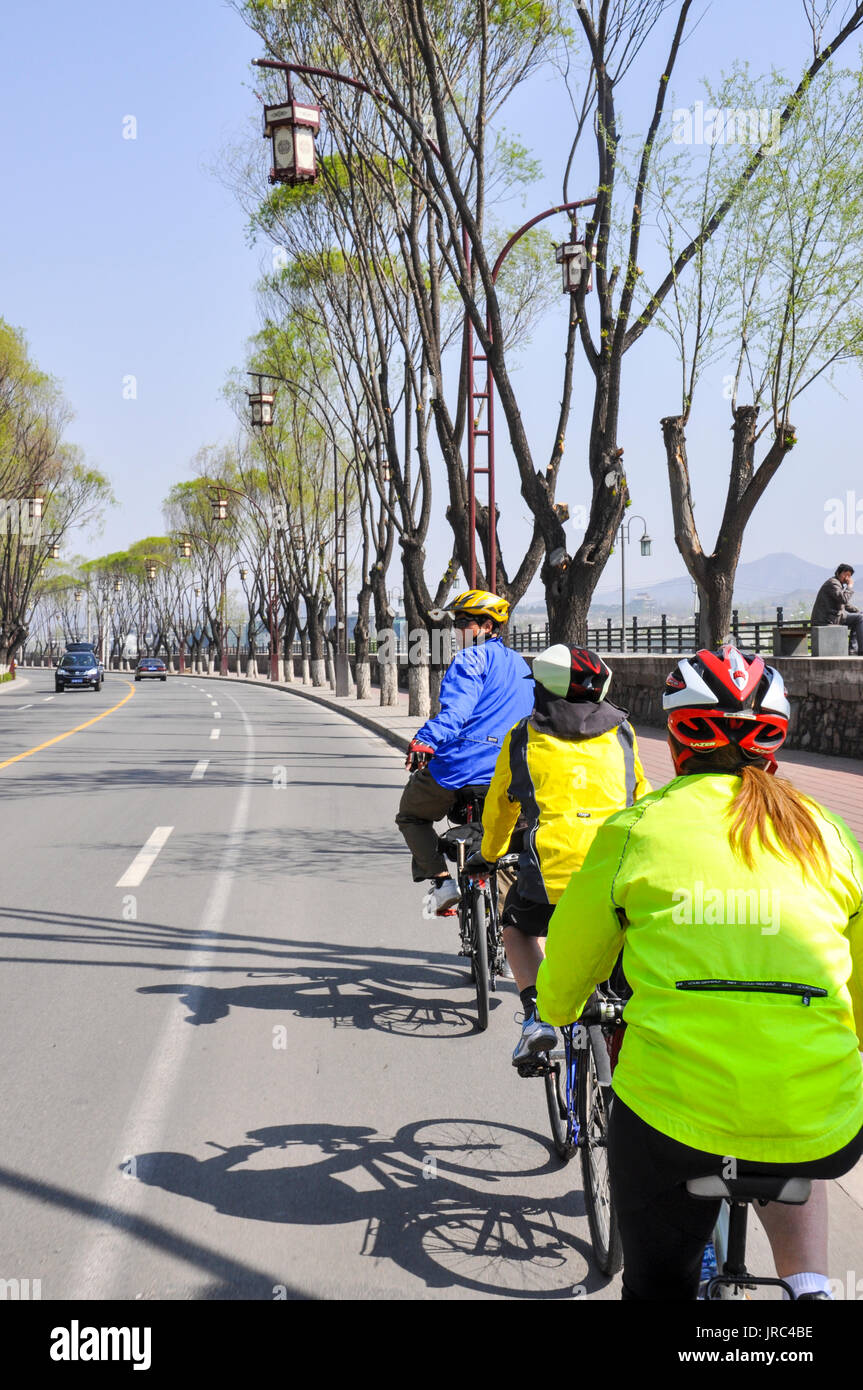 Touring Caucasian cyclists and their guid cycling in Chengde, Hebei Stock Photohttps://www.alamy.com/image-license-details/?v=1https://www.alamy.com/touring-caucasian-cyclists-and-their-guid-cycling-in-chengde-hebei-image152086914.html
Touring Caucasian cyclists and their guid cycling in Chengde, Hebei Stock Photohttps://www.alamy.com/image-license-details/?v=1https://www.alamy.com/touring-caucasian-cyclists-and-their-guid-cycling-in-chengde-hebei-image152086914.htmlRMJRC4BE–Touring Caucasian cyclists and their guid cycling in Chengde, Hebei
![League of Nations Delegates, 1933. 'Japan's forceful infiltration into Jehol [Rehe Province, China], coming so soon after her Manchurian annexation, put before the League of Nations a test case. And who knew? Maybe if Japan was intimidated she might even walk out of the League for good'. From "Time To Remember - The Time Of The Monster", 1933 (Reel 3); a documentary film about events of 1933, rise of Roosevelt and Hitler. Stock Photo League of Nations Delegates, 1933. 'Japan's forceful infiltration into Jehol [Rehe Province, China], coming so soon after her Manchurian annexation, put before the League of Nations a test case. And who knew? Maybe if Japan was intimidated she might even walk out of the League for good'. From "Time To Remember - The Time Of The Monster", 1933 (Reel 3); a documentary film about events of 1933, rise of Roosevelt and Hitler. Stock Photo](https://c8.alamy.com/comp/2XT35ND/league-of-nations-delegates-1933-japans-forceful-infiltration-into-jehol-rehe-province-china-coming-so-soon-after-her-manchurian-annexation-put-before-the-league-of-nations-a-test-case-and-who-knew-maybe-if-japan-was-intimidated-she-might-even-walk-out-of-the-league-for-good-from-quottime-to-remember-the-time-of-the-monsterquot-1933-reel-3-a-documentary-film-about-events-of-1933-rise-of-roosevelt-and-hitler-2XT35ND.jpg) League of Nations Delegates, 1933. 'Japan's forceful infiltration into Jehol [Rehe Province, China], coming so soon after her Manchurian annexation, put before the League of Nations a test case. And who knew? Maybe if Japan was intimidated she might even walk out of the League for good'. From "Time To Remember - The Time Of The Monster", 1933 (Reel 3); a documentary film about events of 1933, rise of Roosevelt and Hitler. Stock Photohttps://www.alamy.com/image-license-details/?v=1https://www.alamy.com/league-of-nations-delegates-1933-japans-forceful-infiltration-into-jehol-rehe-province-china-coming-so-soon-after-her-manchurian-annexation-put-before-the-league-of-nations-a-test-case-and-who-knew-maybe-if-japan-was-intimidated-she-might-even-walk-out-of-the-league-for-good-from-quottime-to-remember-the-time-of-the-monsterquot-1933-reel-3-a-documentary-film-about-events-of-1933-rise-of-roosevelt-and-hitler-image617185001.html
League of Nations Delegates, 1933. 'Japan's forceful infiltration into Jehol [Rehe Province, China], coming so soon after her Manchurian annexation, put before the League of Nations a test case. And who knew? Maybe if Japan was intimidated she might even walk out of the League for good'. From "Time To Remember - The Time Of The Monster", 1933 (Reel 3); a documentary film about events of 1933, rise of Roosevelt and Hitler. Stock Photohttps://www.alamy.com/image-license-details/?v=1https://www.alamy.com/league-of-nations-delegates-1933-japans-forceful-infiltration-into-jehol-rehe-province-china-coming-so-soon-after-her-manchurian-annexation-put-before-the-league-of-nations-a-test-case-and-who-knew-maybe-if-japan-was-intimidated-she-might-even-walk-out-of-the-league-for-good-from-quottime-to-remember-the-time-of-the-monsterquot-1933-reel-3-a-documentary-film-about-events-of-1933-rise-of-roosevelt-and-hitler-image617185001.htmlRM2XT35ND–League of Nations Delegates, 1933. 'Japan's forceful infiltration into Jehol [Rehe Province, China], coming so soon after her Manchurian annexation, put before the League of Nations a test case. And who knew? Maybe if Japan was intimidated she might even walk out of the League for good'. From "Time To Remember - The Time Of The Monster", 1933 (Reel 3); a documentary film about events of 1933, rise of Roosevelt and Hitler.
 Anyuan Miao (Temple of Distant Peace) was built in 1764 and is a copy of the now destroyed Ili Temple in Xinjiang. In 1703, Chengde was chosen by the Kangxi Emperor as the location for his summer residence. Constructed throughout the eighteenth century, the Mountain Resort was used by both the Yongzheng and Qianlong emperors. The site is currently an UNESCO World Heritage Site. Since the seat of government followed the emperor, Chengde was a political center of the Chinese empire during these times. Chengde, formerly known as Jehol, reached its height under the Qianlong Emperor 1735-1796 (di Stock Photohttps://www.alamy.com/image-license-details/?v=1https://www.alamy.com/anyuan-miao-temple-of-distant-peace-was-built-in-1764-and-is-a-copy-of-the-now-destroyed-ili-temple-in-xinjiang-in-1703-chengde-was-chosen-by-the-kangxi-emperor-as-the-location-for-his-summer-residence-constructed-throughout-the-eighteenth-century-the-mountain-resort-was-used-by-both-the-yongzheng-and-qianlong-emperors-the-site-is-currently-an-unesco-world-heritage-site-since-the-seat-of-government-followed-the-emperor-chengde-was-a-political-center-of-the-chinese-empire-during-these-times-chengde-formerly-known-as-jehol-reached-its-height-under-the-qianlong-emperor-1735-1796-di-image344267287.html
Anyuan Miao (Temple of Distant Peace) was built in 1764 and is a copy of the now destroyed Ili Temple in Xinjiang. In 1703, Chengde was chosen by the Kangxi Emperor as the location for his summer residence. Constructed throughout the eighteenth century, the Mountain Resort was used by both the Yongzheng and Qianlong emperors. The site is currently an UNESCO World Heritage Site. Since the seat of government followed the emperor, Chengde was a political center of the Chinese empire during these times. Chengde, formerly known as Jehol, reached its height under the Qianlong Emperor 1735-1796 (di Stock Photohttps://www.alamy.com/image-license-details/?v=1https://www.alamy.com/anyuan-miao-temple-of-distant-peace-was-built-in-1764-and-is-a-copy-of-the-now-destroyed-ili-temple-in-xinjiang-in-1703-chengde-was-chosen-by-the-kangxi-emperor-as-the-location-for-his-summer-residence-constructed-throughout-the-eighteenth-century-the-mountain-resort-was-used-by-both-the-yongzheng-and-qianlong-emperors-the-site-is-currently-an-unesco-world-heritage-site-since-the-seat-of-government-followed-the-emperor-chengde-was-a-political-center-of-the-chinese-empire-during-these-times-chengde-formerly-known-as-jehol-reached-its-height-under-the-qianlong-emperor-1735-1796-di-image344267287.htmlRM2B02MC7–Anyuan Miao (Temple of Distant Peace) was built in 1764 and is a copy of the now destroyed Ili Temple in Xinjiang. In 1703, Chengde was chosen by the Kangxi Emperor as the location for his summer residence. Constructed throughout the eighteenth century, the Mountain Resort was used by both the Yongzheng and Qianlong emperors. The site is currently an UNESCO World Heritage Site. Since the seat of government followed the emperor, Chengde was a political center of the Chinese empire during these times. Chengde, formerly known as Jehol, reached its height under the Qianlong Emperor 1735-1796 (di
 Shuixin Pavilion on Lower Lake, Chengdu Mountain Resort (aka Escaping-the-heat Imperial Villa, aka Summer Resort), Chengde 承德, Hebei, China Stock Photohttps://www.alamy.com/image-license-details/?v=1https://www.alamy.com/shuixin-pavilion-on-lower-lake-chengdu-mountain-resort-aka-escaping-the-heat-imperial-villa-aka-summer-resort-chengde-hebei-china-image390975308.html
Shuixin Pavilion on Lower Lake, Chengdu Mountain Resort (aka Escaping-the-heat Imperial Villa, aka Summer Resort), Chengde 承德, Hebei, China Stock Photohttps://www.alamy.com/image-license-details/?v=1https://www.alamy.com/shuixin-pavilion-on-lower-lake-chengdu-mountain-resort-aka-escaping-the-heat-imperial-villa-aka-summer-resort-chengde-hebei-china-image390975308.htmlRM2DM2CYT–Shuixin Pavilion on Lower Lake, Chengdu Mountain Resort (aka Escaping-the-heat Imperial Villa, aka Summer Resort), Chengde 承德, Hebei, China
 Gezicht op een deel van het keizerlijk zomerpaleis in Chengde (Jehol) te China View of a part of the imperial summer palace in Chengde (Jehol) to China. In the foreground, an island in the river with pavilions. In the background hills. In the 18th century the emperors had the early Qing Dynasty build a refuge in the mountains, surrounded by walls. It was equipped parks with lakes, pagodas and paleizen. Manufacturer : printmaker Matteo Ripaprentmaker: Zhang Kuinaar design: Shen YuPlaats manufacture: China Date: 1712 - 1714 Material: Chinese paper Technique: engra (printing process) Dimensions: Stock Photohttps://www.alamy.com/image-license-details/?v=1https://www.alamy.com/gezicht-op-een-deel-van-het-keizerlijk-zomerpaleis-in-chengde-jehol-te-china-view-of-a-part-of-the-imperial-summer-palace-in-chengde-jehol-to-china-in-the-foreground-an-island-in-the-river-with-pavilions-in-the-background-hills-in-the-18th-century-the-emperors-had-the-early-qing-dynasty-build-a-refuge-in-the-mountains-surrounded-by-walls-it-was-equipped-parks-with-lakes-pagodas-and-paleizen-manufacturer-printmaker-matteo-ripaprentmaker-zhang-kuinaar-design-shen-yuplaats-manufacture-china-date-1712-1714-material-chinese-paper-technique-engra-printing-process-dimensions-image348402753.html
Gezicht op een deel van het keizerlijk zomerpaleis in Chengde (Jehol) te China View of a part of the imperial summer palace in Chengde (Jehol) to China. In the foreground, an island in the river with pavilions. In the background hills. In the 18th century the emperors had the early Qing Dynasty build a refuge in the mountains, surrounded by walls. It was equipped parks with lakes, pagodas and paleizen. Manufacturer : printmaker Matteo Ripaprentmaker: Zhang Kuinaar design: Shen YuPlaats manufacture: China Date: 1712 - 1714 Material: Chinese paper Technique: engra (printing process) Dimensions: Stock Photohttps://www.alamy.com/image-license-details/?v=1https://www.alamy.com/gezicht-op-een-deel-van-het-keizerlijk-zomerpaleis-in-chengde-jehol-te-china-view-of-a-part-of-the-imperial-summer-palace-in-chengde-jehol-to-china-in-the-foreground-an-island-in-the-river-with-pavilions-in-the-background-hills-in-the-18th-century-the-emperors-had-the-early-qing-dynasty-build-a-refuge-in-the-mountains-surrounded-by-walls-it-was-equipped-parks-with-lakes-pagodas-and-paleizen-manufacturer-printmaker-matteo-ripaprentmaker-zhang-kuinaar-design-shen-yuplaats-manufacture-china-date-1712-1714-material-chinese-paper-technique-engra-printing-process-dimensions-image348402753.htmlRM2B6R37D–Gezicht op een deel van het keizerlijk zomerpaleis in Chengde (Jehol) te China View of a part of the imperial summer palace in Chengde (Jehol) to China. In the foreground, an island in the river with pavilions. In the background hills. In the 18th century the emperors had the early Qing Dynasty build a refuge in the mountains, surrounded by walls. It was equipped parks with lakes, pagodas and paleizen. Manufacturer : printmaker Matteo Ripaprentmaker: Zhang Kuinaar design: Shen YuPlaats manufacture: China Date: 1712 - 1714 Material: Chinese paper Technique: engra (printing process) Dimensions:
 View of a part of the Imperial Summer Palace in Chengde (Jehol) in China, Matteo Ripa, After Shen Yu, 1712 - 1714 print View of a part of the imperial summer palace, in a landscape with river or more, in Chengde (Jehol) in China. In the 18th century, the emperors of the early Qing Dynasty had a refuge in the mountains, surrounded by walls. It was provided with parks with lakes, pagodas and palaces. China China paper engraving city-view, and landscape with man-made constructions Chengde Stock Photohttps://www.alamy.com/image-license-details/?v=1https://www.alamy.com/view-of-a-part-of-the-imperial-summer-palace-in-chengde-jehol-in-china-matteo-ripa-after-shen-yu-1712-1714-print-view-of-a-part-of-the-imperial-summer-palace-in-a-landscape-with-river-or-more-in-chengde-jehol-in-china-in-the-18th-century-the-emperors-of-the-early-qing-dynasty-had-a-refuge-in-the-mountains-surrounded-by-walls-it-was-provided-with-parks-with-lakes-pagodas-and-palaces-china-china-paper-engraving-city-view-and-landscape-with-man-made-constructions-chengde-image593864236.html
View of a part of the Imperial Summer Palace in Chengde (Jehol) in China, Matteo Ripa, After Shen Yu, 1712 - 1714 print View of a part of the imperial summer palace, in a landscape with river or more, in Chengde (Jehol) in China. In the 18th century, the emperors of the early Qing Dynasty had a refuge in the mountains, surrounded by walls. It was provided with parks with lakes, pagodas and palaces. China China paper engraving city-view, and landscape with man-made constructions Chengde Stock Photohttps://www.alamy.com/image-license-details/?v=1https://www.alamy.com/view-of-a-part-of-the-imperial-summer-palace-in-chengde-jehol-in-china-matteo-ripa-after-shen-yu-1712-1714-print-view-of-a-part-of-the-imperial-summer-palace-in-a-landscape-with-river-or-more-in-chengde-jehol-in-china-in-the-18th-century-the-emperors-of-the-early-qing-dynasty-had-a-refuge-in-the-mountains-surrounded-by-walls-it-was-provided-with-parks-with-lakes-pagodas-and-palaces-china-china-paper-engraving-city-view-and-landscape-with-man-made-constructions-chengde-image593864236.htmlRM2WE4RW0–View of a part of the Imperial Summer Palace in Chengde (Jehol) in China, Matteo Ripa, After Shen Yu, 1712 - 1714 print View of a part of the imperial summer palace, in a landscape with river or more, in Chengde (Jehol) in China. In the 18th century, the emperors of the early Qing Dynasty had a refuge in the mountains, surrounded by walls. It was provided with parks with lakes, pagodas and palaces. China China paper engraving city-view, and landscape with man-made constructions Chengde
 CHENGDE CITY - OCTOBER 20: Chinese traditional style water wheel in chengde mountain resort, on october 20, 2014, Chengde City, Hebei Province, China Stock Photohttps://www.alamy.com/image-license-details/?v=1https://www.alamy.com/chengde-city-october-20-chinese-traditional-style-water-wheel-in-chengde-mountain-resort-on-october-20-2014-chengde-city-hebei-province-china-image571487999.html
CHENGDE CITY - OCTOBER 20: Chinese traditional style water wheel in chengde mountain resort, on october 20, 2014, Chengde City, Hebei Province, China Stock Photohttps://www.alamy.com/image-license-details/?v=1https://www.alamy.com/chengde-city-october-20-chinese-traditional-style-water-wheel-in-chengde-mountain-resort-on-october-20-2014-chengde-city-hebei-province-china-image571487999.htmlRF2T5NENK–CHENGDE CITY - OCTOBER 20: Chinese traditional style water wheel in chengde mountain resort, on october 20, 2014, Chengde City, Hebei Province, China
 The Imperial Summer Villa in Chengde Stock Photohttps://www.alamy.com/image-license-details/?v=1https://www.alamy.com/stock-photo-the-imperial-summer-villa-in-chengde-13240433.html
The Imperial Summer Villa in Chengde Stock Photohttps://www.alamy.com/image-license-details/?v=1https://www.alamy.com/stock-photo-the-imperial-summer-villa-in-chengde-13240433.htmlRMACX0MJ–The Imperial Summer Villa in Chengde
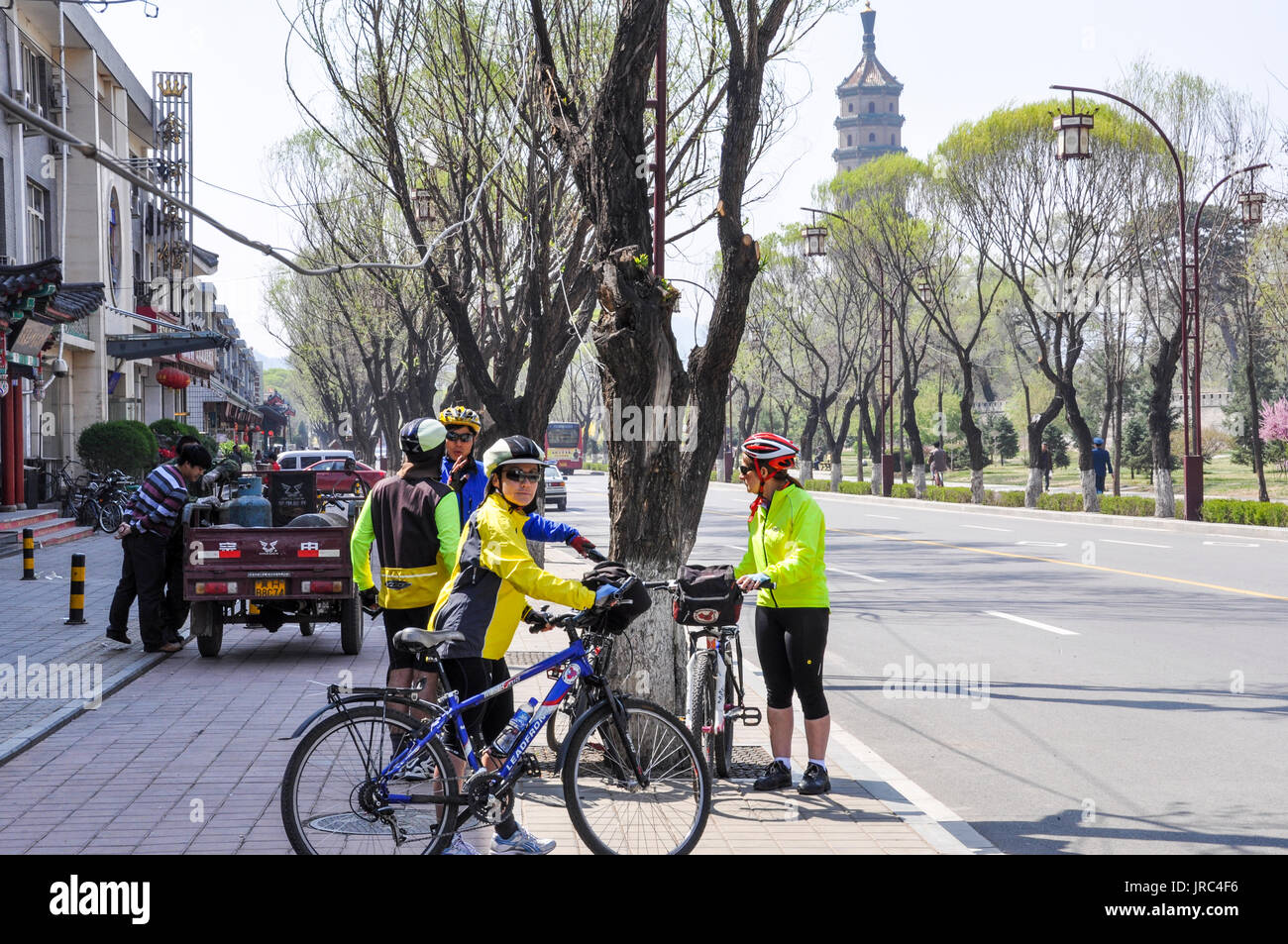 Touring Caucasian cyclists and their guid cycling in Chengde, Hebei Stock Photohttps://www.alamy.com/image-license-details/?v=1https://www.alamy.com/touring-caucasian-cyclists-and-their-guid-cycling-in-chengde-hebei-image152087018.html
Touring Caucasian cyclists and their guid cycling in Chengde, Hebei Stock Photohttps://www.alamy.com/image-license-details/?v=1https://www.alamy.com/touring-caucasian-cyclists-and-their-guid-cycling-in-chengde-hebei-image152087018.htmlRMJRC4F6–Touring Caucasian cyclists and their guid cycling in Chengde, Hebei
![Japanese Luggage Being Wheeled Away, 1933. 'Japan's forceful infiltration into Jehol [Rehe Province, China], coming so soon after her Manchurian annexation, put before the League of Nations a test case. And who knew? Maybe if Japan was intimidated she might even walk out of the League for good'. From "Time To Remember - The Time Of The Monster", 1933 (Reel 3); a documentary film about events of 1933, rise of Roosevelt and Hitler. Stock Photo Japanese Luggage Being Wheeled Away, 1933. 'Japan's forceful infiltration into Jehol [Rehe Province, China], coming so soon after her Manchurian annexation, put before the League of Nations a test case. And who knew? Maybe if Japan was intimidated she might even walk out of the League for good'. From "Time To Remember - The Time Of The Monster", 1933 (Reel 3); a documentary film about events of 1933, rise of Roosevelt and Hitler. Stock Photo](https://c8.alamy.com/comp/2XT3571/japanese-luggage-being-wheeled-away-1933-japans-forceful-infiltration-into-jehol-rehe-province-china-coming-so-soon-after-her-manchurian-annexation-put-before-the-league-of-nations-a-test-case-and-who-knew-maybe-if-japan-was-intimidated-she-might-even-walk-out-of-the-league-for-good-from-quottime-to-remember-the-time-of-the-monsterquot-1933-reel-3-a-documentary-film-about-events-of-1933-rise-of-roosevelt-and-hitler-2XT3571.jpg) Japanese Luggage Being Wheeled Away, 1933. 'Japan's forceful infiltration into Jehol [Rehe Province, China], coming so soon after her Manchurian annexation, put before the League of Nations a test case. And who knew? Maybe if Japan was intimidated she might even walk out of the League for good'. From "Time To Remember - The Time Of The Monster", 1933 (Reel 3); a documentary film about events of 1933, rise of Roosevelt and Hitler. Stock Photohttps://www.alamy.com/image-license-details/?v=1https://www.alamy.com/japanese-luggage-being-wheeled-away-1933-japans-forceful-infiltration-into-jehol-rehe-province-china-coming-so-soon-after-her-manchurian-annexation-put-before-the-league-of-nations-a-test-case-and-who-knew-maybe-if-japan-was-intimidated-she-might-even-walk-out-of-the-league-for-good-from-quottime-to-remember-the-time-of-the-monsterquot-1933-reel-3-a-documentary-film-about-events-of-1933-rise-of-roosevelt-and-hitler-image617184597.html
Japanese Luggage Being Wheeled Away, 1933. 'Japan's forceful infiltration into Jehol [Rehe Province, China], coming so soon after her Manchurian annexation, put before the League of Nations a test case. And who knew? Maybe if Japan was intimidated she might even walk out of the League for good'. From "Time To Remember - The Time Of The Monster", 1933 (Reel 3); a documentary film about events of 1933, rise of Roosevelt and Hitler. Stock Photohttps://www.alamy.com/image-license-details/?v=1https://www.alamy.com/japanese-luggage-being-wheeled-away-1933-japans-forceful-infiltration-into-jehol-rehe-province-china-coming-so-soon-after-her-manchurian-annexation-put-before-the-league-of-nations-a-test-case-and-who-knew-maybe-if-japan-was-intimidated-she-might-even-walk-out-of-the-league-for-good-from-quottime-to-remember-the-time-of-the-monsterquot-1933-reel-3-a-documentary-film-about-events-of-1933-rise-of-roosevelt-and-hitler-image617184597.htmlRM2XT3571–Japanese Luggage Being Wheeled Away, 1933. 'Japan's forceful infiltration into Jehol [Rehe Province, China], coming so soon after her Manchurian annexation, put before the League of Nations a test case. And who knew? Maybe if Japan was intimidated she might even walk out of the League for good'. From "Time To Remember - The Time Of The Monster", 1933 (Reel 3); a documentary film about events of 1933, rise of Roosevelt and Hitler.
 Anyuan Miao (Temple of Distant Peace) was built in 1764 and is a copy of the now destroyed Ili Temple in Xinjiang. In 1703, Chengde was chosen by the Kangxi Emperor as the location for his summer residence. Constructed throughout the eighteenth century, the Mountain Resort was used by both the Yongzheng and Qianlong emperors. The site is currently an UNESCO World Heritage Site. Since the seat of government followed the emperor, Chengde was a political center of the Chinese empire during these times. Chengde, formerly known as Jehol, reached its height under the Qianlong Emperor 1735-1796 (di Stock Photohttps://www.alamy.com/image-license-details/?v=1https://www.alamy.com/anyuan-miao-temple-of-distant-peace-was-built-in-1764-and-is-a-copy-of-the-now-destroyed-ili-temple-in-xinjiang-in-1703-chengde-was-chosen-by-the-kangxi-emperor-as-the-location-for-his-summer-residence-constructed-throughout-the-eighteenth-century-the-mountain-resort-was-used-by-both-the-yongzheng-and-qianlong-emperors-the-site-is-currently-an-unesco-world-heritage-site-since-the-seat-of-government-followed-the-emperor-chengde-was-a-political-center-of-the-chinese-empire-during-these-times-chengde-formerly-known-as-jehol-reached-its-height-under-the-qianlong-emperor-1735-1796-di-image344267288.html
Anyuan Miao (Temple of Distant Peace) was built in 1764 and is a copy of the now destroyed Ili Temple in Xinjiang. In 1703, Chengde was chosen by the Kangxi Emperor as the location for his summer residence. Constructed throughout the eighteenth century, the Mountain Resort was used by both the Yongzheng and Qianlong emperors. The site is currently an UNESCO World Heritage Site. Since the seat of government followed the emperor, Chengde was a political center of the Chinese empire during these times. Chengde, formerly known as Jehol, reached its height under the Qianlong Emperor 1735-1796 (di Stock Photohttps://www.alamy.com/image-license-details/?v=1https://www.alamy.com/anyuan-miao-temple-of-distant-peace-was-built-in-1764-and-is-a-copy-of-the-now-destroyed-ili-temple-in-xinjiang-in-1703-chengde-was-chosen-by-the-kangxi-emperor-as-the-location-for-his-summer-residence-constructed-throughout-the-eighteenth-century-the-mountain-resort-was-used-by-both-the-yongzheng-and-qianlong-emperors-the-site-is-currently-an-unesco-world-heritage-site-since-the-seat-of-government-followed-the-emperor-chengde-was-a-political-center-of-the-chinese-empire-during-these-times-chengde-formerly-known-as-jehol-reached-its-height-under-the-qianlong-emperor-1735-1796-di-image344267288.htmlRM2B02MC8–Anyuan Miao (Temple of Distant Peace) was built in 1764 and is a copy of the now destroyed Ili Temple in Xinjiang. In 1703, Chengde was chosen by the Kangxi Emperor as the location for his summer residence. Constructed throughout the eighteenth century, the Mountain Resort was used by both the Yongzheng and Qianlong emperors. The site is currently an UNESCO World Heritage Site. Since the seat of government followed the emperor, Chengde was a political center of the Chinese empire during these times. Chengde, formerly known as Jehol, reached its height under the Qianlong Emperor 1735-1796 (di
 A busker with three monkeys performing tricks for onlookers. Stock Photohttps://www.alamy.com/image-license-details/?v=1https://www.alamy.com/a-busker-with-three-monkeys-performing-tricks-for-onlookers-image152086562.html
A busker with three monkeys performing tricks for onlookers. Stock Photohttps://www.alamy.com/image-license-details/?v=1https://www.alamy.com/a-busker-with-three-monkeys-performing-tricks-for-onlookers-image152086562.htmlRMJRC3XX–A busker with three monkeys performing tricks for onlookers.
 China: The entrance to Putuo Zongcheng Temple (Pǔtuó Zōngchéng Zhī Miào), Chengde, Hebei Province. The Putuo Zongcheng Temple is a Qing Dynasty era Buddhist temple complex built between 1767 and 1771, during the reign of the Qianlong Emperor (1735–1796). The temple was modeled after the Potala Palace of Tibet, the old sanctuary of the Dalai Lama built a century earlier. In 1703, Chengde was chosen by the Kangxi Emperor as the location for his summer residence. Constructed throughout the eighteenth century, the Mountain Resort was used by both the Yongzheng and Qianlong emperors. Stock Photohttps://www.alamy.com/image-license-details/?v=1https://www.alamy.com/china-the-entrance-to-putuo-zongcheng-temple-ptu-zngchng-zh-mio-chengde-hebei-province-the-putuo-zongcheng-temple-is-a-qing-dynasty-era-buddhist-temple-complex-built-between-1767-and-1771-during-the-reign-of-the-qianlong-emperor-17351796-the-temple-was-modeled-after-the-potala-palace-of-tibet-the-old-sanctuary-of-the-dalai-lama-built-a-century-earlier-in-1703-chengde-was-chosen-by-the-kangxi-emperor-as-the-location-for-his-summer-residence-constructed-throughout-the-eighteenth-century-the-mountain-resort-was-used-by-both-the-yongzheng-and-qianlong-emperors-image344239261.html
China: The entrance to Putuo Zongcheng Temple (Pǔtuó Zōngchéng Zhī Miào), Chengde, Hebei Province. The Putuo Zongcheng Temple is a Qing Dynasty era Buddhist temple complex built between 1767 and 1771, during the reign of the Qianlong Emperor (1735–1796). The temple was modeled after the Potala Palace of Tibet, the old sanctuary of the Dalai Lama built a century earlier. In 1703, Chengde was chosen by the Kangxi Emperor as the location for his summer residence. Constructed throughout the eighteenth century, the Mountain Resort was used by both the Yongzheng and Qianlong emperors. Stock Photohttps://www.alamy.com/image-license-details/?v=1https://www.alamy.com/china-the-entrance-to-putuo-zongcheng-temple-ptu-zngchng-zh-mio-chengde-hebei-province-the-putuo-zongcheng-temple-is-a-qing-dynasty-era-buddhist-temple-complex-built-between-1767-and-1771-during-the-reign-of-the-qianlong-emperor-17351796-the-temple-was-modeled-after-the-potala-palace-of-tibet-the-old-sanctuary-of-the-dalai-lama-built-a-century-earlier-in-1703-chengde-was-chosen-by-the-kangxi-emperor-as-the-location-for-his-summer-residence-constructed-throughout-the-eighteenth-century-the-mountain-resort-was-used-by-both-the-yongzheng-and-qianlong-emperors-image344239261.htmlRM2B01CK9–China: The entrance to Putuo Zongcheng Temple (Pǔtuó Zōngchéng Zhī Miào), Chengde, Hebei Province. The Putuo Zongcheng Temple is a Qing Dynasty era Buddhist temple complex built between 1767 and 1771, during the reign of the Qianlong Emperor (1735–1796). The temple was modeled after the Potala Palace of Tibet, the old sanctuary of the Dalai Lama built a century earlier. In 1703, Chengde was chosen by the Kangxi Emperor as the location for his summer residence. Constructed throughout the eighteenth century, the Mountain Resort was used by both the Yongzheng and Qianlong emperors.
 Shuixin Pavilion on Lower Lake, Chengdu Mountain Resort (aka Escaping-the-heat Imperial Villa, aka Summer Resort), Chengde 承德, Hebei, China Stock Photohttps://www.alamy.com/image-license-details/?v=1https://www.alamy.com/shuixin-pavilion-on-lower-lake-chengdu-mountain-resort-aka-escaping-the-heat-imperial-villa-aka-summer-resort-chengde-hebei-china-image390975321.html
Shuixin Pavilion on Lower Lake, Chengdu Mountain Resort (aka Escaping-the-heat Imperial Villa, aka Summer Resort), Chengde 承德, Hebei, China Stock Photohttps://www.alamy.com/image-license-details/?v=1https://www.alamy.com/shuixin-pavilion-on-lower-lake-chengdu-mountain-resort-aka-escaping-the-heat-imperial-villa-aka-summer-resort-chengde-hebei-china-image390975321.htmlRM2DM2D09–Shuixin Pavilion on Lower Lake, Chengdu Mountain Resort (aka Escaping-the-heat Imperial Villa, aka Summer Resort), Chengde 承德, Hebei, China
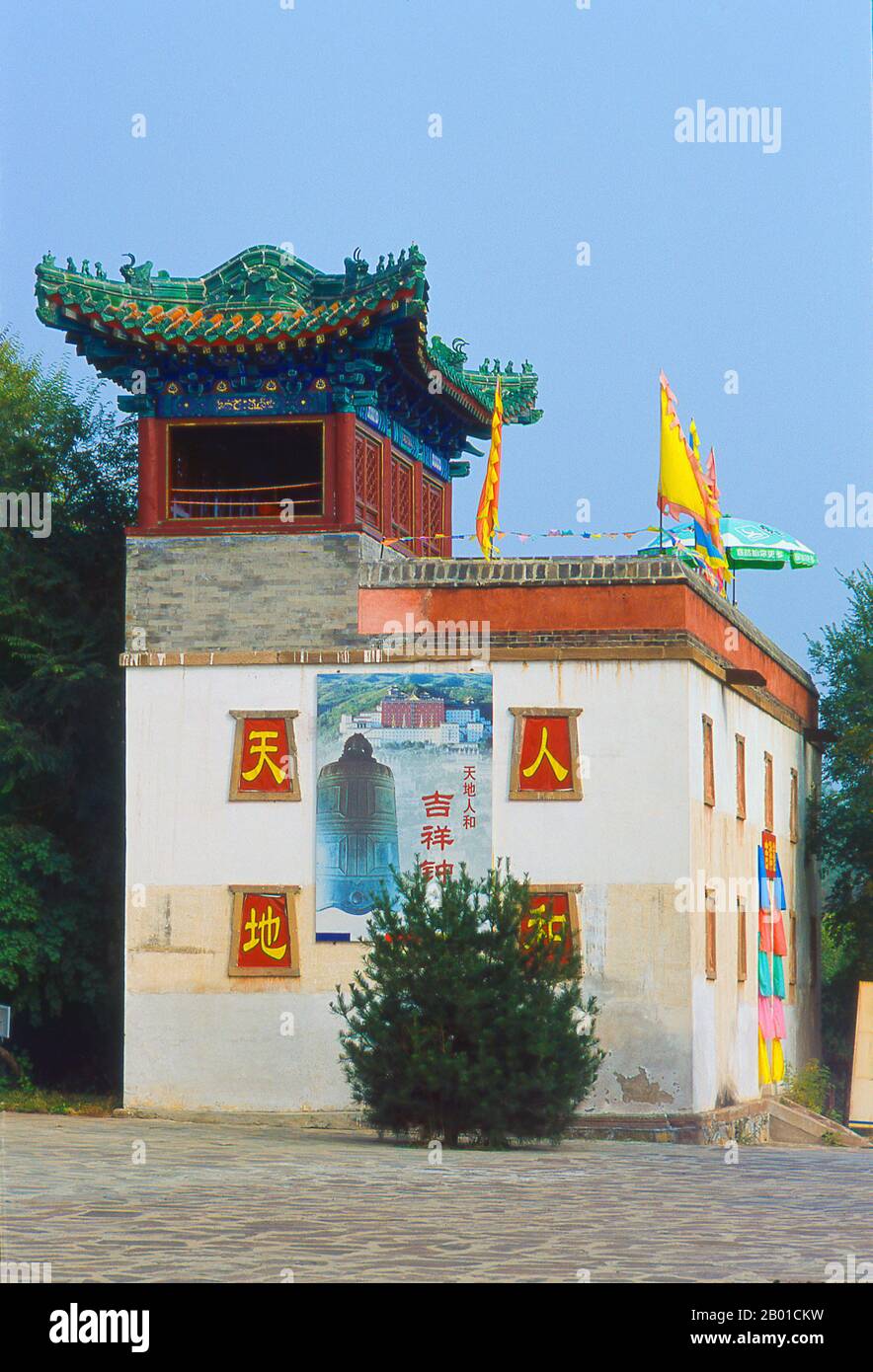 China: Side pavilion at the Putuo Zongcheng Temple (Pǔtuó Zōngchéng Zhī Miào), Chengde, Hebei Province. The Putuo Zongcheng Temple is a Qing Dynasty era Buddhist temple complex built between 1767 and 1771, during the reign of the Qianlong Emperor (1735-1796). The temple was modeled after the Potala Palace of Tibet, the old sanctuary of the Dalai Lama built a century earlier. In 1703, Chengde was chosen by the Kangxi Emperor as the location for his summer residence. Constructed throughout the eighteenth century, the Mountain Resort was used by both the Yongzheng and Qianlong emperors. Stock Photohttps://www.alamy.com/image-license-details/?v=1https://www.alamy.com/china-side-pavilion-at-the-putuo-zongcheng-temple-ptu-zngchng-zh-mio-chengde-hebei-province-the-putuo-zongcheng-temple-is-a-qing-dynasty-era-buddhist-temple-complex-built-between-1767-and-1771-during-the-reign-of-the-qianlong-emperor-1735-1796-the-temple-was-modeled-after-the-potala-palace-of-tibet-the-old-sanctuary-of-the-dalai-lama-built-a-century-earlier-in-1703-chengde-was-chosen-by-the-kangxi-emperor-as-the-location-for-his-summer-residence-constructed-throughout-the-eighteenth-century-the-mountain-resort-was-used-by-both-the-yongzheng-and-qianlong-emperors-image344239277.html
China: Side pavilion at the Putuo Zongcheng Temple (Pǔtuó Zōngchéng Zhī Miào), Chengde, Hebei Province. The Putuo Zongcheng Temple is a Qing Dynasty era Buddhist temple complex built between 1767 and 1771, during the reign of the Qianlong Emperor (1735-1796). The temple was modeled after the Potala Palace of Tibet, the old sanctuary of the Dalai Lama built a century earlier. In 1703, Chengde was chosen by the Kangxi Emperor as the location for his summer residence. Constructed throughout the eighteenth century, the Mountain Resort was used by both the Yongzheng and Qianlong emperors. Stock Photohttps://www.alamy.com/image-license-details/?v=1https://www.alamy.com/china-side-pavilion-at-the-putuo-zongcheng-temple-ptu-zngchng-zh-mio-chengde-hebei-province-the-putuo-zongcheng-temple-is-a-qing-dynasty-era-buddhist-temple-complex-built-between-1767-and-1771-during-the-reign-of-the-qianlong-emperor-1735-1796-the-temple-was-modeled-after-the-potala-palace-of-tibet-the-old-sanctuary-of-the-dalai-lama-built-a-century-earlier-in-1703-chengde-was-chosen-by-the-kangxi-emperor-as-the-location-for-his-summer-residence-constructed-throughout-the-eighteenth-century-the-mountain-resort-was-used-by-both-the-yongzheng-and-qianlong-emperors-image344239277.htmlRM2B01CKW–China: Side pavilion at the Putuo Zongcheng Temple (Pǔtuó Zōngchéng Zhī Miào), Chengde, Hebei Province. The Putuo Zongcheng Temple is a Qing Dynasty era Buddhist temple complex built between 1767 and 1771, during the reign of the Qianlong Emperor (1735-1796). The temple was modeled after the Potala Palace of Tibet, the old sanctuary of the Dalai Lama built a century earlier. In 1703, Chengde was chosen by the Kangxi Emperor as the location for his summer residence. Constructed throughout the eighteenth century, the Mountain Resort was used by both the Yongzheng and Qianlong emperors.
 Gezicht op een deel van het keizerlijk zomerpaleis in Chengde (Jehol) te China View of a part of the imperial summer palace in countryside with lake or river in Chengde (Jehol) to China. In the 18th century the emperors had the early Qing Dynasty build a refuge in the mountains, surrounded by walls. It was provided with parks with lakes, pagodes and palaces. Title in Chinese rechtsboven. Manufacturer : printmaker Matteo Ripanaar design: Shen YuPlaats manufacture: China Date: 1712 - 1714 Material: Chinese paper Technique: engra (printing process) Dimensions: sheet: H 324 mm × W 357 mmToelichtin Stock Photohttps://www.alamy.com/image-license-details/?v=1https://www.alamy.com/gezicht-op-een-deel-van-het-keizerlijk-zomerpaleis-in-chengde-jehol-te-china-view-of-a-part-of-the-imperial-summer-palace-in-countryside-with-lake-or-river-in-chengde-jehol-to-china-in-the-18th-century-the-emperors-had-the-early-qing-dynasty-build-a-refuge-in-the-mountains-surrounded-by-walls-it-was-provided-with-parks-with-lakes-pagodes-and-palaces-title-in-chinese-rechtsboven-manufacturer-printmaker-matteo-ripanaar-design-shen-yuplaats-manufacture-china-date-1712-1714-material-chinese-paper-technique-engra-printing-process-dimensions-sheet-h-324-mm-w-357-mmtoelichtin-image348402722.html
Gezicht op een deel van het keizerlijk zomerpaleis in Chengde (Jehol) te China View of a part of the imperial summer palace in countryside with lake or river in Chengde (Jehol) to China. In the 18th century the emperors had the early Qing Dynasty build a refuge in the mountains, surrounded by walls. It was provided with parks with lakes, pagodes and palaces. Title in Chinese rechtsboven. Manufacturer : printmaker Matteo Ripanaar design: Shen YuPlaats manufacture: China Date: 1712 - 1714 Material: Chinese paper Technique: engra (printing process) Dimensions: sheet: H 324 mm × W 357 mmToelichtin Stock Photohttps://www.alamy.com/image-license-details/?v=1https://www.alamy.com/gezicht-op-een-deel-van-het-keizerlijk-zomerpaleis-in-chengde-jehol-te-china-view-of-a-part-of-the-imperial-summer-palace-in-countryside-with-lake-or-river-in-chengde-jehol-to-china-in-the-18th-century-the-emperors-had-the-early-qing-dynasty-build-a-refuge-in-the-mountains-surrounded-by-walls-it-was-provided-with-parks-with-lakes-pagodes-and-palaces-title-in-chinese-rechtsboven-manufacturer-printmaker-matteo-ripanaar-design-shen-yuplaats-manufacture-china-date-1712-1714-material-chinese-paper-technique-engra-printing-process-dimensions-sheet-h-324-mm-w-357-mmtoelichtin-image348402722.htmlRM2B6R36A–Gezicht op een deel van het keizerlijk zomerpaleis in Chengde (Jehol) te China View of a part of the imperial summer palace in countryside with lake or river in Chengde (Jehol) to China. In the 18th century the emperors had the early Qing Dynasty build a refuge in the mountains, surrounded by walls. It was provided with parks with lakes, pagodes and palaces. Title in Chinese rechtsboven. Manufacturer : printmaker Matteo Ripanaar design: Shen YuPlaats manufacture: China Date: 1712 - 1714 Material: Chinese paper Technique: engra (printing process) Dimensions: sheet: H 324 mm × W 357 mmToelichtin
 China: Stone elephant at gateway to Putuo Zongcheng Temple (Pǔtuó Zōngchéng Zhī Miào), Chengde, Hebei Province. The Putuo Zongcheng Temple is a Qing Dynasty era Buddhist temple complex built between 1767 and 1771, during the reign of the Qianlong Emperor (1735–1796). The temple was modeled after the Potala Palace of Tibet, the old sanctuary of the Dalai Lama built a century earlier. In 1703, Chengde was chosen by the Kangxi Emperor as the location for his summer residence. Constructed throughout the eighteenth century, the Mountain Resort was used by both the Yongzheng and Qianlong emperors. Stock Photohttps://www.alamy.com/image-license-details/?v=1https://www.alamy.com/china-stone-elephant-at-gateway-to-putuo-zongcheng-temple-ptu-zngchng-zh-mio-chengde-hebei-province-the-putuo-zongcheng-temple-is-a-qing-dynasty-era-buddhist-temple-complex-built-between-1767-and-1771-during-the-reign-of-the-qianlong-emperor-17351796-the-temple-was-modeled-after-the-potala-palace-of-tibet-the-old-sanctuary-of-the-dalai-lama-built-a-century-earlier-in-1703-chengde-was-chosen-by-the-kangxi-emperor-as-the-location-for-his-summer-residence-constructed-throughout-the-eighteenth-century-the-mountain-resort-was-used-by-both-the-yongzheng-and-qianlong-emperors-image344239271.html
China: Stone elephant at gateway to Putuo Zongcheng Temple (Pǔtuó Zōngchéng Zhī Miào), Chengde, Hebei Province. The Putuo Zongcheng Temple is a Qing Dynasty era Buddhist temple complex built between 1767 and 1771, during the reign of the Qianlong Emperor (1735–1796). The temple was modeled after the Potala Palace of Tibet, the old sanctuary of the Dalai Lama built a century earlier. In 1703, Chengde was chosen by the Kangxi Emperor as the location for his summer residence. Constructed throughout the eighteenth century, the Mountain Resort was used by both the Yongzheng and Qianlong emperors. Stock Photohttps://www.alamy.com/image-license-details/?v=1https://www.alamy.com/china-stone-elephant-at-gateway-to-putuo-zongcheng-temple-ptu-zngchng-zh-mio-chengde-hebei-province-the-putuo-zongcheng-temple-is-a-qing-dynasty-era-buddhist-temple-complex-built-between-1767-and-1771-during-the-reign-of-the-qianlong-emperor-17351796-the-temple-was-modeled-after-the-potala-palace-of-tibet-the-old-sanctuary-of-the-dalai-lama-built-a-century-earlier-in-1703-chengde-was-chosen-by-the-kangxi-emperor-as-the-location-for-his-summer-residence-constructed-throughout-the-eighteenth-century-the-mountain-resort-was-used-by-both-the-yongzheng-and-qianlong-emperors-image344239271.htmlRM2B01CKK–China: Stone elephant at gateway to Putuo Zongcheng Temple (Pǔtuó Zōngchéng Zhī Miào), Chengde, Hebei Province. The Putuo Zongcheng Temple is a Qing Dynasty era Buddhist temple complex built between 1767 and 1771, during the reign of the Qianlong Emperor (1735–1796). The temple was modeled after the Potala Palace of Tibet, the old sanctuary of the Dalai Lama built a century earlier. In 1703, Chengde was chosen by the Kangxi Emperor as the location for his summer residence. Constructed throughout the eighteenth century, the Mountain Resort was used by both the Yongzheng and Qianlong emperors.
 View of a part of the Imperial Summer Palace in Chengde (Jehol) in China, Matteo Ripa, After Shen Yu, 1712 - 1714 print View of a part of the imperial summer palace, on an island in a river or more surrounded by hills, in Chengde (Jehol) in China. In the 18th century, the emperors of the early Qing Dynasty had a refuge in the mountains, surrounded by walls. It was provided with parks with lakes, pagodas and palaces. China China paper engraving city-view, and landscape with man-made constructions Chengde Stock Photohttps://www.alamy.com/image-license-details/?v=1https://www.alamy.com/view-of-a-part-of-the-imperial-summer-palace-in-chengde-jehol-in-china-matteo-ripa-after-shen-yu-1712-1714-print-view-of-a-part-of-the-imperial-summer-palace-on-an-island-in-a-river-or-more-surrounded-by-hills-in-chengde-jehol-in-china-in-the-18th-century-the-emperors-of-the-early-qing-dynasty-had-a-refuge-in-the-mountains-surrounded-by-walls-it-was-provided-with-parks-with-lakes-pagodas-and-palaces-china-china-paper-engraving-city-view-and-landscape-with-man-made-constructions-chengde-image593835489.html
View of a part of the Imperial Summer Palace in Chengde (Jehol) in China, Matteo Ripa, After Shen Yu, 1712 - 1714 print View of a part of the imperial summer palace, on an island in a river or more surrounded by hills, in Chengde (Jehol) in China. In the 18th century, the emperors of the early Qing Dynasty had a refuge in the mountains, surrounded by walls. It was provided with parks with lakes, pagodas and palaces. China China paper engraving city-view, and landscape with man-made constructions Chengde Stock Photohttps://www.alamy.com/image-license-details/?v=1https://www.alamy.com/view-of-a-part-of-the-imperial-summer-palace-in-chengde-jehol-in-china-matteo-ripa-after-shen-yu-1712-1714-print-view-of-a-part-of-the-imperial-summer-palace-on-an-island-in-a-river-or-more-surrounded-by-hills-in-chengde-jehol-in-china-in-the-18th-century-the-emperors-of-the-early-qing-dynasty-had-a-refuge-in-the-mountains-surrounded-by-walls-it-was-provided-with-parks-with-lakes-pagodas-and-palaces-china-china-paper-engraving-city-view-and-landscape-with-man-made-constructions-chengde-image593835489.htmlRM2WE3F69–View of a part of the Imperial Summer Palace in Chengde (Jehol) in China, Matteo Ripa, After Shen Yu, 1712 - 1714 print View of a part of the imperial summer palace, on an island in a river or more surrounded by hills, in Chengde (Jehol) in China. In the 18th century, the emperors of the early Qing Dynasty had a refuge in the mountains, surrounded by walls. It was provided with parks with lakes, pagodas and palaces. China China paper engraving city-view, and landscape with man-made constructions Chengde
 CHENGDE CITY - OCTOBER 20: Chinese traditional style water wheel in chengde mountain resort, on october 20, 2014, Chengde City, Hebei Province, China Stock Photohttps://www.alamy.com/image-license-details/?v=1https://www.alamy.com/chengde-city-october-20-chinese-traditional-style-water-wheel-in-chengde-mountain-resort-on-october-20-2014-chengde-city-hebei-province-china-image571488014.html
CHENGDE CITY - OCTOBER 20: Chinese traditional style water wheel in chengde mountain resort, on october 20, 2014, Chengde City, Hebei Province, China Stock Photohttps://www.alamy.com/image-license-details/?v=1https://www.alamy.com/chengde-city-october-20-chinese-traditional-style-water-wheel-in-chengde-mountain-resort-on-october-20-2014-chengde-city-hebei-province-china-image571488014.htmlRF2T5NEP6–CHENGDE CITY - OCTOBER 20: Chinese traditional style water wheel in chengde mountain resort, on october 20, 2014, Chengde City, Hebei Province, China
 Boating on Ruyi Hu in the Imperial Summer Villa of Chengde Stock Photohttps://www.alamy.com/image-license-details/?v=1https://www.alamy.com/stock-photo-boating-on-ruyi-hu-in-the-imperial-summer-villa-of-chengde-13240447.html
Boating on Ruyi Hu in the Imperial Summer Villa of Chengde Stock Photohttps://www.alamy.com/image-license-details/?v=1https://www.alamy.com/stock-photo-boating-on-ruyi-hu-in-the-imperial-summer-villa-of-chengde-13240447.htmlRMACX0NM–Boating on Ruyi Hu in the Imperial Summer Villa of Chengde
![Japanese League of Nations Delegates Entering a Train Station, 1933. 'Japan's forceful infiltration into Jehol [Rehe Province, China], coming so soon after her Manchurian annexation, put before the League of Nations a test case. And who knew? Maybe if Japan was intimidated she might even walk out of the League for good'. From "Time To Remember - The Time Of The Monster", 1933 (Reel 3); a documentary film about events of 1933, rise of Roosevelt and Hitler. Stock Photo Japanese League of Nations Delegates Entering a Train Station, 1933. 'Japan's forceful infiltration into Jehol [Rehe Province, China], coming so soon after her Manchurian annexation, put before the League of Nations a test case. And who knew? Maybe if Japan was intimidated she might even walk out of the League for good'. From "Time To Remember - The Time Of The Monster", 1933 (Reel 3); a documentary film about events of 1933, rise of Roosevelt and Hitler. Stock Photo](https://c8.alamy.com/comp/2XT356M/japanese-league-of-nations-delegates-entering-a-train-station-1933-japans-forceful-infiltration-into-jehol-rehe-province-china-coming-so-soon-after-her-manchurian-annexation-put-before-the-league-of-nations-a-test-case-and-who-knew-maybe-if-japan-was-intimidated-she-might-even-walk-out-of-the-league-for-good-from-quottime-to-remember-the-time-of-the-monsterquot-1933-reel-3-a-documentary-film-about-events-of-1933-rise-of-roosevelt-and-hitler-2XT356M.jpg) Japanese League of Nations Delegates Entering a Train Station, 1933. 'Japan's forceful infiltration into Jehol [Rehe Province, China], coming so soon after her Manchurian annexation, put before the League of Nations a test case. And who knew? Maybe if Japan was intimidated she might even walk out of the League for good'. From "Time To Remember - The Time Of The Monster", 1933 (Reel 3); a documentary film about events of 1933, rise of Roosevelt and Hitler. Stock Photohttps://www.alamy.com/image-license-details/?v=1https://www.alamy.com/japanese-league-of-nations-delegates-entering-a-train-station-1933-japans-forceful-infiltration-into-jehol-rehe-province-china-coming-so-soon-after-her-manchurian-annexation-put-before-the-league-of-nations-a-test-case-and-who-knew-maybe-if-japan-was-intimidated-she-might-even-walk-out-of-the-league-for-good-from-quottime-to-remember-the-time-of-the-monsterquot-1933-reel-3-a-documentary-film-about-events-of-1933-rise-of-roosevelt-and-hitler-image617184588.html
Japanese League of Nations Delegates Entering a Train Station, 1933. 'Japan's forceful infiltration into Jehol [Rehe Province, China], coming so soon after her Manchurian annexation, put before the League of Nations a test case. And who knew? Maybe if Japan was intimidated she might even walk out of the League for good'. From "Time To Remember - The Time Of The Monster", 1933 (Reel 3); a documentary film about events of 1933, rise of Roosevelt and Hitler. Stock Photohttps://www.alamy.com/image-license-details/?v=1https://www.alamy.com/japanese-league-of-nations-delegates-entering-a-train-station-1933-japans-forceful-infiltration-into-jehol-rehe-province-china-coming-so-soon-after-her-manchurian-annexation-put-before-the-league-of-nations-a-test-case-and-who-knew-maybe-if-japan-was-intimidated-she-might-even-walk-out-of-the-league-for-good-from-quottime-to-remember-the-time-of-the-monsterquot-1933-reel-3-a-documentary-film-about-events-of-1933-rise-of-roosevelt-and-hitler-image617184588.htmlRM2XT356M–Japanese League of Nations Delegates Entering a Train Station, 1933. 'Japan's forceful infiltration into Jehol [Rehe Province, China], coming so soon after her Manchurian annexation, put before the League of Nations a test case. And who knew? Maybe if Japan was intimidated she might even walk out of the League for good'. From "Time To Remember - The Time Of The Monster", 1933 (Reel 3); a documentary film about events of 1933, rise of Roosevelt and Hitler.
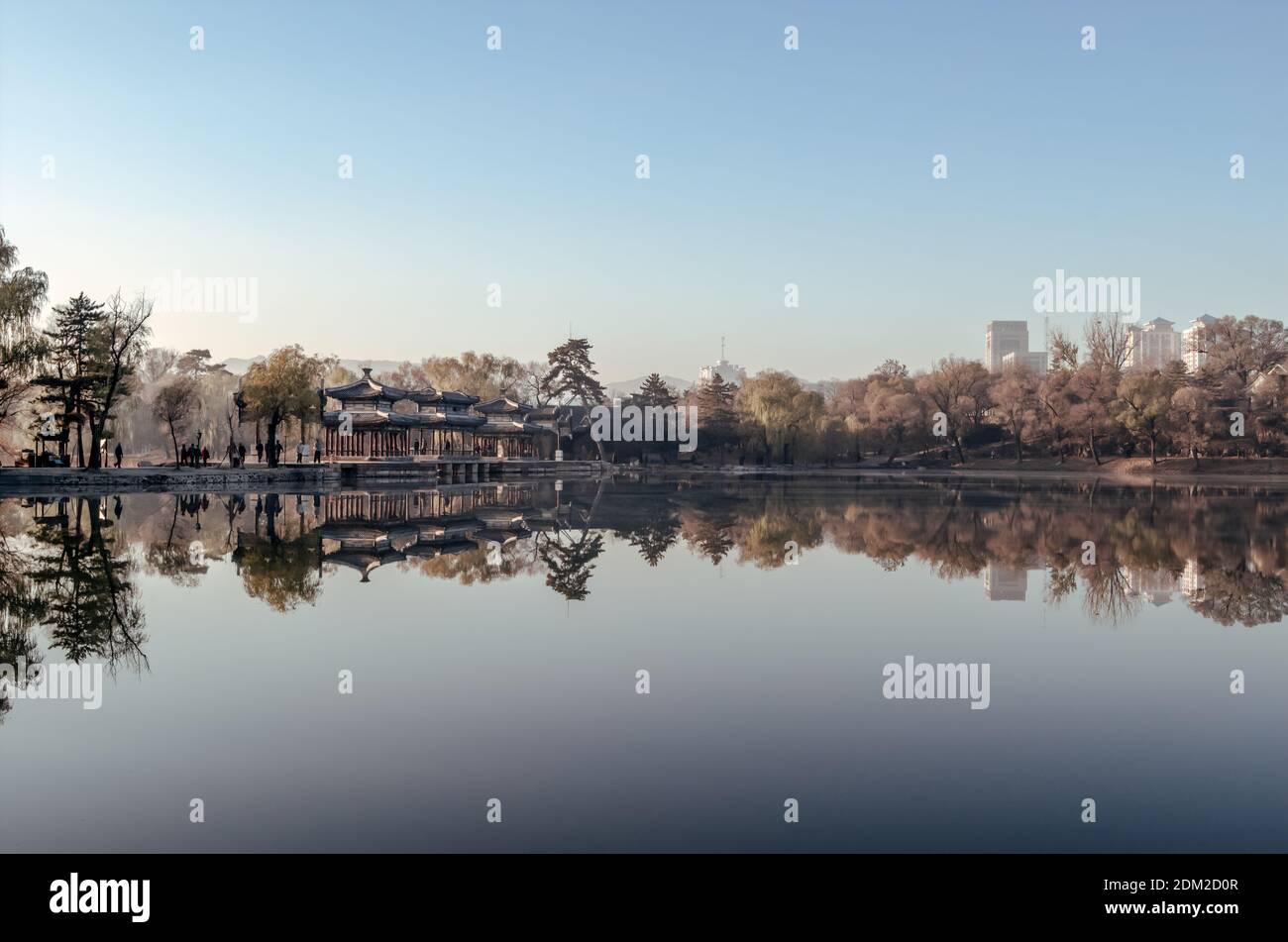 Shuixin Pavilion on Lower Lake, Chengdu Mountain Resort (aka Escaping-the-heat Imperial Villa, aka Summer Resort), Chengde 承德, Hebei, China Stock Photohttps://www.alamy.com/image-license-details/?v=1https://www.alamy.com/shuixin-pavilion-on-lower-lake-chengdu-mountain-resort-aka-escaping-the-heat-imperial-villa-aka-summer-resort-chengde-hebei-china-image390975335.html
Shuixin Pavilion on Lower Lake, Chengdu Mountain Resort (aka Escaping-the-heat Imperial Villa, aka Summer Resort), Chengde 承德, Hebei, China Stock Photohttps://www.alamy.com/image-license-details/?v=1https://www.alamy.com/shuixin-pavilion-on-lower-lake-chengdu-mountain-resort-aka-escaping-the-heat-imperial-villa-aka-summer-resort-chengde-hebei-china-image390975335.htmlRM2DM2D0R–Shuixin Pavilion on Lower Lake, Chengdu Mountain Resort (aka Escaping-the-heat Imperial Villa, aka Summer Resort), Chengde 承德, Hebei, China
 Gezicht op een deel van het keizerlijk zomerpaleis in Chengde (Jehol) te China View of a part of the imperial summer palace in hilly landscape with a lake, Chengde (Jehol) to China. In the 18th century the emperors had the early Qing Dynasty build a refuge in the mountains, surrounded by walls. It was equipped parks with lakes, pagodas and paleizen. Manufacturer : printmaker Matteo Ripaprentmaker: Zhang Kuinaar design: Shen YuPlaats manufacture: China Date: 1712 - 1714 Physical features: car material: Chinese paper Technique: engra (printing process) Dimensions: sheet: h 325 mm × W 355 mmToeli Stock Photohttps://www.alamy.com/image-license-details/?v=1https://www.alamy.com/gezicht-op-een-deel-van-het-keizerlijk-zomerpaleis-in-chengde-jehol-te-china-view-of-a-part-of-the-imperial-summer-palace-in-hilly-landscape-with-a-lake-chengde-jehol-to-china-in-the-18th-century-the-emperors-had-the-early-qing-dynasty-build-a-refuge-in-the-mountains-surrounded-by-walls-it-was-equipped-parks-with-lakes-pagodas-and-paleizen-manufacturer-printmaker-matteo-ripaprentmaker-zhang-kuinaar-design-shen-yuplaats-manufacture-china-date-1712-1714-physical-features-car-material-chinese-paper-technique-engra-printing-process-dimensions-sheet-h-325-mm-w-355-mmtoeli-image348402754.html
Gezicht op een deel van het keizerlijk zomerpaleis in Chengde (Jehol) te China View of a part of the imperial summer palace in hilly landscape with a lake, Chengde (Jehol) to China. In the 18th century the emperors had the early Qing Dynasty build a refuge in the mountains, surrounded by walls. It was equipped parks with lakes, pagodas and paleizen. Manufacturer : printmaker Matteo Ripaprentmaker: Zhang Kuinaar design: Shen YuPlaats manufacture: China Date: 1712 - 1714 Physical features: car material: Chinese paper Technique: engra (printing process) Dimensions: sheet: h 325 mm × W 355 mmToeli Stock Photohttps://www.alamy.com/image-license-details/?v=1https://www.alamy.com/gezicht-op-een-deel-van-het-keizerlijk-zomerpaleis-in-chengde-jehol-te-china-view-of-a-part-of-the-imperial-summer-palace-in-hilly-landscape-with-a-lake-chengde-jehol-to-china-in-the-18th-century-the-emperors-had-the-early-qing-dynasty-build-a-refuge-in-the-mountains-surrounded-by-walls-it-was-equipped-parks-with-lakes-pagodas-and-paleizen-manufacturer-printmaker-matteo-ripaprentmaker-zhang-kuinaar-design-shen-yuplaats-manufacture-china-date-1712-1714-physical-features-car-material-chinese-paper-technique-engra-printing-process-dimensions-sheet-h-325-mm-w-355-mmtoeli-image348402754.htmlRM2B6R37E–Gezicht op een deel van het keizerlijk zomerpaleis in Chengde (Jehol) te China View of a part of the imperial summer palace in hilly landscape with a lake, Chengde (Jehol) to China. In the 18th century the emperors had the early Qing Dynasty build a refuge in the mountains, surrounded by walls. It was equipped parks with lakes, pagodas and paleizen. Manufacturer : printmaker Matteo Ripaprentmaker: Zhang Kuinaar design: Shen YuPlaats manufacture: China Date: 1712 - 1714 Physical features: car material: Chinese paper Technique: engra (printing process) Dimensions: sheet: h 325 mm × W 355 mmToeli
 China: Elaborate gateway, Putuo Zongcheng Temple (Pǔtuó Zōngchéng Zhī Miào), Chengde, Hebei Province. The Putuo Zongcheng Temple is a Qing Dynasty era Buddhist temple complex built between 1767 and 1771, during the reign of the Qianlong Emperor (1735–1796). The temple was modeled after the Potala Palace of Tibet, the old sanctuary of the Dalai Lama built a century earlier. In 1703, Chengde was chosen by the Kangxi Emperor as the location for his summer residence. Constructed throughout the eighteenth century, the Mountain Resort was used by both the Yongzheng and Qianlong emperors. Stock Photohttps://www.alamy.com/image-license-details/?v=1https://www.alamy.com/china-elaborate-gateway-putuo-zongcheng-temple-ptu-zngchng-zh-mio-chengde-hebei-province-the-putuo-zongcheng-temple-is-a-qing-dynasty-era-buddhist-temple-complex-built-between-1767-and-1771-during-the-reign-of-the-qianlong-emperor-17351796-the-temple-was-modeled-after-the-potala-palace-of-tibet-the-old-sanctuary-of-the-dalai-lama-built-a-century-earlier-in-1703-chengde-was-chosen-by-the-kangxi-emperor-as-the-location-for-his-summer-residence-constructed-throughout-the-eighteenth-century-the-mountain-resort-was-used-by-both-the-yongzheng-and-qianlong-emperors-image344239270.html
China: Elaborate gateway, Putuo Zongcheng Temple (Pǔtuó Zōngchéng Zhī Miào), Chengde, Hebei Province. The Putuo Zongcheng Temple is a Qing Dynasty era Buddhist temple complex built between 1767 and 1771, during the reign of the Qianlong Emperor (1735–1796). The temple was modeled after the Potala Palace of Tibet, the old sanctuary of the Dalai Lama built a century earlier. In 1703, Chengde was chosen by the Kangxi Emperor as the location for his summer residence. Constructed throughout the eighteenth century, the Mountain Resort was used by both the Yongzheng and Qianlong emperors. Stock Photohttps://www.alamy.com/image-license-details/?v=1https://www.alamy.com/china-elaborate-gateway-putuo-zongcheng-temple-ptu-zngchng-zh-mio-chengde-hebei-province-the-putuo-zongcheng-temple-is-a-qing-dynasty-era-buddhist-temple-complex-built-between-1767-and-1771-during-the-reign-of-the-qianlong-emperor-17351796-the-temple-was-modeled-after-the-potala-palace-of-tibet-the-old-sanctuary-of-the-dalai-lama-built-a-century-earlier-in-1703-chengde-was-chosen-by-the-kangxi-emperor-as-the-location-for-his-summer-residence-constructed-throughout-the-eighteenth-century-the-mountain-resort-was-used-by-both-the-yongzheng-and-qianlong-emperors-image344239270.htmlRM2B01CKJ–China: Elaborate gateway, Putuo Zongcheng Temple (Pǔtuó Zōngchéng Zhī Miào), Chengde, Hebei Province. The Putuo Zongcheng Temple is a Qing Dynasty era Buddhist temple complex built between 1767 and 1771, during the reign of the Qianlong Emperor (1735–1796). The temple was modeled after the Potala Palace of Tibet, the old sanctuary of the Dalai Lama built a century earlier. In 1703, Chengde was chosen by the Kangxi Emperor as the location for his summer residence. Constructed throughout the eighteenth century, the Mountain Resort was used by both the Yongzheng and Qianlong emperors.
 View of a part of the Imperial Summer Palace in Chengde (Jehol) in China, Matteo Ripa, After Shen Yu, 1712 - 1714 print View of a part of the imperial summer palace, surrounded by water and hills, in Chengde (Jehol) in China. In the 18th century, the emperors of the early Qing Dynasty had a refuge in the mountains, surrounded by walls. It was provided with parks with lakes, pagodas and palaces. Title in the Chinese at the top right. China China paper engraving city-view, and landscape with man-made constructions Chengde Stock Photohttps://www.alamy.com/image-license-details/?v=1https://www.alamy.com/view-of-a-part-of-the-imperial-summer-palace-in-chengde-jehol-in-china-matteo-ripa-after-shen-yu-1712-1714-print-view-of-a-part-of-the-imperial-summer-palace-surrounded-by-water-and-hills-in-chengde-jehol-in-china-in-the-18th-century-the-emperors-of-the-early-qing-dynasty-had-a-refuge-in-the-mountains-surrounded-by-walls-it-was-provided-with-parks-with-lakes-pagodas-and-palaces-title-in-the-chinese-at-the-top-right-china-china-paper-engraving-city-view-and-landscape-with-man-made-constructions-chengde-image593835414.html
View of a part of the Imperial Summer Palace in Chengde (Jehol) in China, Matteo Ripa, After Shen Yu, 1712 - 1714 print View of a part of the imperial summer palace, surrounded by water and hills, in Chengde (Jehol) in China. In the 18th century, the emperors of the early Qing Dynasty had a refuge in the mountains, surrounded by walls. It was provided with parks with lakes, pagodas and palaces. Title in the Chinese at the top right. China China paper engraving city-view, and landscape with man-made constructions Chengde Stock Photohttps://www.alamy.com/image-license-details/?v=1https://www.alamy.com/view-of-a-part-of-the-imperial-summer-palace-in-chengde-jehol-in-china-matteo-ripa-after-shen-yu-1712-1714-print-view-of-a-part-of-the-imperial-summer-palace-surrounded-by-water-and-hills-in-chengde-jehol-in-china-in-the-18th-century-the-emperors-of-the-early-qing-dynasty-had-a-refuge-in-the-mountains-surrounded-by-walls-it-was-provided-with-parks-with-lakes-pagodas-and-palaces-title-in-the-chinese-at-the-top-right-china-china-paper-engraving-city-view-and-landscape-with-man-made-constructions-chengde-image593835414.htmlRM2WE3F3J–View of a part of the Imperial Summer Palace in Chengde (Jehol) in China, Matteo Ripa, After Shen Yu, 1712 - 1714 print View of a part of the imperial summer palace, surrounded by water and hills, in Chengde (Jehol) in China. In the 18th century, the emperors of the early Qing Dynasty had a refuge in the mountains, surrounded by walls. It was provided with parks with lakes, pagodas and palaces. Title in the Chinese at the top right. China China paper engraving city-view, and landscape with man-made constructions Chengde
 CHENGDE CITY - OCTOBER 20: Chinese traditional style water wheel in chengde mountain resort, on october 20, 2014, Chengde City, Hebei Province, China Stock Photohttps://www.alamy.com/image-license-details/?v=1https://www.alamy.com/chengde-city-october-20-chinese-traditional-style-water-wheel-in-chengde-mountain-resort-on-october-20-2014-chengde-city-hebei-province-china-image571488006.html
CHENGDE CITY - OCTOBER 20: Chinese traditional style water wheel in chengde mountain resort, on october 20, 2014, Chengde City, Hebei Province, China Stock Photohttps://www.alamy.com/image-license-details/?v=1https://www.alamy.com/chengde-city-october-20-chinese-traditional-style-water-wheel-in-chengde-mountain-resort-on-october-20-2014-chengde-city-hebei-province-china-image571488006.htmlRF2T5NENX–CHENGDE CITY - OCTOBER 20: Chinese traditional style water wheel in chengde mountain resort, on october 20, 2014, Chengde City, Hebei Province, China
 Boating on Ruyi Hu in the Imperial Summer Villa of Qianlong at Chengde Stock Photohttps://www.alamy.com/image-license-details/?v=1https://www.alamy.com/stock-photo-boating-on-ruyi-hu-in-the-imperial-summer-villa-of-qianlong-at-chengde-13240451.html
Boating on Ruyi Hu in the Imperial Summer Villa of Qianlong at Chengde Stock Photohttps://www.alamy.com/image-license-details/?v=1https://www.alamy.com/stock-photo-boating-on-ruyi-hu-in-the-imperial-summer-villa-of-qianlong-at-chengde-13240451.htmlRMACX0NT–Boating on Ruyi Hu in the Imperial Summer Villa of Qianlong at Chengde
![Japanese League of Nations Delegate Walking Past a Train, 1933. 'Japan's forceful infiltration into Jehol [Rehe Province, China], coming so soon after her Manchurian annexation, put before the League of Nations a test case. And who knew? Maybe if Japan was intimidated she might even walk out of the League for good'. From "Time To Remember - The Time Of The Monster", 1933 (Reel 3); a documentary film about events of 1933, rise of Roosevelt and Hitler. Stock Photo Japanese League of Nations Delegate Walking Past a Train, 1933. 'Japan's forceful infiltration into Jehol [Rehe Province, China], coming so soon after her Manchurian annexation, put before the League of Nations a test case. And who knew? Maybe if Japan was intimidated she might even walk out of the League for good'. From "Time To Remember - The Time Of The Monster", 1933 (Reel 3); a documentary film about events of 1933, rise of Roosevelt and Hitler. Stock Photo](https://c8.alamy.com/comp/2XT356W/japanese-league-of-nations-delegate-walking-past-a-train-1933-japans-forceful-infiltration-into-jehol-rehe-province-china-coming-so-soon-after-her-manchurian-annexation-put-before-the-league-of-nations-a-test-case-and-who-knew-maybe-if-japan-was-intimidated-she-might-even-walk-out-of-the-league-for-good-from-quottime-to-remember-the-time-of-the-monsterquot-1933-reel-3-a-documentary-film-about-events-of-1933-rise-of-roosevelt-and-hitler-2XT356W.jpg) Japanese League of Nations Delegate Walking Past a Train, 1933. 'Japan's forceful infiltration into Jehol [Rehe Province, China], coming so soon after her Manchurian annexation, put before the League of Nations a test case. And who knew? Maybe if Japan was intimidated she might even walk out of the League for good'. From "Time To Remember - The Time Of The Monster", 1933 (Reel 3); a documentary film about events of 1933, rise of Roosevelt and Hitler. Stock Photohttps://www.alamy.com/image-license-details/?v=1https://www.alamy.com/japanese-league-of-nations-delegate-walking-past-a-train-1933-japans-forceful-infiltration-into-jehol-rehe-province-china-coming-so-soon-after-her-manchurian-annexation-put-before-the-league-of-nations-a-test-case-and-who-knew-maybe-if-japan-was-intimidated-she-might-even-walk-out-of-the-league-for-good-from-quottime-to-remember-the-time-of-the-monsterquot-1933-reel-3-a-documentary-film-about-events-of-1933-rise-of-roosevelt-and-hitler-image617184593.html
Japanese League of Nations Delegate Walking Past a Train, 1933. 'Japan's forceful infiltration into Jehol [Rehe Province, China], coming so soon after her Manchurian annexation, put before the League of Nations a test case. And who knew? Maybe if Japan was intimidated she might even walk out of the League for good'. From "Time To Remember - The Time Of The Monster", 1933 (Reel 3); a documentary film about events of 1933, rise of Roosevelt and Hitler. Stock Photohttps://www.alamy.com/image-license-details/?v=1https://www.alamy.com/japanese-league-of-nations-delegate-walking-past-a-train-1933-japans-forceful-infiltration-into-jehol-rehe-province-china-coming-so-soon-after-her-manchurian-annexation-put-before-the-league-of-nations-a-test-case-and-who-knew-maybe-if-japan-was-intimidated-she-might-even-walk-out-of-the-league-for-good-from-quottime-to-remember-the-time-of-the-monsterquot-1933-reel-3-a-documentary-film-about-events-of-1933-rise-of-roosevelt-and-hitler-image617184593.htmlRM2XT356W–Japanese League of Nations Delegate Walking Past a Train, 1933. 'Japan's forceful infiltration into Jehol [Rehe Province, China], coming so soon after her Manchurian annexation, put before the League of Nations a test case. And who knew? Maybe if Japan was intimidated she might even walk out of the League for good'. From "Time To Remember - The Time Of The Monster", 1933 (Reel 3); a documentary film about events of 1933, rise of Roosevelt and Hitler.